

Outer mongolia travel
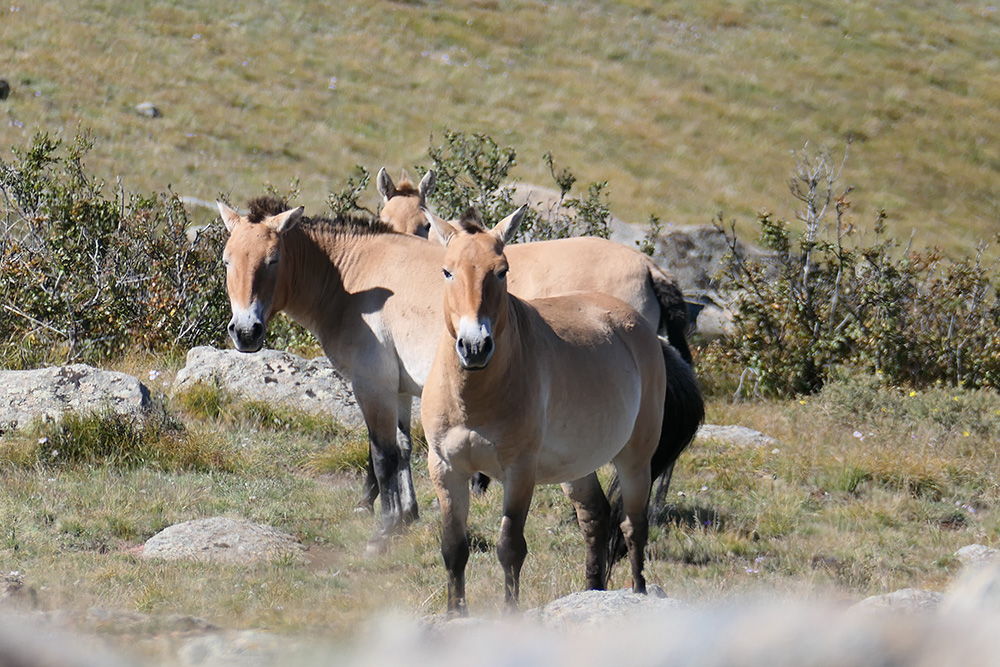
Central Mongolia and Gobi Desert
My drivers and I will pick you up from the Chinggis Khan airport, then take you to your hotel. If you are ready for adventure, we will go straight to the Gandan Monastery for Buddhist monks’ morning chanting. Ninety percent of Mongolians are Buddhists followers. In the afternoon,

Nauryz Holiday Short trip
Upon your landing at Chinggis Khaan International Airport in Ulaanbaatar, I will pick youup and take you to your selected hotel in downtown Ulaanbaatar. I would suggest youeither Best Western or Khuvsgul lake Hotel due to their accessibilty and convenient location in the heart of Ulaanbaatar

NOMAD’HASHI TRAVEL, 3 DAYS NATIONAL PARKS EXCURSION (WEST)
My drivers and I will pick you up from your preferred location in Ulaanbaatar. Then we will start our three-day private excursion by driving to Hustain Nuruu National park where you can witness the last remaining wild horse species
Testimonials
"lorem ipsum dolor sit amet, consectetur adipiscing elit. donec sed finibus nisi, sed dictum eros. fermentum nulla non justo aliquet, quis vehicula quam consequat duis ut hendrerit. ac feugiat ante. donec ultricies lobortis eros, nec auctor nisl semper ultricies. aliquam sodales nulla dolor.", "in non pulvinar purus. curabitur nisi odio, blandit et elit at, suscipit pharetra efficitur elit. quis blandit erat. donec laoreet libero non metus volutpat consequat in vel metus. sed non augue id felis pellentesque.", "donec ultricies lobortis eros, nec auctor nisl semper ultricies. aliquam sodales nulla dolor, sed vulputate sapien efficitur ut. etiam tincidunt ligula ut hendrerit semper. quisque luctus lectus non turpis bibendum posuere. morbi tortor nibh, fringilla sed pretium sit amet, pharetra non ex. aliquam ornare nunc nibh, sit amet porta diam pretium in.", what are you waiting for.

- Staying with a Mongolian Nomadic family tour Hot
- Holiday with Mongolia's nomadic family tour
- Springtime Nomadic Adventures Hot
- Mongolia Naadam Festival tour 2024 Hot
- Gobi Desert and Grand Naadam Festival tour 2024
- Ancient Capital of Mongol empire tour
- Horse Trekking in the Orkhon Valley New
- Sacred Rivers Horse Trek
- Trekking in the Altai mountains tour
- Mongolia honeymoon tour Hot
- Discover True Mongolia (September) Hot New
- Gobi Odyssey (6 days) Hot
- Discover True Mongolia tour 2024 Hot
- Mongolian Gobi desert & Beijing Highlights tour New
- Endangered species in focus tour Hot
- Karakorum & Bayangobi desert gateway (4 days)
- The Highlights of Central Mongolia tour
- City tour of Ulaanbaatar Hot
- All group tours enlisted here for your and linkable to tour calendar page
- Mongolia visa and assistance
- Getting to Mongolia
- Medical info
- Climate of Mongolia
- Mongolian food and meals
- Mongolia customs
- Mongolia Accommodation Guide
- ( Suggested hotels )
- China visa assistance
- Getting to China
- China Travel Medical Info
- China Weather and Climate info
- Chinese Food Info
- China Customs
- Accommodation in China
- Russia visa assistance
- Getting to Siberia
- Climate of Siberia
- Food info for Siberia travel
- Russia customs
- Accommodation in Siberia
- Flights to Mongolia
- Trains to Mongolia
- Mongolia FAQ
- Travel Insurance
- Mongolia overview
- Mongolian culture
- Mongolia travel inspiration
- Mongolian History
- China overview
- Chinese Culture
- China Travel Inspiration
- ( China Destinations )
- Siberia overview
- Siberia travel inspiration
- Siberian culture
- Travel photos and Videos
- Why travel Mongolia with us
- Company profile
- Meet the team
- Responsible Travel
- Cooperate with us
- Subsidiaries
- Book a tour
- Tailor-made tours form
- Tour calendar
- Payment Instructions
- Terms and conditions
FAQ: The Differences between Mongolia and Inner Mongolia
Posted by Selena Travel / 04 28, 2024
Mongolia vs. Inner Mongolia: Are they the same? What`s the difference?
Outer Mongolia (Mongolia) and Inner Mongolia are two distinct regions, each with their own unique culture, history, and attractions. If you're planning a trip to this part of the world, it's important to understand the differences between these two regions to ensure that you have the best possible travel experience.
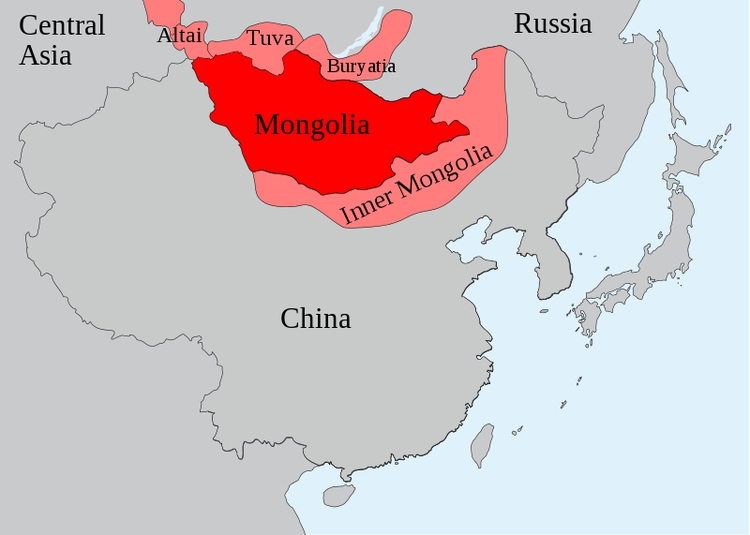
1. Outer Mongolia:
- Country: Outer Mongolia, also known as Mongolia, is a landlocked country in East and Central Asia.
- Independence: It gained independence from Chinese rule in 1921, with support from the Soviet Union.
- Capital: The capital of Mongolia is Ulaanbaatar.
- Culture: Mongolia has a rich nomadic and cultural heritage, known for its traditional practices such as nomadic herding and the Naadam festival.
2. Inner Mongolia:
- Autonomous Region: Inner Mongolia is an autonomous region of China, located in the northern part of the country.
- Population: It is home to a significant population of ethnic Mongols, but the majority of the population consists of Han Chinese.
- Capital: The regional capital is Hohhot.
- Autonomy: While Inner Mongolia has a degree of administrative autonomy, it is ultimately under the jurisdiction of the People's Republic of China.
- Culture: Inner Mongolia also has a rich cultural heritage, with influences from both Mongolian and Chinese traditions.
Key Differences:
- Political Status: Outer Mongolia is an independent country, while Inner Mongolia is an autonomous region within China.
- Sovereignty: Outer Mongolia is a sovereign state, and its government operates independently. Inner Mongolia, being part of China, falls under Chinese sovereignty.
- Demographics: Outer Mongolia is primarily populated by ethnic Mongols, while Inner Mongolia has a more diverse population, including a significant Han Chinese majority.
- International Recognition: Outer Mongolia is a member of the United Nations and is recognized as a separate, independent country. Inner Mongolia is not a sovereign state and is part of the People's Republic of China.
It's important to note that the terms "Outer" and "Inner" Mongolia historically referred to the geographical locations relative to China, with "Outer" being farther from the Chinese heartland and "Inner" being closer. Today, these terms are primarily used to distinguish between the independent country of Mongolia and the Inner Mongolian Autonomous Region within China.
Mongolia : A Land of Endless Possibilities
Mongolia, or more properly the Republic of Mongolia, is a landlocked country located in central Asia, bordered by Russia to the north and China to the south, east, and west. With vast landscapes, nomadic culture, and a rich history, Mongolia is a destination that has something for everyone. The population of the country is roughly 3.4 million while the territory is approximately 1.56 million square kilometers (603,000 square miles), making it the 18th largest country in the world by land area.
Mongolia is also home to a rich nomadic culture , with many locals living in traditional gers (yurts) and practicing ancient customs such as eagle hunting and horse racing. Visitors can learn about these customs and traditions by staying with local families or on a guided cultural tour.
One of the main attractions of Mongolia is its natural beauty. From the Gobi Desert to the Altai Mountains , the country is home to a diverse range of landscapes, including vast grasslands, rugged mountains, and deep canyons. Visitors can explore these landscapes on horseback, by hiking, or on a guided tour.
Inner Mongolia: A Fascinating Cultural Crossroads
Inner Mongolia is an autonomous region in northern China, bordering Mongolia to the north and west. Although it shares some cultural similarities with Mongolia, Inner Mongolia has its own unique history and attractions.
One of the main attractions of Inner Mongolia is its cultural diversity. The region is home to many ethnic groups, including Mongolians, Han Chinese, and Manchus, each with their own unique customs and traditions. Visitors can learn about these different cultures by attending traditional festivals or by visiting local museums. Inner Mongolia is also home to some stunning natural landscapes, including the part of the Gobi Desert and the Hulunbuir Grasslands. Visitors can explore these landscapes on a guide tour or by renting a car and driving themselves.
Lastly, Inner Mongolia has a population of around 25 million people with a territory of 1.18 million square kilometers (457,000 square miles), which is roughly equivalent to the size of South Africa or three times the size of Japan.
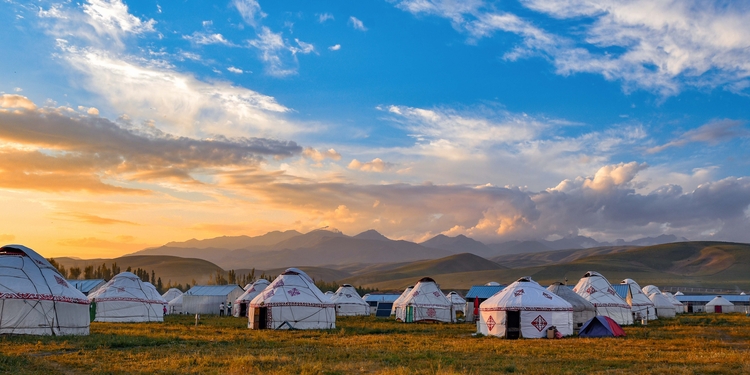
Why Choose Mongolia?
While both Mongolia and Inner Mongolia offer unique cultural experiences and natural beauty, there are some key differences between the two regions. Mongolia is a separate country with its own distinct culture and history, whereas Inner Mongolia is an autonomous region of China. Mongolia also offers more opportunities for adventure tourism , such as trekking and horseback riding , while Inner Mongolia is more focused on cultural tourism.
If you're looking for a truly authentic travel experience with plenty of opportunities for adventure and cultural immersion, Mongolia is the perfect destination for you. With its vast landscapes, rich nomadic culture, and friendly locals, Mongolia offers endless possibilities for travelers who want to explore off the beaten path.
In conclusion, whether you choose to visit Mongolia or Inner Mongolia, you're sure to have a memorable travel experience. By understanding the differences between these two regions, you can choose the one that best suits your travel style and interests. So why wait? Start planning your trip to Mongolia today and discover all that this fascinating destination has to offer!
Related Tours
Discover true mongolia tour 2024.
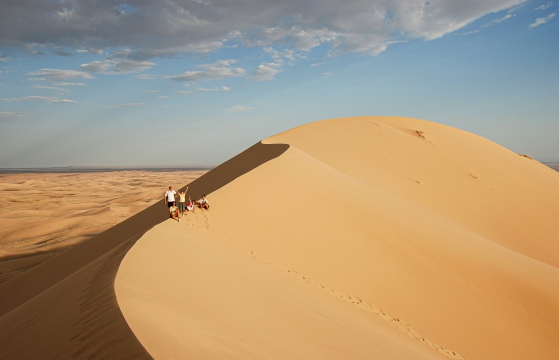
Join us on this epic tour through Mongolian untouched wilderness, sleep under millions of stars and ...
Mongolia Naadam Festival tour 2024
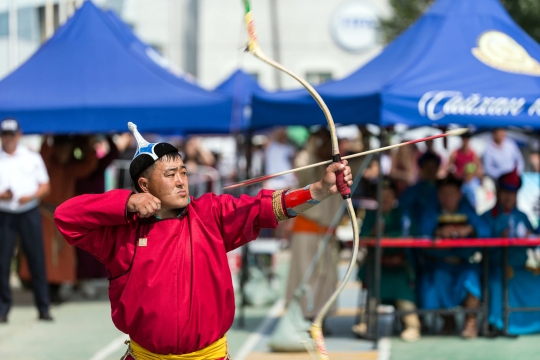
Selena Travel Mongolia invites you to join the Great Naadam Festival tour which offer a unique oppor...
Beijing Highlights & Mongolian Gobi
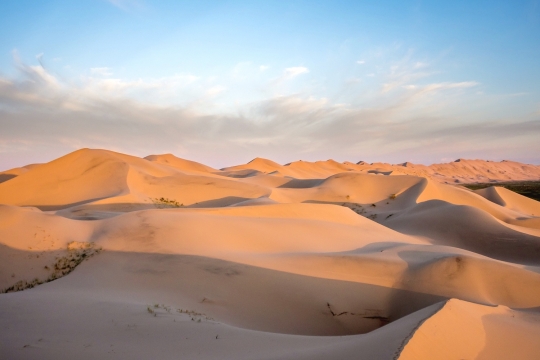
The tour includes the very best of Beijing sightseeing including Forbidden City and Great Wall and t...
Staying with a Mongolian Nomadic family tour
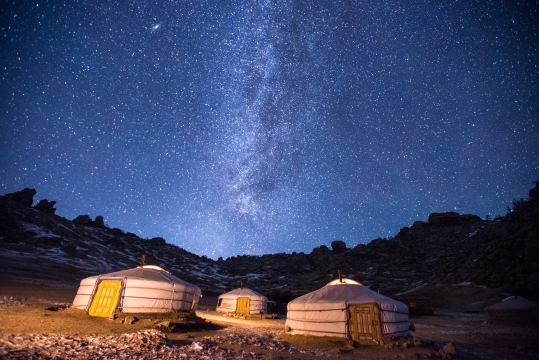
Experience the authentic nomadic lifestyle in Mongolia with our family stay tour. Immerse yourself i...
Sign Up for Our Newsletter
Stay in touch with us

We are members of

Mongolia Tours & Vacations

Landing in the concrete jungle of Ulaanbaatar, you might wonder where Mongolia keeps its famous wide-open spaces.
But just wait until you catch your first glimpse of sunrise over the famous Mongolian steppe. There’s no other view on Earth quite like it: mile after mile of rolling grassy plains, dotted with the white domes of gers and broken up with golden dunes or the craggy peaks of Tavan Bogd and the Altai mountains. It’s probably no surprise that our Mongolia tours are mostly about the getting out into the wild – soaking in the hot springs of Tsenkher or hiking through the Khogno Khan – but you’ll find there’s more to this country than just good views. With its epic history, brief communist past and a (proudly) democratic future, Mongolia is ready to greet the 21st century with plenty to offer the traveler.
Our Mongolia trips
Let's create an exclusive trip for your group.
Mongolia tour reviews
Filter by rating
Wild Mongolia
Meet the husband-and-wife team behind our Mongolia Naadam Festival adventure
The top 8 destinations for travel in July 2024
Meet the travellers who booked an adventure without an itinerary.
Discovering the true meaning of hospitality, in the heart of Western Mongolia
Vegetarian? Here’s how to travel in Mongolia (without going hungry)
7 festival trips that should definitely be on your radar
10 weird and wonderful facts about Mongolia
What it’s like to road trip through Mongolia
Mongolia at a glance
Capital city.
Ulaanbaatar (population 1.2 million)
(GMT+08:00) Irkutsk, Ulaan Bataar
CALLING CODE
Electricity.
Type C (European 2-pin) Type E (French 2-pin, female earth)
Learn more about Mongolia
Best time to visit mongolia.
Mongolia has an extreme continental climate due to its inland location. The best time for traveling is from May to October when the weather is pleasant. Due to the popularity of the Naadam Festival, July is the busiest time to go; it can get crowded, but Ulaanbaatar buzzes with an incredible vibe during this time.
The wet season is from July to August and although it rains frequently during this time, the rain turns the countryside into a pleasant shade of green. It can get extremely cold from June to October, with snowstorms sometimes grounding flights and bringing transport systems to a halt.
Culture and customs
Mongolia is known for its strong nomadic traditions, but life has recently become more urbanized for many citizens in this sparsely populated country. Almost 50% of the population live in or near an urban centers, while the other 50% live a semi-nomadic lifestyle in the countryside; although, settled agricultural communities can be found in rural areas and are growing each year. Despite this change in lifestyle, the rich nomadic heritage remains strong and traditional Mongol songs, dance, stories and clothing are still celebrated, especially during festivals and national holidays.
Many Mongolian people are Buddhist - this is evident in the monasteries and temples that populate the urban areas as well as the remote regions. Shamanism is also still in existence in some of the more isolated regions of Mongolia where the proud cultures have been somewhat protected from modern influences.
A common thread that links most Mongolians is respect for family and the importance of hospitality. Probably borne from the nomadic way of life, sharing with others and receiving guests with grace is a common theme that recurs in Mongolian society. Harsh conditions, a changeable climate and the uncertainty of nomadic life mean that most Mongolians go out of their way to provide a safe haven for family, friends and guests. It is for this reason that turning down food or not accepting a warm welcome is not advisable.
Eating and drinking
Intrepid believes that one of the best ways of experiencing a country is by eating. Whether you're sampling street food, savoring a cheap eat or indulging in a banquet, there are endless options to choose from wherever you are in the world.
Mongolian food will probably be very different to what you’re used to. Due to many Mongolians living a nomadic lifestyle, access to ingredients and different modes of cooking are limited. Fermented milk products and meats such as goat, mutton and horse are commonly eaten. Vegetarians might find eating difficult here, especially since refusing food is considered rude when visiting people’s homes. The cafes and eateries of Ulaanbaatar offer more variety and should be frequented.
Things to try in Mongolia
These steamed meat dumplings are usually served during festive times, but can be found in restaurants and cafes all year round.
2. Khuushuur
Similar to buuz, these meat-filled dumplings are fried, not steamed. Served in the cafes of Ulaanbaatar, these pastry pockets are a cheap, flavorsome snack.
Geography and environment
Bordered by China and Russia , Mongolia is a land of mountains and plateaus, grasslands, marshes and deserts. Even though Mongolia is landlocked, Lake Khovsgol (one of Asia’s largest freshwater lakes) provides 70% of Mongolia’s fresh water. This ancient lake provides much of the drinking water for the animal and human population, with the surrounding areas providing lush habitats for wolves, ibex, deer and bears. Due to Mongolia’s significant seismic activity, there are also many hot springs and volcanoes throughout the country.
Mongolia is one of the least densely populated countries in the world, leaving much space for nomadic herders to roam. The fast-growing capital city of Ulaanbaatar is an exception, being home to high-density housing, universities and financial institutions. As an economic centers and transport hub, Ulaanbaatar has all the modern conveniences expected of an international city.
History and government
Early history.
The area now known as Mongolia has been inhabited for more than 800,000 years. Archaeological evidence, such as rock paintings, points to groups of hunters and gatherers living throughout Mongolia in prehistoric times.
Mongolia’s early history is colored by battles and invasions, with various nomadic empires laying claim to the land.
The most famous of these was the Mongol Empire, created by Genghis Khan in 1206. This empire was known as the largest land-based empire of its time and had great success invading and claiming foreign territory, before declining due to infighting, disunity and the rise of neighboring territories.
Recent history
Modern Mongolia is an interesting mix of Mongol, Chinese and Russian influences.
Rising up to gain independence from decades of communist rule, modern Mongolia is becoming more fast-paced and globalized as the years go by.
Holding its first democratic election in 1990, Mongolia now enjoys a time of relative peace and stability, with tourism, agriculture and mineral resources providing more abundance and improvements in infrastructure and living conditions.
Top 10 natural wonders of Mongolia
1. lake khovsgol.
This shimmering, azure jewel of Mongolia is simply stunning. Surrounded by majestic mountains and fresh, alpine meadows, Lake Khovsgol is a photographer’s dream and the perfect playground for nature lovers and adventurers.
2. Selenge River
This powerful river in Northern Mongolia is surrounded by lush landscapes and agriculture. Home to a wide variety of wildlife and birds, this fertile area shows Mongolia in all its natural glory.
3. Gobi Desert
Covering a large part of southern Mongolia, the atmospheric Gobi Desert is a vast, barren expanse of dunes, rocks and gravel. Surprisingly, there are traces of life here, from flocks of cashmere goats to rare Gobi bears. Think you’ve seen deserts before? The Gobi Desert is simply like no other in the world.
4. Bayan Olgii
Remote, rugged and rich in archaeological treasures, this isolated part of Mongolia rewards the patient traveler with impressive historic sites, panoramic vistas, unaffected people and a fascinating culture.
5. Altai Tavan Bogd National Park
Home to lakes, glaciers, alpine forests and dramatic valleys, the rugged landscapes of this national park will mesmerize visitors. Home to eagles, deer, moose and ibex, this stunning national park showcases Mongolia’s untamed beauty at its finest.
6. Uran Uul
This extinct volcano is no longer threatening - it hasn’t erupted for centuries and is now covered in verdant grass and lush greenery. Hike to the rim and enjoy the views of the surrounding valley.
7. Darkhad Depression
The 200-odd lakes of the Darkhad Depression possess a mystical, romantic beauty. The Mongolian steppe and surrounding Taiga forest provides the ideal environment for reindeer-breeding nomads who frequent this area throughout the year.
8. Terkhiin Tsagaan Lake
This lake in Central Mongolia is a place of peace, stillness and beauty. Its uncrowded shores are a great place to spot the wide range of aquatic birds that call this picturesque lake home.
9. Tsenkher Hot Springs
The hot springs of Tsenkher are the real deal. Natural, non-commercial and remote, the open-air springs offer hot and steamy rejuvenation amid unspoiled rugged mountain scenery.
10. Gurvan Saikhan National Park
The huge variety of flora and fauna within this national park make it a popular tourist spot. See finches, vultures, gazelles, wild camels and the elusive, endangered snow leopard.
Mongolia has loads of unique things to buy that you’re not likely to find anywhere else in the world. Look out for the items below in the shops and markets of Mongolia.
It's a good idea to check with your local customs officials to ensure that you are able to bring certain items back into your home country. The United States and Canada generally have strict customs laws.
Things to buy in Mongolia
1. Traditional clothing
Vibrant and unique, Mongolian belts, boots and hats are great mementos of your visit.
Supporting local artisans is a good way to give back to the local economy. Vibrant paintings by Mongolian artists can be found in galleries and markets.
3. Cashmere
Mongolia’s cashmere is among the world’s finest, so why not pick up a scarf, sweater or wrap before heading home.
Felt products are easily found in most shops and markets of Mongolia. Delicate felt slippers are super soft and make great gifts for friends.
Festivals and events in Mongolia
Tsagaan sar.
One of the most important Mongolian celebrations, the White Moon holiday (Lunar New Year) marks the end of winter.
Mongolians typically celebrate by feasting on regional specialties and enjoying traditional song and dance with family and friends.
Naadam Festival
Dating back centuries, this traditional Mongol event is held in Ulaanbaatar with smaller versions also held throughout the countryside.
This celebration of sport and fitness features wrestling, horse riding and archery competitions, as well as traditional song and dance. Visit on our Mongolia's Naadam Festival trip.
Further reading
Mongolia travel faqs, do i need a covid-19 vaccine to join an intrepid trip.
Trips from 1 January 2023 onwards
From 1 January 2023, Intrepid will no longer require travelers to provide proof of vaccination against COVID-19 (excluding all Polar trips and select adventure cruises).
However, we continue to strongly recommend that all Intrepid travelers and leaders get vaccinated to protect themselves and others.
Specific proof of testing or vaccination may still be required by your destination or airline. Please ensure you check travel and entry requirements carefully.
Do I need a visa to travel to Mongolia?
Citizens of the UK, Ireland, Australia, New Zealand, South Africa and most EU countries will need a visa to enter Mongolia as a tourist for up to 30 days. Citizens of Canada will not need a visa for visits up to 30 days and citizens of the USA will not need a visa for visits of up to 90 days. Citizens of other countries should check with the relevant consulates as to whether a visa is required. If a visa is required, you will need to obtain it in advance. There is no visa on arrival in Mongolia at land or air borders.
MONGOLIA - LETTER OF INVITATION (LOI): Most embassies do not require a LOI. However, should you be required to present one with your visa application please contact us. There may be a fee for this service. In order for us to provide a LOI through our local partners we will require a clear, color scan of your passport along with an indication of at which embassy you will be applying for your visa. Please allow up to 3 weeks for your LOI to be processed after which you will be able to apply for your visa.
MONGOLIAN VISA EN-ROUTE: You may be able to apply for your Mongolian visa in Beijing en-route if you have time here before your trip. Please plan carefully and check the current embassy requirements. You will need to organize this yourself and ensure you have all the correct documentation to obtain the Mongolian Visa.
INFORMATION REQUIRED FOR MONGOLIAN VISA APPLICATION: You will need to apply for a Single Entry Tourist Visa (J) that covers the duration of your stay in Mongolia. Visas are usually valid for 3 months from the date of issue and enable to you to stay for up to 30 days from date of entry.
DOCUMENTS REQUIRED FOR MONGOLIAN VISA APPLICATION: You may be required to provide a copy of your itinerary, indicating the dates of your tour, along with your application.
Is tipping customary in Mongolia?
Tipping isn’t a local custom in Mongolia; however, the bars and cafes of Ulaanbaatar are used to receiving tips from tourists. Use your discretion and tip if you feel like it.
What is the internet access like in Mongolia?
Internet access is widely available in Ulaanbaatar. Some cafes have Wi-Fi, while many hotels and guesthouses have internet connectivity. Internet availability is far less common outside of Ulaanbaatar, so expect no access when leaving the city.
Can I use my cell phone while in Mongolia?
Cell phone coverage is generally good in Mongolia, although coverage may be patchy in remote or mountainous areas.
What are the toilets like in Mongolia?
Flushable, European-style toilets are common in the hotels and restaurants of Ulaanbaatar. Throughout the rest of the country, squat toilets are the standard, with the exception of some ger camps and homestays, where toilets may be simple holes in the ground. Please be aware that, in most cases, soap and toilet paper aren’t provided, so make sure you come prepared.
What will it cost for a…?
Can of beer = 1500 MNT Simple meal in a local restaurant = 4000 MNT Dinner at an international restaurant = 10,000 MNT
Can I drink the water in Mongolia?
Drinking tap water isn't recommended in Mongolia. For environmental reasons, try to avoid buying bottled water. Fill a reusable water bottle or canteen with filtered water. Ask your leader where filtered water can be found. It's also advisable to avoid ice in drinks and to peel fruit and vegetables before eating.
Are credit cards accepted widely in Mongolia?
Major credit cards are usually accepted by most large hotels and restaurants in Ulaanbaatar and some other cities, however smaller establishments may not have credit card facilities. Ensure you have other payment options when visiting small shops and markets, and when traveling through rural areas.
What is ATM access like in Mongolia?
Travelers can access ATMs in Ulaanbaatar; however, rural regions run on a cash economy, so prepare for this when leaving the city.
What public holidays are celebrated in Mongolia?
For a current list of public holidays in Mongolia go to: http://www.worldtravelguide.net/mongolia/public-holidays
Do I need to purchase travel insurance before traveling?
Absolutely. All passengers traveling with Intrepid are required to purchase travel insurance before the start of their trip. Your travel insurance details will be recorded by your leader on the first day of the trip. Due to the varying nature, availability and cost of health care around the world, travel insurance is very much an essential and necessary part of every journey.
For more information on insurance, please go to: Travel Insurance
How do I stay safe and healthy while traveling?
From Australia?
Go to: Smart Traveller
From Canada?
Go to: Canada Travel Information
From the UK?
Go to: UK Foreign Travel Advice
From New Zealand?
Go to: Safe Travel
From the US?
Go to: US Department of State
The World Health Organisation also provides useful health information.
Does my trip support The Intrepid Foundation?
Yes, all Intrepid trips support the Intrepid Foundation. Trips to this country directly support our global Intrepid Foundation partners, Eden Reforestation Projects and World Bicycle Relief. Intrepid will double the impact by dollar-matching all post-trip donations made to The Intrepid Foundation.
Eden Reforestation Projects
Eden Reforestation Projects are helping to mitigate climate change by restoring forests worldwide; they also hire locally and create job opportunities within vulnerable communities. Donations from our trips support restoration across planting sites in 10 countries around the globe. Find out more or make a donation World Bicycle Relief
World Bicycle Relief provides people in low-income communities with bicycles to mobilize school kids, health workers, and farmers in far-out areas – giving them access to vital education, healthcare, and income. Donations help provide Buffalo Bicycles – specifically designed to withstand the rugged terrain and harsh environment of rural regions – to those who need them most. Find out more or make a donation

Touropia Travel Experts
Discover the World
10 Best Places to Visit in Mongolia

Renowned around the world for its endless steppe, nomadic culture, and of course, Genghis Khan, Mongolia is a breathtakingly beautiful place to explore that will delight nature lovers and outdoor aficionados alike.
While it is precisely for its wild and rugged landscapes and endless nothingness that people visit Mongolia, the landlocked nation also has a number of gorgeous alpine lakes for you to enjoy, as well as towering mountains and the desolate Gobi Desert.
Map of Mongolia
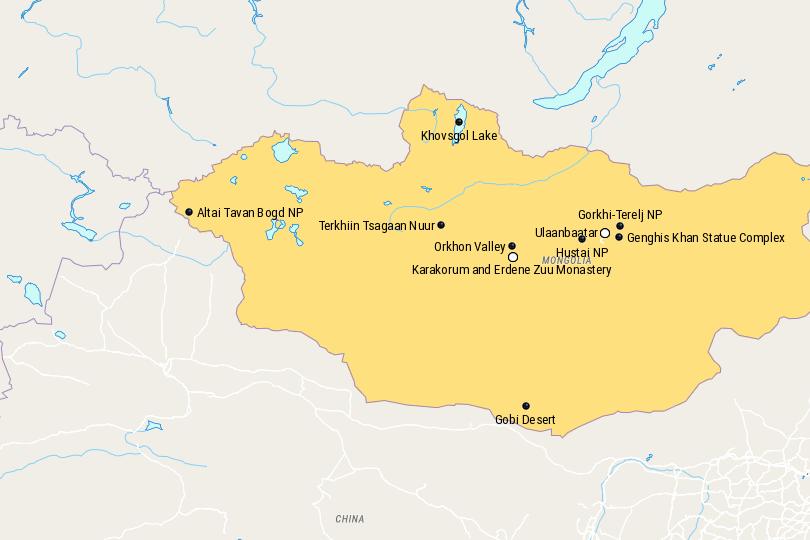
Hidden away among the vastness of the scenery are remote yurt camps for you to experience the time-honored traditions of Mongolian nomads and their famed generosity and hospitality. Plan your trip to this undiscovered Asian travel destination with our list of the best places to visit in Mongolia.
10. Karakorum and Erdene Zuu Monastery
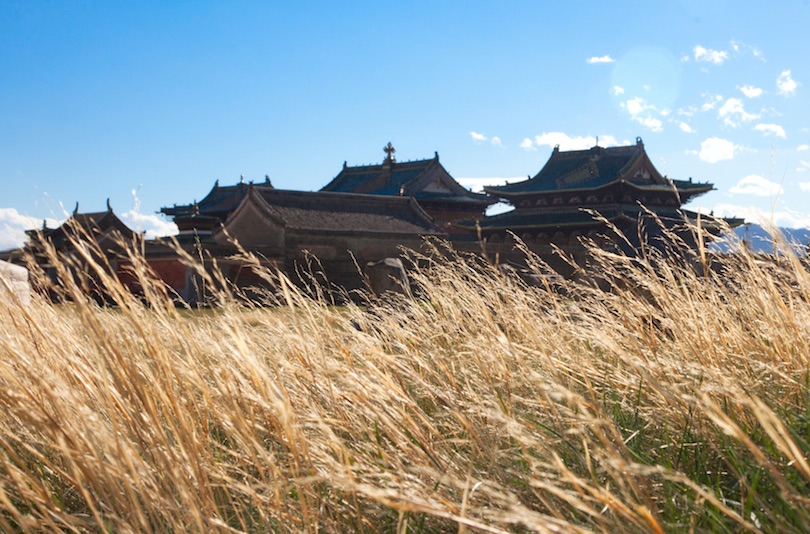
Once the capital of the Mongol Empire, Karakorum is a fascinating place that is certainly worth a visit if you’re interested in learning more about the history and culture of the Mongols. Known to locals as Har Horin, the ancient city was visited by Marco Polo all the way back in the 13th century. Nowadays, however, the once-great city is but ruins, with endless sky and steppe in every direction.
The main sight is the majestic Erdene Zuu Monastery, which was built out of the remnants of the ruined city in 1585; the plethora of stupas lining its long wall certainly do look incredible. One of the earliest surviving Buddhist monasteries in the country, Erdene Zuu has three beautiful temples, with lots of lovely statues and carvings.
Besides this impressive sight, Karakorum has some smaller ruined stupas, buildings, and archaeological sites for you to wander around, although these are decidedly less spectacular.
9. Terkhiin Tsagaan Nuur
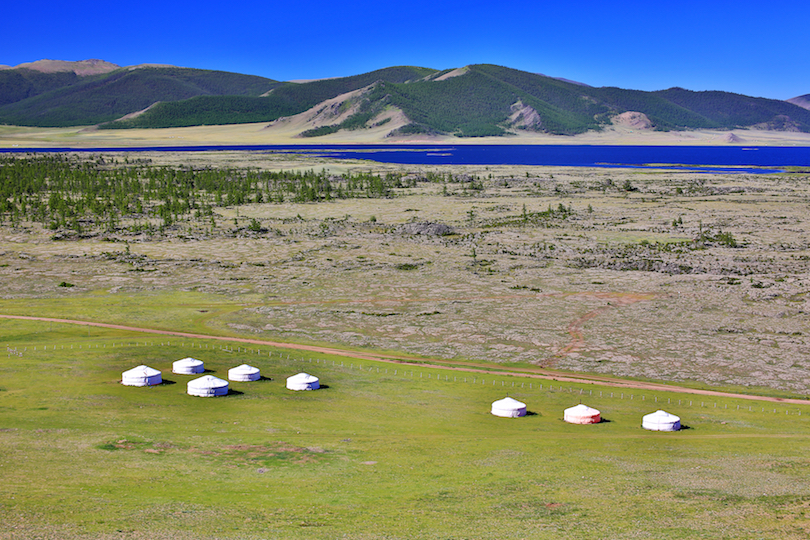
Meaning ‘Great White Lake’ in English, Terkhiin Tsagaan Nuur is aptly named, as its reflective waters beautifully mirror the skies and clouds above. Stretching into the distance, the lake’s tranquil waters are surrounded by gently rolling hills, and the idyllic scenery is perfectly complemented by the white yurts and scatterings of horses that line its shores.
Due to its remote nature, Terkhiin Tsagaan Nuur is a very peaceful place to camp for a couple of nights. There are several great hikes you can do in the surrounding area, with Khorgo Volcano particularly worth a visit.
In addition, many people go horseback riding around the freshwater lake or climb to the top of one of the nearby hills for an even better look out over the gorgeous scenery.
8. Orkhon Valley
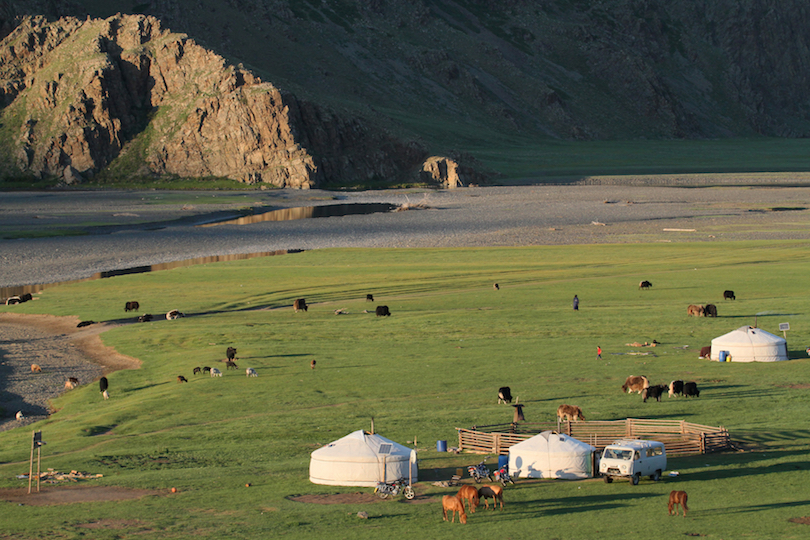
Lying almost slap bang in the middle of Mongolia, it’s in the scenic Orkhon Valley where the sacred mountain-forest of Otuken was believed to be. Ruling over the place where the ancestor spirits resided granted the ruler the divine right to rule on Earth. This meant that its possession was considered to be absolutely crucial to each Turkic state that rose, ruled, and declined amongst the steppe.
Consequently, a wealth of interesting historic sights and cultural landmarks litter its mountainous terrain. The eighth-century Orkhon monuments and the Tuvkhun Hermitage are the most impressive of the lot, alongside the ruins of Karakorum and Erdene Zuu Monastery.
There is something quite spiritual about traveling through the endless empty landscapes surrounding the valley; you barely see another soul for days other than the flocks of livestock and the herds of horses that meander across the steppe in between the occasional yurt.
7. Genghis Khan Statue Complex
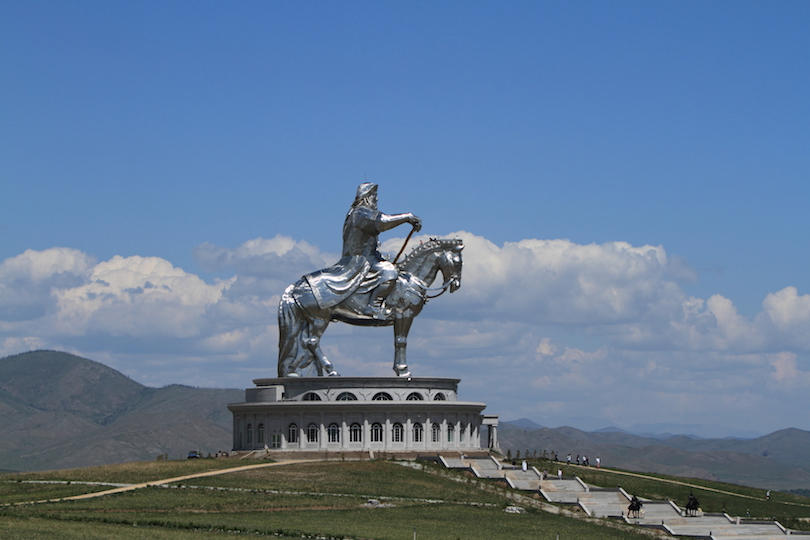
Simply breathtaking, the gigantic statue of Genghis Khan atop his horse glimmers in the light as he imperiously looks out over all the steppe and mountains surrounding the complex. Towering to a height of 40 meters, the statue was built in 2008 to honor the 800th anniversary of the founding of the Mongol Empire. Its sheer size and scale are certainly fitting of the man who rose to rule such a huge swathe of territory and is a national hero in the country.
The Genghis Khan Statue Complex lies around 50 kilometers outside of Ulaanbaatar. Once you arrive, you’ll find souvenir shops, a restaurant, and an archaeological museum for you to check out. From the top of the horse’s head, you can enjoy some awesome views out over the surrounding countryside, and a close-up view of Genghis Khan gazing out towards the horizon.
6. Ulaanbaatar
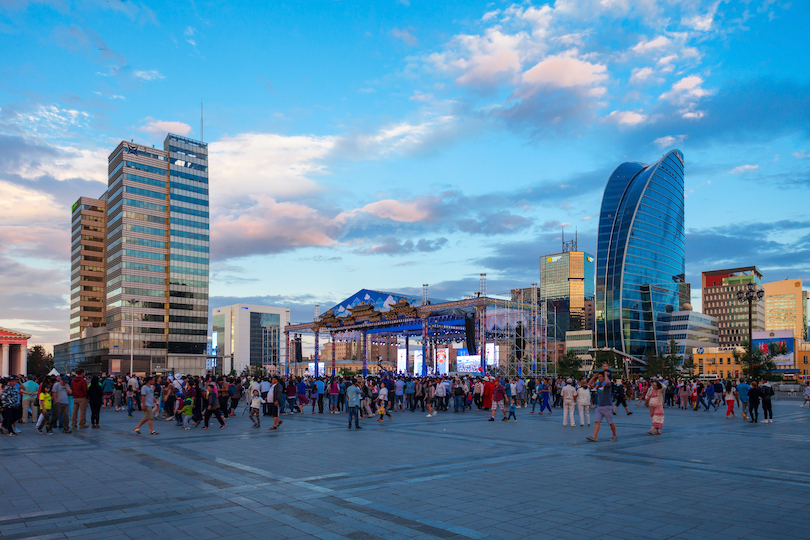
Home to almost half of the country’s population, the sprawling city of Ulaanbaatar is Mongolia’s capital, as well as its cultural, administrative, and commercial heart. Located in the delightfully named Valley of the Golden Cradle, at the point where the Selbe and Tuul Rivers meet, the city is a strange yet intoxicating mix of urban and nomadic lifestyles.
While its downtown is a bit of an eyesore, with Soviet-era buildings lying alongside modern monstrosities, there are some enchanting old monasteries scattered about here and there: Choijin Lama and Gandantegchinlen are the best of the bunch and tucked away in the endless sprawl, you can still find a yurt or two.
When it comes to its museums and art galleries, Ulaanbaatar is truly blessed. It is well worth spending a couple of days trawling its extensive collections and artifacts: the Bogd Khan Winter Palace and Mongolia National Modert Art Gallery are particularly delightful to peruse.
5. Altai Tavan Bogd National Park
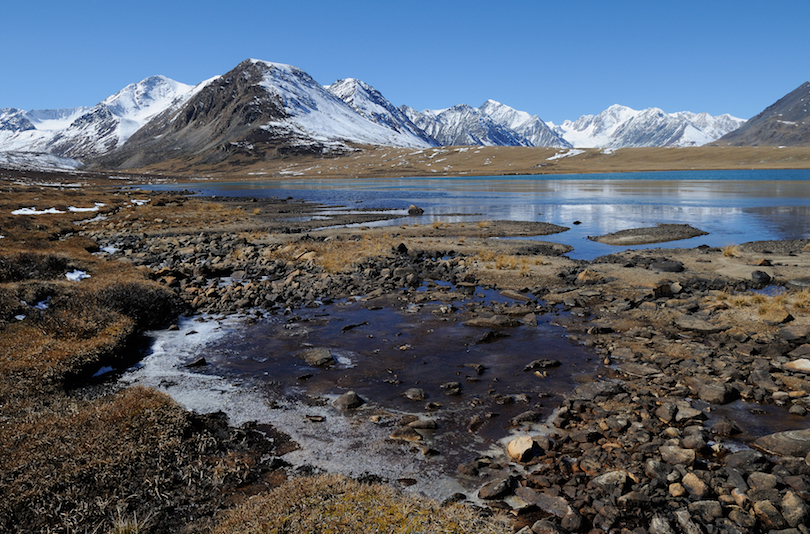
Covering a vast expanse of territory that includes everything from the Tavan Bogd massif to the glittering lakes of Dayan, Khoton, and Khurgan, Altai Tavan Bogd National Park will delight nature lovers and outdoor aficionados alike.
Located in the western corner of the country, the national park is home to some of the most spectacular scenery in Mongolia. The towering Tavan Bogd Mountains loom over the three large freshwater lakes that lie among them.
Due to its remote location, there is a very untouched and unspoiled feel about the place, with lots of wonderful fauna and flora to discover. You may be lucky enough to see ibex, brown bears, and grey wolves, with majestic golden eagles swooping overhead.
Besides the many stunning landscapes that lend themselves perfectly to hiking, rock climbing, river rafting, and skiing, the park is also a fantastic place to head if you want to gain a deeper understanding and appreciation for nomad life: there are many Kazakh and Tuvan families that you can either visit or stay with.
4. Khovsgol Lake
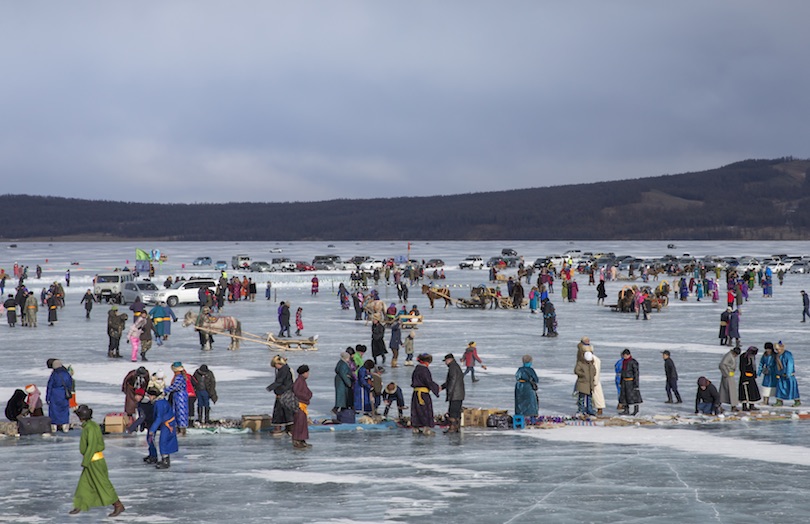
One of the largest lakes in the whole of Mongolia, Khövsgöl is often nicknamed ‘the younger sister,’ due to its proximity to the famous Lake Baikal that lies around 200 kilometers to its northeast in Russia. Surrounded by a glorious national park of the same name that is home to lots of towering mountains and sweeping valleys, Khövsgöl Lake is set in a stunning location.
While its waters are relatively poor in terms of fish and marine life, Khövsgöl Lake remarkably contains almost 70 percent of the country’s freshwater and was formed over two million years ago.
In stark contrast to the glimmering lake, the national park boasts a wealth of wildlife. While hiking along its scenic trails, you can sometimes spot ibex, elk, and the occasional brown bear, with incredible views of the lake and its many dramatic landscapes also on display.
3. Hustai National Park
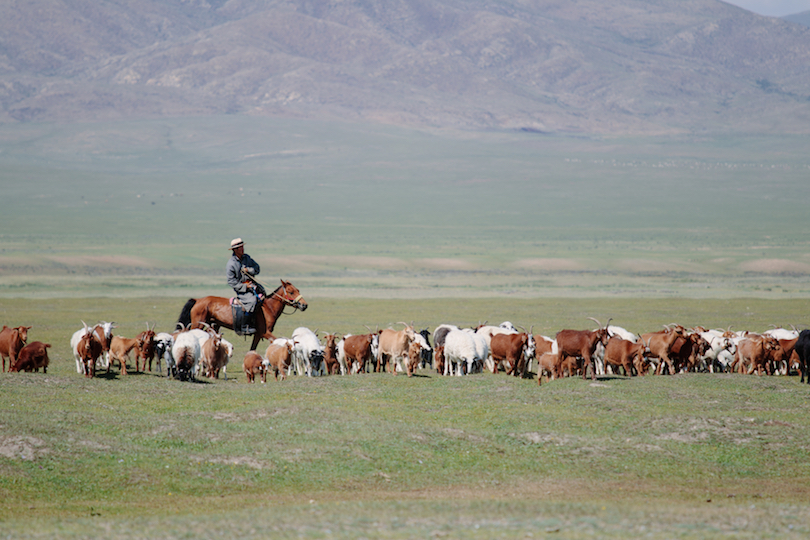
Lying just a short distance away from the capital of Ulaanbaatar, Hustai National Park is a fantastic place to head if you want to visit the renowned Mongolian steppe, while the beautiful Khentii Mountains add some variety to the scenery.
Traveling through the national park is an absolute delight as you pass small herds of wild horses making their way across the steppe with nothing else in sight other than faint mountains off in the distance.
The sheer expanse of nothingness is mind-boggling. While drinking in the magnificent scenery to your heart’s content is delightful, there’s always a slight feeling of relief when you finally come across a small cluster of yurts.
2. Gorkhi-Terelj National Park
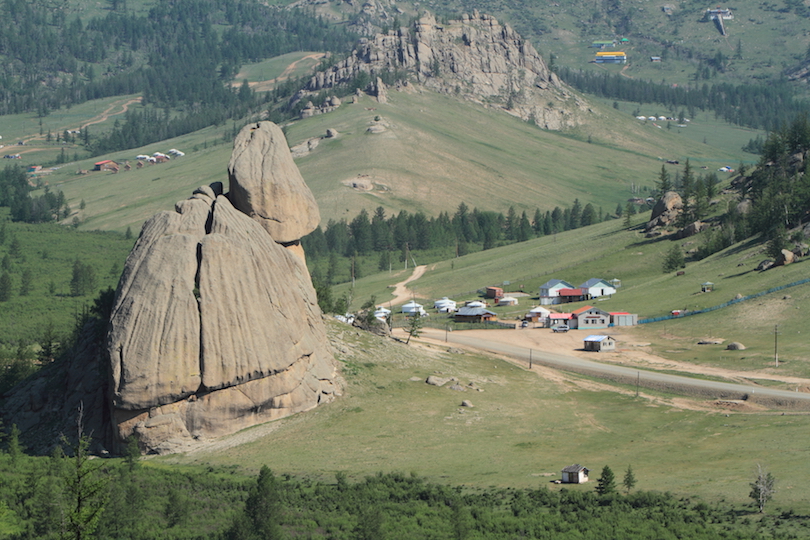
One of the most popular places to visit in Mongolia, Gorkhi-Terelj National Park’s alpine scenery is impressive. Its glorious mountain peaks are home to picturesque valleys, roaring rivers, and craggy rock formations, with charming yurt camps found here and there. As such, there are a plethora of great outdoor activities for you to try out, with hiking, rock climbing, and river rafting all being popular pastimes.
Horseback riding through the epic scenery is an unforgettable feeling and really is a must if you want to have the quintessential Mongolian experience. Although parts of the park can get busy due to its popularity and proximity to Ulaanbaatar, most of its dramatic landscapes remain pristine and untouched.
With glacial lakes, hot springs, and a Buddhist monastery also on offer, Gorkhi-Terelj National Park really is a natural paradise just waiting to be explored.
1. Gobi Desert
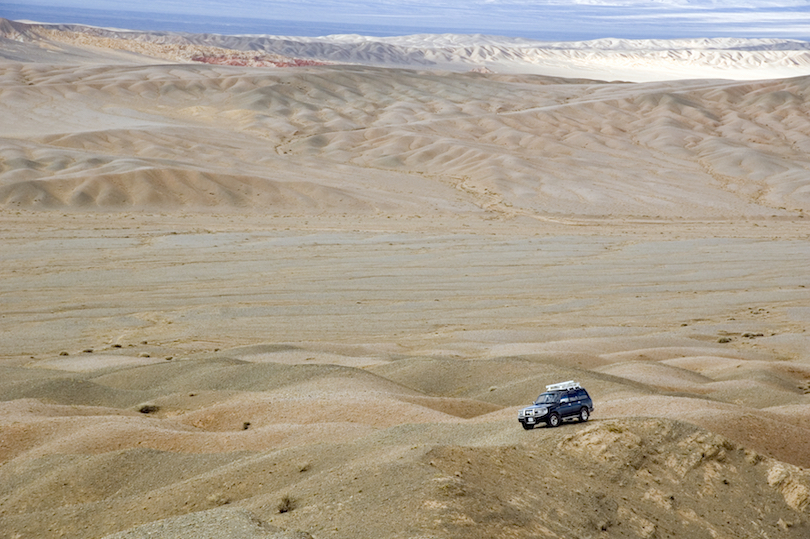
The harsh, unforgiving climes of the endless Gobi Desert certainly aren’t for the faint-hearted; that’s what makes them so exhilarating to explore. With infinite dunes, ancient rock formations, and desolate desert stretching out before you, venturing into the Gobi Desert is the adventure of a lifetime.
Tucked away among this bleak yet strangely alluring landscape are a wealth of amazing natural sights, with rugged cliffs, plunging canyons, and cavernous caves all on show alongside picturesque desert oases and saltwater rivers.
While the main attractions are the incredible singing sand dunes of Khongor and the marvelous scenery of Yolyn Am and Dungeneegyn, you really can’t go wrong in the Gobi Desert (providing you stick to the path) as everything is just so majestic.
Share this post:
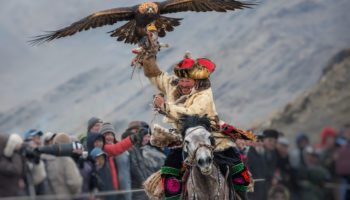
15 Best Things to Do in Mongolia
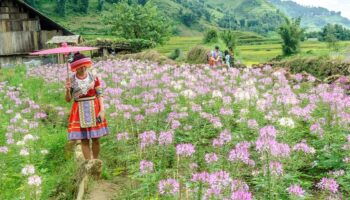
29 Best Places to Visit in Southeast Asia
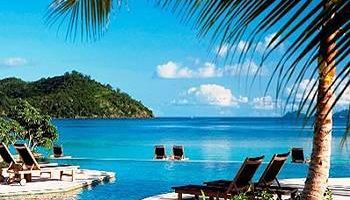
10 Best All Inclusive Resorts in Fiji
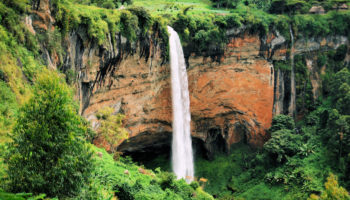
10 Most Beautiful National Parks in Uganda
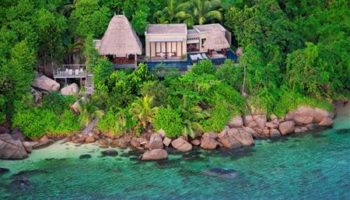
10 Best Seychelles Luxury Resorts
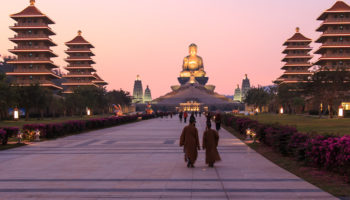
10 Best Places to Visit in Taiwan
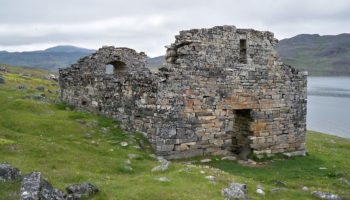
Discover the Hvalsey Church in Greenland
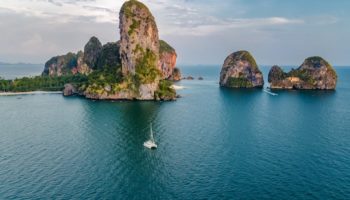
15 Best Countries to Visit in Asia
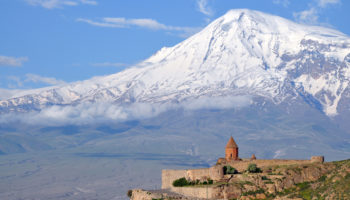
10 Best Places to Visit in Armenia
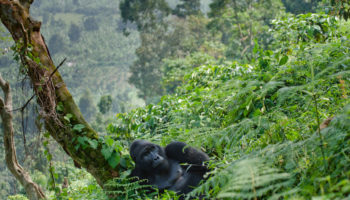
24 Best Places to Visit in Africa
Reader interactions, leave a reply cancel reply.
Your email address will not be published. Required fields are marked *
This site uses Akismet to reduce spam. Learn how your comment data is processed .
Mongolia Tours & Trips
Mongolia is a land of nomads awaiting your adventure, camping out at night and trekking through the day. There’s river rafting, mountain bike and motorcycle riding on tough offroad trails, and camel trekking through the Gobi Desert. There's also monasteries and ancient ruins to explore.
192 Mongolia tour packages with 252 reviews

- In-depth Cultural
Nomadic Mongolia
Fabulous trip that showcases the best of beautiful Mongolia, from the capital UlaanBaatar to camel rides and sand dunes in the Gobi, an icy goge and hot springs, monasteries and visits to local nomadic families, ger camps and amazing skies and scenery. What an adventure!
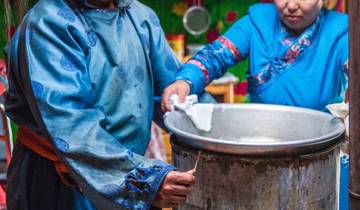
- Christmas & New Year
Essence of Mongolia - 5 Days
Excellent experience and learn a lot of things about Mongolia that you can't really find online. The rides are so much fun!

- Local Living
Wild Mongolia
Intrepid's Wild Mongolia tour was above and beyond my expectations. Our guide TEM, our drivers and staff we met along the way did all they could to make our tour interesting, educational, adventurous, safe and lots of fun. Mongolia is so much more than I expected. I never felt like we we roughing it. Accommodations were unique, scenic and sufficient. The homestays were a challenge that bonded the group and the families. The activities gave us a variety of experiences. I highly recommend is you want a challenging, adventurous tour with not too much physical exertion.

Essence of Mongolia - 7 Days
We signed up for the 7-day "Essence of Mongolia" tour. Our tour guide, Shuree, and driver, Maga, were absolutely amazing. We appreciated the flexibility of the tour schedule -- the activities were nicely spread out and were not back-to-back -- so we never felt that we had to be constantly rushing from place to place. We also throughly enjoyed our experiences staying with the nomad families. The families were very warm and friendly, and it was nice to see how each family was slightly different from one another (some families were bigger, each family had different animals that they reared, etc). Shuree, our tour guide, was also incredibly attentive to our needs and interests over the course of the tour. For example, I had told her at some point that I liked the history of the Mongol Empire, so she took a lot of time and effort to go through all the exhibits with me when we were at the various museums (and also told me stories about the different Khans during our car rides). There were so many other wonderful examples like this. Overall, my husband and I had an amazing experience. The tour provided us glimpses into different parts of Mongolian history and culture, and really, the "Essence of Mongolia". Our guide and driver were always present and caring, and we always felt welcomed and well taken care of. Thank you, Tour Mongolia!

Customized Mongolia Gobi Desert Adventure with Private Guide & Driver
I had an amazing experience!! Everything was planed and executed perfectly, my guide and driver Deema and Khangai were wonderful it was a pleasure to share my trip with them. I learned a lot and experienced some of the most breathtaking views I’ve ever seen. I strongly recomend this tour to anyone interested.
- Book With Flexibility This operator allows you to rebook your dates or tours with them for free, waiving change fees.
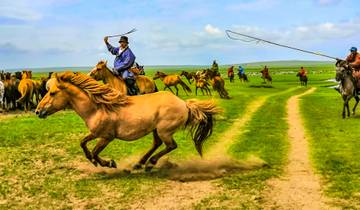
Tailor-Made Private Mongolia Tour of Nomadic Gobi & Nature
We had a great time in mongolia with a great driver and tour guide! Mongolia is an absolute stunner!

Golden Voyage tour
Unforgettable tour in amazing Mongolia with the wonderful tour operator. 2600 km, beautiful nature, responsive people. Special thanks to our guide Gandulam and driver Bagi.
Looking for tours beyond just Mongolia?
Explore tours with itineraries going through multiple countries, including Mongolia.

Mongolia's highest peak, Climb to Mt.Khuiten
That was an extraordinary trip with Discover Altai Team. The Altai region is so beautiful, the nomadic families were very welcomed. I can't recommend enough the team and trip organization. My personal tips are: pack enough warm clothes, the night gets cold in tent. We had an amazing experience in this region and definitely recommend for everyone!!!
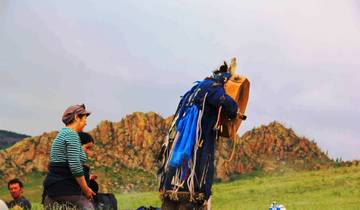
Shamanic Ritual Tour in Mongolia
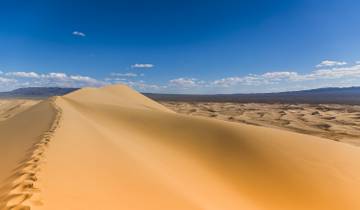
Gobi Tour 5D/4N
Tour is great!! Especially guides are so nice people. They introduced lots of things and very care for me always. First day was almost only moved by car. So If you want to came Gobi, you should take a minimum 5 days tour. Additionally, before I thought could came for my self, but actually ir impossible. Should take tour because No public buses and always off road, Moreover there is no town, Should find gel hotels.

Eternal Blue Sky tour
Mongolia is a hidden gem tucked away between Russia & China, this beautiful country of 3 million inhabitants has lots to offer! Our travel agent Nomadic of Blue Skies designed an itinerary for 8 of us family members, ages ranging from 17 – 85! Mr. Uuganbayr Batbold (Boldoo), Director of the agency was personally interacting with me to plan the itinerary. We set off from Ulaan Baatar in two vehicles & explored central Mongolia for the next 7 days. The arrangements were superb, the vehicles were in good condition & we had skilled drivers Kuko & Pujai to transport us safely over the off road sections. We covered Terelj National Park, Khustai National Park to see the wild horses, at Elsen Tasarkhai we climbed the sand dunes, visited the Erdene Zuu Monastry, enjoyed the hot springs at Thenkher & had a stop over at picturesque Ugii Lake. The highlight of our trip was a visit to a typical nomad ger(tented dwelling). The couple welcomed us and served us some local delicacies. Our senior English speaking tour guide Mr. Tuvshoor was very professional and well informed about Mongolia. He was very attentive to our every request! The junior guide Ms Nara was very caring of my elderly parents. I would not hesitate to recommend Nomadic of Blue Sky as the preferred travel agent to organize a truly Mongolian Experience!
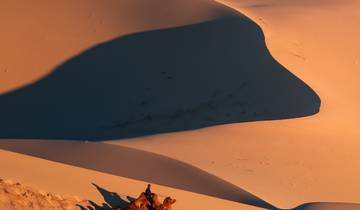
Best Of Mongolia (9 destinations)
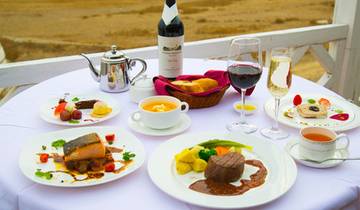
Luxury Adventure to Central Mongolia
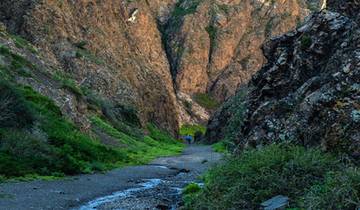
- Desert Hikes
Your Luxury Escape to Three Camel Lodge

- Hiking & Trekking
Trekking in the Altai Mountains of Mongolia
The trip was absolutely amazing. From the pristine mountains and valleys, the excellent food and Daurens expertise and knowledge of the area, the trip couldn't have been run better. If you're planning a trip to Mongolia the Altai Mountains are a must see as they are just so beautiful and all the local nomads are incredibly friendly and helpful. Dauren was a fantastic guide who seemed to know everything about the area and answered any questions we asked. He also knew a lot of the nomads personally and they would often stop to chat with him and invite us all for some food or drinks. He was also quick to adapt to things like illness in the group by arranging horses or a local ger for the person to rest in. Overall I'd strongly recommend the Altai Mountains to anyone who enjoys beautiful hikes and I don't think you could get a better guide than Dauren.
What people love about Mongolia Tours
This trip was amazing! I couldn't recommend it more highly. Huge landscapes and big skies, history, culture and warm and generous people. The trip itself was very well organized with a fantastic guide (thank you Gan-Erdene) and really competent great drivers. The accommodation in Gers was great - in many places as it started to get cold - they would come and light the stove at night and again early in the morning - super cozy! The only advice I would give is to bring a sleeping bag for the stay with the Nomad family (if you have room in your bag and especially as the weather gets colder) along with a good coat and rain coat. But in every single way this was a trip of a lifetime.
A great experience, getting a taste of different environments, experiencing a little bit of the traditional nomadic culture and food, all with the help of a knowledgeable and friendly guide. Ulaanbaatar traffic is no joke, but once outside the city you really start to feel the immense openness and beautiful expanse of the countryside. Highly recommended.
Intrepid's Wild Mongolia tour was above and beyond my expectations. Our guide TEM, our drivers and staff we met along the way did all they could to make our tour interesting, educational, adventurous, safe and lots of fun. Mongolia is so much more than I expected. I never felt like we we roughing it. Accommodations were unique, scenic and sufficient. The homestays were a challenge that bonded the group and the families. The activities gave us a variety of experiences. I highly recommend is you want a challenging, adventurous tour with not too much physical exertion.
Mongolia Destinations
- Northern Mongolia (27)
- Central Mongolia (26)
- Gobi Desert (16)
- Western Mongolia (15)
- Gorkhi-Terelj National Park (10)
Travel Styles
- Small Group (100)
- Budget (40)
- Luxury (10)
- Singles and Solo (82)
- For Couples (17)
- Seniors (60)
- Group (153)
- Fully Guided (121)
- Family (101)
- Personalized (91)
- Active (75)
- Explorer (73)
- In-depth Cultural (63)
- Partially Guided (58)
- Private (30)
- Hiking & Trekking (13)
- Jeep & 4WD (7)
- Festival & Events (6)
- Intl. Flights Included (6)
- 3 Day Tours (11)
- 7 Day Tours (30)
- 10 Day Tours (41)
- 2 Week Tours (35)
- 3 Week Tours (24)
- Spring 2024 (57)
- Summer 2024 (120)
- Fall / Autumn 2024 (87)
- Winter 2024 / 2025 (17)
- Spring 2025 (18)
- Summer 2025 (36)
- Fall / Autumn 2025 (24)
- Winter 2025 / 2026 (4)
- April 2024 (23)
- May 2024 (66)
- June 2024 (95)
- July 2024 (110)
- August 2024 (102)
- September 2024 (84)
- October 2024 (36)
- November 2024 (20)
- December 2024 (17)
- January 2025 (13)
- February 2025 (6)
- March 2025 (7)
- April 2025 (8)
- May 2025 (20)
- June 2025 (30)
- July 2025 (31)
- August 2025 (25)
- September 2025 (24)
- October 2025 (10)
- November 2025 (5)
Mongolia Tours starting in
- Starting in Ulaanbaatar (140)
- 3 Other destinations
- 4.1 History
- 4.3 Economy
- 4.4.1 Smaller festivals
- 4.4.2 Public holidays
- 4.5 Climate
- 4.6 Visitor information
- 6.1.1 Applying for a Mongolian visa
- 6.2 By plane
- 6.3.1 From Russia
- 6.3.2.1 Beijing to the border
- 6.3.2.2 Crossing the border
- 6.4.1 From Russia
- 6.5.1 From Russia
- 6.5.2 From China
- 6.6 By bicycle
- 6.7 By thumb or foot
- 7.1 By plane
- 7.2.1 Train tickets
- 7.2.2 Inside a train
- 7.3.1 Bus tickets
- 7.3.2 Inside a bus
- 7.4 By minivan
- 7.5 By chartered jeep
- 7.7 By taxi
- 7.8 By horse
- 7.9 By foot
- 8.1.1 Monasteries
- 8.1.2 Museums
- 9.1 Winter activities
- 10.2 Tipping
- 10.3 Shopping
- 10.4 Grocery shopping
- 11.1 Where to eat
- 16.1 Crime and harassment
- 16.2 Weather conditions
- 16.3 Driving
- 17.1 Pollution
- 18.1 What to do
- 18.2 What not to do
- 20.1 To China
- 20.2 To Russia
Mongolia offers great opportunities for hiking, mountain climbing, fishing and photography. Traveling across this huge country is often an adventure in itself.
Regions [ edit ]
The country can be categorised into five regions based on culture and geography. These regions are further divided into 21 provinces (aimags) and one provincial municipality.
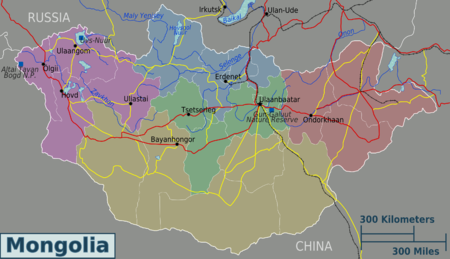
History [ edit ]

The recorded history of ancient Mongolia dates to the third century BC when the Xiongnu came to power among many other nomadic tribes. Due to illiteracy and their nomadic lifestyle, little was recorded by the Xiongnu of themselves; they first appear in recorded Chinese history as "barbarians" against whom the walls were built. Those walls later became known as the Great Wall of China . The Xiongnu were eventually defeated by China's Han Dynasty in AD 89.
Xiongnu history is controversial. Different historians attribute them to several quite different ethnic groups. Some claim that Xiongnu is cognate to Hun Nu or even that these are basically the same group known as Huns centuries later in Europe, but both claims are contested.
There have been several empires in Mongolia after the Xiongnu. The first strong state to emerge was the First Turkic Khaganate in AD 552 with its capital at Ötüken (modern-day Ordu-Baliq ). However, due to political infighting, this empire fragmented into the Eastern Turkic Khaganate with its capital at Ötüken, and the Western Turkic Khaganate with its capital at Suyab (near Bishkek in modern-day Kyrgyzstan ), in AD 603. Both of these states were eventually defeated by China's Tang Dynasty; the Eastern Turkic Khaganate fell in AD 630, while the Western Turkic Khaganate fell in AD 657. The next strong empire to emerge was the Uyghur Khaganate, with its capital Har Bulgas (Khar Bulgas or Xar Bulgas) near Har Horin. The Khitans who controlled northern China around AD 1000 as the Liao Dynasty had an administrative centre (Har Bukh) 120 km to the northeast. The Turkish government has been promoting some Turkish Empire monuments and there is a museum full of artifacts at the Bilge Khaan site.
The struggle for mere existence and power over other tribes continued until the time of Genghis Khan. Chinggis Khan, as he is known in Mongolia, born with the name Temüjin, came to power and united the warring tribes under the Great Mongol Empire in 1206. He was proclaimed Genghis Khan (Chingis Haan), meaning ruler of all Mongol tribes, and to this day, Mongolians consider him to be the father of their nation. The Mongol Empire was extended all the way to what is now Poland and Hungary in Europe under Genghis Khan, and they also conquered the Jurchen Jin Dynasty that then ruled northern China. His grandson, Kublai Khan, subsequently defeated the Chinese Song Dynasty and completed the conquest of China, establishing the Yuan Dynasty. Marco Polo travelled through much of the Mongol Empire in Kublai Khan's time. The Mongols were, however, driven back to the steppes by the Chinese Ming Dynasty under Emperor Hongwu. They were later progressively conquered by the Manchu Qing Dynasty in the 17th century, and played an important role in the Manchu conquest of China.
An independent Mongol nation only reemerged in 1924. It was not recognised by China until 1945, as the Chinese were forced to grant independence to Outer Mongolia by the Soviet Union, in exchange for Soviet assistance in fighting the Japanese invasion. Thus, the historic region of Mongolia was split into two, with Outer Mongolia becoming the independent nation of Mongolia, while Inner Mongolia remained a province of China. Since that time, Mongolia has had a close relationship with the Soviet Union (and Russia after the breakup of the Soviet Union), with Russian becoming the most widely-spoken foreign language in Mongolia. Mongolia even replaced its traditional script with the Cyrillic alphabet. (The traditional script, however, continues to be used by ethnic Mongols in China.) Inner Mongolia was the more populated area before the partition, and the number of ethnic Mongols living in China still outnumbers the population of Mongolia.
Following independence, the Soviet Union installed a communist government in Mongolia. Following the fall of communism in Europe, Mongolia enacted democratic reforms, which resulted in the first democratic multiparty elections in 1990. The democratic reforms culminated with the first peaceful transfer of power in 1996, when the incumbent Mongolian People's Revolutionary Party lost the elections, and handed power to the victorious Democratic Union.
Mongolia's vast collection of natural resources such as gold, copper, and coal can very easily make it one of the wealthiest countries on the planet, but due to its landlocked geography, dependence on the goodwill of China and Russia, governmental and bureaucratic inefficiencies, Mongolia remains one of the least developed countries in Asia.
The Secret History of the Mongols is one of the great recordings of Mongolian history. Every Mongolian reads the book in the modern Mongolian language. This is one of the oldest books in the Mongolian language. There are vivid similarities with the Bible in literary style, wording and story-telling. It is speculated that the author could have been a Christian or at least was very knowledgeable about the Bible. According to Hugh Kemp, Qadag is the most likely candidate for authorship of Secret History of the Mongols . He writes about the history of ancient Mongolia and connects the modern reality with the ancient world. Even though the book is about the history of Christianity in Mongolia, it paints a view of ancient Mongolia from the height of 21st century. The History of Mongolia by B. Baabar is a good source for the modern history of Mongolia.
On the trail of Marco Polo covers some travel through the Mongol Empire in the time of Genghis' grandson, Kublai Khan.
People [ edit ]
Mongolia is more than twice as big as Texas and nearly the same size as Alaska. Its area is 1.6 million km² (603,000 square miles), four times the size of Japan and larger than Spain, France and Germany combined. This makes Mongolia the sixth-largest country in Asia and 19th in the world, but the population is only 3.4 million (as of 2020), which makes Mongolia one of the least densely populated areas in Asia. Considering that half of the population lives in the capital city of Ulan Bator or Ulaanbaatar ("UB") that leaves lots of room for you to travel in the outback. Of course, the Gobi is even less dense.
Almost another 40% of the population are scattered all over Mongolia with their 56 million head of sheep, goats, cattle, horses and camels. There are 21 provinces, called aimag . Each aimag has a central city or town and about 15-22 sub-provinces called soum , so you will know which aimag and which soum you are in.
70% of Mongolia is under the age of 35. The gender ratio is close to 1:1. It is home to various ethnic groups: 84% Khalkha Mongols, 6% Kazakhs and 10% other groups.
More than 50% will say they are Buddhists, which is very much mixed with Shamanism, close to 10% will claim to be Christians of all forms and 4% follow Islam, the remainder will say that they are atheists. Mongolian Buddhism is part of the Vajrayana school, which is also dominant in Tibet and Bhutan . Almost all the Kazakhs and Muslims live in Bayan-Ölgii province .
Economy [ edit ]
Mongolia possesses abundant deposits of copper, coal, tin, tungsten, molybdenum, and gold. The cashmere industry is also an important industry; Mongolia and its neighbour, China, are responsible for 85% of the world's cashmere supply.
Although that sounds impressive, Mongolia is a relatively poor and undeveloped country. With an economy that depends heavily on the mining sector and on the goodwill of its two large neighbours, the country's economy is highly vulnerable to external shocks.
When the Soviet Union disintegrated in 1991, the Mongolian economy lost a third of its GDP overnight, plunging the country into a state of disarray.
Holidays and festivals [ edit ]

The annual Naadam festival (11–13 July) is the biggest day in many Mongols' calendars. It is when Mongolia celebrates its "three manly sports": wrestling, horse racing, and archery by either watching the festivities in Ulaanbaatar or by following them on television or radio.
Many other smaller Naadam festivals are also held in different aimags (provinces) throughout July, and these more intimate festivals may let you get much closer to the action.
The Naadam celebrations are said to have started with the rise of the Great Mongolian Empire. Chinggis (a.k.a. Genghis) Khan used them to keep his warriors strictly fit. After the fall of the empire, the contests were held during religious festivals, and since the communist revolution it was celebrated on its anniversary.
Only Naadam gives official titles to the wrestlers. Mongolian wrestling tournaments have 9 or 10 rounds depending on the number of 512 or 1024 wrestlers registered for the competition that year. If the wrestler wins 5 rounds, he will be awarded title "Nachin" (bird), 6 rounds - Hartsaga (hawk), 7 rounds - Zaan (elephant), 8 rounds - Garuda (Eagle), 9 rounds - Arslan (lion) and 10 - Avarga (Titan).
In 2006, Zaan (Elephant) Sumyabazar won 9 rounds that made him Garuda but that year 1024 wrestlers had 10 rounds which he won all. This entitled him to Avarga. Or Arslan (Lion) must win 2 in a row to become Avarga (Titan). The titles are for life. If Avarga (Titan) keeps winning at Naadam more and more attributes will be added to his title.
There are no weight categories in Mongolian Wrestling tournaments but there is a time limit of 30 minutes, if the wrestlers can not overthrow each other, referees use lots for better position which often settles the match. One who falls or whose body touches the ground loses the match.
Mongolian wrestling matches are attended by seconds whose role is to assist their wrestlers in all matters and to encourage them to win by spanking on their butts. They also sing praise songs and titles to the leading wrestlers of both wings, west and east, after 5 and 7 rounds. The referees monitor the rules but the people and the fans are the final judges. They will speak and spread the word of mouth about who is who till the next year.
Smaller festivals [ edit ]
- Tsagaan Sar (White moon) - starts on the Lunar New Year and is a 3-day public holiday. Its not big with tourists for the obvious reason of being during the coldest month of the year. A time when families reunite and have a large meal of sheep's tail, mutton, rice with curds, dairy products, and buuz. It is also typical to drink airag and exchange gifts.
- Golden Eagle Festival in Ölgii on October 5th and 6th is the world's largest gathering of eagle hunters. The event typically has 60 to 70 Kazakh eagle hunters displaying their skills. The events include having their golden eagles fly to them on command and catching a fox fur being pulled by a horse from a perch on a nearby mountain. The event also features traditional Kazakh games including Kokpar (tug-of-war over a goat carcass while on horseback), Tiyn Teru (a timed race to pick up a coin on the ground while on horseback), and Kyz Kuar ("girl chase" a race between a man and woman where the woman whips the man while he tries to hold on). The festival also has a traditional Kazakh concert, camel race, and displays of Kazakh art. A smaller eagle festival is held on Sept 22nd in the nearby village of Sagsai.
- Nauryz also in Ölgii is the traditional new year's celebration of Kazakhs held on 22 March. There is a parade, concert, and horse races during the several days of celebrating. Though most of the celebration involves visiting friends and relatives to eat Nauryz Koje (soup) and boiled mutton and horse meat.
- Ice Festival is held on the frozen surface of Lake Hövsgöl outside of Mörön each February. The 2-day festival includes wrestling, reindeer sleighs and riding, ice skating, shaman rituals, folk concert, and cultural events of the Tsagaan reindeer people. You should be warned; It is very cold in Northern Mongolia in February.
- Yak Festival on July 23rd in between Karakorum and Arvayheer . The festival celebrates this large mammal that thrives in the cold Mongolian winters with a full day of yak races, a rodeo, and other competitions. There is a market, tourist gers, and a whole temporary village set up in the middle of the steppe.
- Camel Festival in South Gobi province: A local non-governmental organization that aims to protect and preserve the Bactrian camel population organizes "The Thousand Camel Festival" in Bulgan County, South Gobi Province. The festival includes two types of camel races, camel-polo, and some other competitions related to camel breeders' cultural heritage such as training of untamed camels, making ropes from camel wool and loading. There is also a folk concert by school children from the countryside. The festival is held annually March 6–7 for 2 days.
Public holidays [ edit ]
While most business still takes place on most holidays, Tsagaan Sar and Naadam tend to last much longer than the official 3 days. Work may stop for weeks in the countryside for Tsagaan Sar. Also, election days are always public holidays and dry days. Alcohol is not sold on election days or the 1st of each month nationwide.
- New Years – January 1
- Tsagaan Sar – January/February (3 days, depends on Lunar New Year)
- International Women's Day – March 8
- Soldiers' Day – March 18 (not a day off, just lots of parades)
- Mothers' and Children's' Day – June 1
- Naadam Festival – July 11–13
- Genghis Khan's Birthday – November 14
- Independence Day – November 26 (no longer a day off, replaced by Genghis Khan's Birthday)
Working hours are almost always posted in 24 hours. Shops are usually open 10:00 to 21:00 or 22:00, and sometimes closed or shortened hours on Sunday or Monday. Banks usually open 08:00 or 09:00 to 17:00, though often closed for an hour for lunch. However, posted times are not always reliable, especially in the countryside. Expect shops to open at maybe 10:15 or 10:30 more often than not. Restaurants typically close around 22:00, while bars stay open until midnight or later. There are a few fast food restaurants in the capital that stay open until 03:00, but no shops open past midnight.
Climate [ edit ]
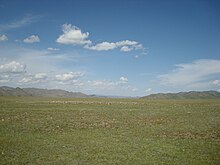
The ideal Mongolia travel season starts in May and peaks in July, during the Naadam holiday, and in August when the weather is most favourable for travelling. This is the best time if you like the culture and can bear the crowds of other tourists. It is not a good time to get away from your busy lifestyle because of the traffic, busy schedules, waiting in lines, etc.
September is also a very good time to visit, and October is not too late to travel to Mongolia. It is still warm during the days but a bit chilly during the nights. In the autumn, Mongolia is not very crowded, and this is time for late-comers and last-minute, unplanned trips. You will get to sightsee, enjoy the culture, and taste mare's milk, a bitter and at first somewhat unpleasant drink, throughout the country.
For visitors not afraid of cold or fermented mare's milk, travelling to Mongolia from November till the Lunar New Year remains an option. Winter tourism is a developing area of the Mongolian tourism industry. The most rewarding experience will be visiting the nomads, as this is the time when you will experience their culture first-hand during "Tsagaan Sar" or the traditional (Lunar) New Year celebration. Cultural activities including singing, dancing, wrestling, and winter horse racing are available to tourists.
Mongolia is known to have 250-260 sunny days throughout the year, so you will need good UV protection . During winter, protect your eyes, and during summer, protect your skin.
Visitor information [ edit ]
- Mongolia Travel website
Talk [ edit ]
The official language of Mongolia is Mongolian . Mongolian in Mongolia is written using the Cyrillic alphabet , which was introduced around the 1940s. Mongolian Cyrillic uses all the letters used in the Russian alphabet and has two extra letters: Ө and Ү . Very few people know how to read and write Mongolian using the traditional Mongolian script (written from top to bottom, and still widely used by ethnic Mongols in China), although since the 1990s, it has been gradually regaining popularity. Mongolian belongs to the Mongolic family of languages, which also includes some minority languages of Russia such as Buryat and Kalmyk, and is not known to be related to any other language family. That being said, Mongolian shares a decent amount of words and grammar structures with the Turkic languages (Turkish, Uzbek, Kazakh, etc.) due to historical proximity, so speakers of a Turkic language will have a somewhat easier time navigating Mongolian. Loanwords from languages such as Sanskrit, Russian , English, and Persian are common and are used in everyday conversations.
Mongolian is widely regarded as a very difficult language for an English-speaker to learn. It is an agglutinative language that makes extensive use of suffixing, makes use of nine grammatical cases, and has a number of pronunication rules and differences. Don't let this intimidate you, though; Mongolians will appreciate your efforts to speak their language, even if your knowledge of it is rudimentary. If you speak Japanese, Korean, Manchu or a Turkic language, some aspects of Mongolian grammar will be familiar to you.
Kazakh is spoken in the westernmost province of the country and by the small but growing population of ethnic Kazakhs living in Ulaanbaatar.
Due to Mongolia's longstanding alliance with the Soviet Union (and Russia since the fall of the Soviet Union), Russian is spoken by many older Mongolians, although proficiency drops drastically outside Ulaanbaatar.
English is gradually becoming the most popular foreign language in Mongolia and it is widely taught in Mongolian schools. Outside the capital, little of it is spoken.
Get in [ edit ]
Historically, Mongolia had a reputation for being a very difficult country to visit. Until the mid-1990s, you had to solicit an invitation letter from someone living in Mongolia to visit Mongolia.
Lately, the visa rules have been relaxed and most people can enter the country without a visa. The Mongolian government declared the 2023-2024 tourist season the "Year of Mongolia", relaxing visa requirements for many countries, including all major Western nations. Whether this will become a permanent change is yet to be seen.
Entry requirements [ edit ]

Citizens of the following countries/territories can enter Mongolia visa-free :
- For up to 90 days: Argentina , Belarus , Brazil , Chile , Ecuador , Kazakhstan , Kyrgyzstan , Macau , Peru , Serbia , South Korea , Ukraine (with an "official invitation") and United States
- For up to 30 days: Citizens of Canada , Germany , Israel , Japan , Laos , Malaysia , Russia , Singapore , Thailand , Turkey , Uruguay , and Uzbekistan , as well as the following for tourism until the end of 2025: European Union member states, Australia , Liechtenstein , Monaco , New Zealand , Norway , Switzerland , and United Kingdom
- For up to 21 days: Philippines
- For up to 14 days: Hong Kong
Everyone else, however, must apply for a visa. Obtaining a visa — by default, the Mongolian authorities issue thirty-day visas to all tourists — is relatively straightforward and effortless.
Applying for a Mongolian visa [ edit ]
Although requirements vary from diplomatic post to diplomatic post, you are normally asked to submit the following to obtain a Mongolian visa:
- A visa application form
- A passport-sized photo
- A passport with a validity of more than six months
- A copy of your travel itinerary
- A copy of your hotel reservation
- A copy of your bank statement
- A letter of invitation (if you intend to stay longer than 30 days in Mongolia)
- A letter of approval from the government (only required if you plan to study, work, or live in Mongolia)
Also, it is possible to acquire an expedited visa in a matter of hours at the Mongolian consulate in Erlian, though there is a steep US$50 fee for this service. A similar service is available in the Mongolian consulate in the Russian city of Irkutsk .
The Embassy of Mongolia in the UK website is useful for updates, with the visa page [dead link] offering information on visa applications at the embassy.
The Embassy of Mongolia in China website [dead link] hosts the form you will need to apply for your Mongolian visa in China, although the consulate does have them. To stay more than 30 days, you have to register at the Mongolia Immigration.
By plane [ edit ]

Thanks to a booming mining sector, Chinggis Khaan International Airport ( UBN IATA ) in Ulaanbaatar is now connected to some major airport hubs in eastern Asia and Istanbul and Frankfurt. Flag carrier MIAT Mongolian Airlines operates daily flights (during some peak season - twice a day) from Beijing and Seoul , twice a week flights from Hong Kong , Moscow and Tokyo (during some peak season - from Narita). During peak summer season it increases flight frequencies and operates flights from Busan and Osaka . There are branch offices in Berlin, Moscow, Hong Kong, Seoul, Tokyo and Beijing. Mongolia-based Hunnu Air flies 3 times a week from Bangkok and 5 flights a week from Hong Kong.
There are almost daily flights from Seoul on Korean Air as well as other flights through Beijing, and 3 flights a week to Istanbul . It is also possible to fly to Ulaanbaatar through Tokyo's Narita Airport.
By train [ edit ]

The Trans-Mongolian Line of the legendary Trans-Siberian Railway links Ulaanbaatar with Moscow , Russia and Beijing , China . The Mongolian line branches from the main Trans-Siberian at Ulan-Ude , so you'll need to break your journey there if coming from points east like Vladivostok .
There is a small water boiler at the end of each train car which dispenses free hot water, so it's a good idea to stock up on instant noodles and tea for the trip. Also, don't expect to encounter any English-speaking staff on the train or in the stations.
From Russia [ edit ]
The Trans-Siberian train crosses the Russia/Mongolia border at the town of Naushki , Russia. Trains start from Moscow or Irkutsk going to either Ulaanbaatar or Beijing, with several stops on both sides of the border. Between Irkutsk and the border are Ulan-Ude , Naushki, Dozornoe, and Khoit. Between the Russian border and Ulaanbaatar are Sühbaatar , Darkhan , and Zuunkharaa, with possible stops in Erdenet and Salkhit.
From China [ edit ]

Second class (hard sleeper) costs about US$200 (2011) from Beijing to Ulaanbaatar , crossing the border at Erlian / Zamiin-Üüd . There are two trains a week and the ride takes almost 30 hours, including a mandatory stop of 3-4 hours at Erlian while the train bogies are switched between Russian broad gauge and Chinese standard gauge. You will have to take all your belongings and leave the train for this operation, and will be confined to the waiting area at Erlian station, even if you're inbound to China and have already passed through immigration. You can, however, ask staff for a free ticket that will let you step outside to raid the nearby shops and restaurants for supplies.
Beijing to the border [ edit ]
If the Beijing - Ulaanbaatar train is sold out, as seems to be common, or you need a more frequent option, you can make your way from Beijing to the border at Erlian by local train as described below, and then on to Ulaanbaatar by bus and train. As of March 2011, there are morning flights from Beijing to Erlian out of Capital Airport Terminal 1 costing only ¥160, which is cheaper than the bus.
Trains run daily from Beijing to Jining (Inner Mongolia) or Hohhot . You can change there for a train to the border town of Erlian near the Mongolian-Chinese border. The K89 leaves Beijing in the morning and arrives at Jining in the evening. Jining has many hotels near the train station and has karaoke bars to keep you entertained while you wait. From Jining to Erlian there is a slow train that leaves in the morning, passes the Great Wall multiple times, and arrives in the early evening. This will take a night longer than getting the sleeper bus as described in "By bus".
Crossing the border [ edit ]
Be wary of scams at the border where people in uniform will attempt to sell you "required travel insurance." There is no such thing and you can safely ignore them. You should then cross the border from Erlian in China to Zamiin-Uud in Mongolia as described in Erlian to and from Mongolia . Once you have crossed the border, you will need to get from Zamiin-Uud to Ulaanbaatar as described in Zamiin-Uud get in .
By car [ edit ]
Many adventurous people drive to Mongolia, usually starting somewhere in Europe. The Mongol Rally and Mongol Charity Rally [dead link] sponsor many of them. Driving to Mongolia can be extremely challenging in many respects. Not only are there virtually no roads in the western half of Mongolia, but vehicle registration, import fees and paperwork, visas and everything have to be ready for every country along the way. For those who still wish to make the journey by car, there are 4 land border crossings with Russia and 3 with China. Though it is much more expensive and difficult to drive through, into, or out of China in your own car.
- See Driving in China for issues for driving to Mongolia from China.
The main border is in Altanbulag-Kyakhta ( Sühbaatar ), nearest to the capital, is open 24 hours a day. In the far west is the Tsagaannuur-Tashanta crossing in Bayan-Olgii , is open Monday to Saturday 09:00-18:00 and is the most popular with adventure drivers. Also in the west is Borshoo-Khandgait crossing between Uvs and Tuva Republic , is open Monday to Friday 09:00-18:00. In the east, Ereentsav-Solovyovsk crossing near Choibalsan is open daily 09:00-18:00.
By bus [ edit ]
There is a paved road connecting Ulaanbaatar to the Chinese border, and one between UB and Russia.
- Those interested in saving money can book one-way elektrichka (regional train) tickets from Irkutsk or Ulan Ude to Naushki. In Naushki, one can spend the night in the train resting rooms (komnati otdikha) for US$0.50 per hour. From there, it is possible to take a marshrutka to the land border crossing town of Kyakhta , Russia. Walking across the border is prohibited, but travellers have no problems arranging for Mongolia-bound cars to take them across the border, for either a small fee or free. Upon crossing into Mongolia it is relatively easy to hitchhike, taxi, or bus to Sühbaatar or UB, as all southbound traffic is headed towards those cities.
- From the west, from Russia, it is possible to cross at the land border in Tsagaannuur, Bayan-Olgii. There are daily petrol and wheat-carrying Russian Kamaz trucks headed to Olgii and it is possible to hitchhike to Tsagaannuur or even Olgii . Regular buses and marshrutkas also operate from the border, though service is unpredictable due to the lack of a schedule. There is also a bus every 10 days between either Astana or Almaty , Kazakhstan and Olgii.
- Liuliqiao long-distance bus station (六里桥客运主枢纽 or lìu lǐ qiáo kè yùn zhǔ shū nǐu), phone +86 10 8383–1716, address: A1, Liuliqiao Nan Li, Fengtai District. Departure at 16:30. These are supposed to run daily, but may not. You can phone at 10:00 on the morning of departure to see if the bus is running and to reserve a place.
- Muxiyuan long-distance bus station (木樨园才华长途汽车站), phone +86 10 6726–7149, location: go to Liujiayao Metro Station and get a cab. Departs at 17:00.
- Lizeqiao long-distance bus station (丽泽桥长途汽车站), phone (丽泽桥长途汽车站) Address 中国, 北京市丰台区北京市丰台区西三环丽泽桥东 +86 10 6340–3408, address 中国, 北京市丰台区北京市丰台区西三环丽泽桥东. Location is difficult to get to. Departs at 17:00.
From Hohhot by bus costs 88 Chinese yuan and takes 6-7 hr. There are several daily buses.
Once in Erlian, follow the Crossing the border and From the border to Ulaanbaatar steps above.
Should you be travelling at a busy time (e.g., around Naadam on the 11th and 12th July) and want to be sure of getting tickets for the last leg of the trip in Mongolia, you could take one of the packages from the guesthouses in Beijing. These cost around 570 yuan (July 2009) and include a taxi to the coach station in Beijing, Beijing to Erlian by sleeper coach, a bed in the hotel in the bus station for a few hours, a bus from Erlian to Zamiin-Üüd across the border, then soft sleeper overnight from Zamiin-Üüd to Ulaanbaatar . Purchased separately, the tickets cost about 360 yuan. The Saga guesthouse in Beijing sells these, and although they insist till they're blue in the face that the train is a hard sleeper, it's actually a soft sleeper!
By bicycle [ edit ]
At Zamiin-Uud you have to put your bicycle in a car. You are not allowed to cycle through the 3-km-wide border area. Prepare to bargain. They will start at US$100 and more. You should be able to get them down to US$20 or less. If you are lucky and get up early, you might catch a truck. They will take you for free. Usually you have better chances with Mongol drivers, if you want to cross into Mongolia.
At Altanbulag you also have to put the bicycle in a car, but prices are reasonable and usually fixed. Enjoy watching your driver smuggle goods in or out of Mongolia.
By thumb or foot [ edit ]
The road passes through the border town of Zamiin-Üüd and continues to Ulaanbaatar. Hitchhiking in Mongolia is not easy and a little bit of money for the driver is expected. There is an average of one car every hour heading into the desert. Rules at the border require that you ride a bus or car across the border, not walk across. However, they do not care how you get there or where you go afterwards.
Get around [ edit ]
If you plan to travel around the countryside without a guide, take a GPS and some maps. The "Mongolia Road Atlas" is available in many book shops, it has over 60 pages and covers the whole country: there is a Latin-character version and Cyrillic-character version, in the countryside most people won't understand the Latin version. More detailed maps are available at the Mongolian Government Map Store. These maps are 1:500,000. Also, some other special-purpose maps and a good map of downtown Ulaanbaatar. The map store is on Ih Toiruu St. Go west from the State Department Store on the main street, called Peace, Peace and Friendship, or Ekhtavan Ave., two blocks to the large intersection with traffic lights, turn right (north) and the map store is about halfway along the block. There is an Elba electronic appliance store set back from the street, a yellow and blue building, the next building is a 4-story, Russian-style office building, the map store entrance is on the west side, toward the south end of the building. It lines up with the north wall of the Elba building.
Whichever the method of long-distance travel, keep in mind that everything in Mongolia has a tendency to break down. Don't be shocked if part of the suspension breaks and the driver jerry-rigs a carved wooden block in the place of a mount. For more serious breakdowns, it can easily take an entire day or longer for somebody to come along and help, so leave plenty of slack in itineraries. Finally, Mongolians are rather notorious for being late. A bus that is scheduled to leave at 08:00 will probably not be out of the city until almost 11:00.
The entirety of the country is public property, and - especially in the winter - drivers will simply peel off the paved roads and chart their own paths to get to a certain destination. Often, many of the destinations are not near any permanent roads, requiring this off-roading to get to them. If driving off-road, take extra care to ensure that you have the proper supplies and knowledge to survive in the event your vehicle breaks down or gets stuck. It is also highly recommended to have a guide who knows the area and/or a strong knowledge of Mongolian with which you can converse with local nomads to inquire where exactly your destination is and how to get to it.

The easiest way to travel long distance is via one of the domestic airlines: AeroMongolia or Hunnu Air. Almost all flights are between Ulaanbaatar and the Aimag centers. Except for mines in the south Govi and Choibalsan , which use Boeing 737s, most flights use turboprop regional planes. AeroMongolia uses a two-tier price structure, charging foreigners significantly more than locals, while Hunnu has only one price. Other than price, there is little difference between the airlines. Air travel agents, guest houses and hotels can help you to obtain domestic air tickets in Mongolia.
- AeroMongolia ( 1st floor, Monnis tower, Ulaanbaatar ), ☏ +976 11 330373 (Ulaanbaatar) , [email protected] . M-F 09:00-18:00; Sa 10:00-18:00 . It is generally cheaper, but uses older planes and charges foreigners double the local rate.
- Hunnu Air ( Chinggis avenue 10-1, Sukhbaatar district, Ulaanbaatar ), ☏ +976 7000 1111 (Ulaanbaatar) , [email protected] . Formerly Mongolian Airlines.
There is only one railway company in Mongolia, owned by the Russian and Mongolian governments, "Mongolian Railway". It is probably the best way to experience something of the communist time, even if it has evolved a bit since then. Ulaanbaatar railway agents more often consider the passenger as a potential rulebreaker than as a client. The railway network is poor, consisting mainly of the Irkutsk-Ulaanbaatar-Beijing Trans-Mongolian way with a few extensions. Trains are extremely slow. They usually leave on time, and arrive on time or less than 20 minutes late. Intercity bus routes on the roughly parallel paved roads will get you there much faster.
The local trains stop at many small stations in the countryside. For example, there is the small town of Batsumber, located about 34 km north of Ulaanbaatar (as the crow flies), longer on the train. Take your camping gear and hike to the mountains about 10 km east of the town. There are two streams flowing west out of the mountains, hike and camp along the streams. There is a small restaurant, and food shops in the town.
Train tickets [ edit ]
It's possible to pay for train tickets by credit card. For online booking of train tickets, go to the official website [dead link] (an English version is available, but not all the information is translated). The website is not the most user-friendly, but fortunately Wander Simply has a good write-up on how to navigate the site and buy tickets. Alternatively, contact the company Train to Mongolia to buy tickets at a commission. You pay an extra fee if you book in advance, and also an extra fee if you buy it in the train, which is the only possibility left if there are less than 10 minutes left before the train departure. Your passport is required to buy a ticket, but you can buy several people's tickets with one passport.
There are 3 classes: "coupé", "sleeping", and "public" (translated into English by "economic" by the company). "Coupé" is the only one with doors. In "public" it's possible to have to spend the night sitting and even with little space on crowded days. The tickets are numbered, but, when the seats are exhausted, the company overbooks public seats with tickets numbered "0", at the same price.
The "public" seats tickets are much cheaper (and much slower) than the coach, minivan and taxi competitors.
In a coupé at night, you'll be charged for compulsory additional bed sheets inside the train.
Inside a train [ edit ]
You will be proposed drinks and Mongolian food inside the train, both by official sellers of the company and, at the big stations with long stops, by private people entering the train for that purpose.
There are many conductors. Don't expect them to speak anything other than Mongolian and, possibly, Russian.
Theft is rare on Mongolian trains, but keeping an eye on your belongings is generally a good idea. There are police on every train.
On a long trip, your ticket will be checked repeatedly, and you'll be awakened throughout the night for that. However, nobody will wake you if you have to get off during the trip, but if you get off at the terminus, you'll be awakened, even more than one hour before arrival, depending on the agent.
The train toilets close 30 minutes before the terminus, and sometimes even before that.
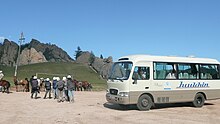
Travelling by local bus is also an option, though these buses tend to only connect the provincial capital with UB, and it is quite difficult to find any public transportation linking one provincial capital with another. Lately the bus situation has improved. Most cities and towns are referred to in two ways, their name or the name of the Aimag (province) or Soum (county), e.g. Dornod or Dornod Aimag or Choibalsan (the actual city name). Most buses have their destination on a card in the front window. If you have either name written down in Mongolian Cyrillic, show it to the drivers or helpers and they will get you on the right bus.
There are two types of buses, microvans and large buses (some large buses are old Russian types and some are modern western types), depending on the road. The large buses run on schedule, but the micro-buses are much more lax. In Ulaanbaatar, there are two bus stations, one on the west near the Dragon Shopping Center and one on the East near the Botanical Gardens. Both stations are on Peace Avenue on opposite sides of the city. Multiple buses run between them. Get local to write directions. For the large buses buy your tickets the day before.
In the Aimag centres, there will be service to Ulaanbaatar and to local soums (small county seats) and usually the next Aimag center. However, all locations may not be available at one location. Ask for help from the locals. For example, in Ondorkhaan, the capital of Khentii Province, there is bus service between Ondorkhaan and UB from a central bus station, however the through buses going to/from UB to Dornod and Sukhbaatar Aimags (Choybalsan and Baruun-Urt) will stop at a gas station on the north side of the city.
Bus tickets [ edit ]
Tickets are sold in the station, not in the coach. Don't expect any cashier, driver or conductor to speak anything but Mongolian and, possibly, Russian. It's not possible to pay by credit card. Your passport is required to buy a ticket. If you have a luggage exceeding the standard (written in your ticket) in weight or size, you'll be asked for an extra fee by the conductor. You can negotiate this one.
Inside a bus [ edit ]
On some routes, the driver and the conductor illegally add extra passengers and pocket the cash. They might even try to make 3 people sit on 2 seats, for instance: you can protest in such a case. Your ticket gives you the right to a full seat and this is what you get in most coaches. The coach will usually stop for a rather quick lunch or dinner at a local snackshop or canteen.
By minivan [ edit ]
Public countryside taxis and minivans, often called purgon or mekr, offer more destinations than coaches and many more than train, especially between provinces. They are more dangerous than coaches and trains, and always overloaded. Most drivers don't respect the traffic rules. Countryside taxis and minivans leave when full. They always say they will go "now" ("odo") despite often departing hours later. See how many people are already sitting inside the vehicle to have an idea of how long you'll wait. Drivers also usually promise to pick up additional passengers and cargo before leaving town.
By chartered jeep [ edit ]
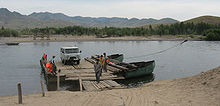
It is also possible to charter a Jeep and driver for private use. Prices are typically negotiated by the kilometre. While far more expensive than sharing a ride with the locals, this means of transport is considerably more convenient and allows you to visit more remote sites. It can also be quite convenient to hire a guide to use during the length of your stay. Doing so can allow you to travel without worrying about taxi drivers overcharging by up to 10x for being a foreigner.
One of the most convenient ways to get around is by car. This isn't to say that it's completely safe, however. Road accidents are very common in Mongolia, largely because of reckless driving habits. Drivers do not obey traffic rules and speeding is common. Many cars are in poor condition and not all of them are fitted with seat belts. The road network is narrow and generally in poor condition. Avoid driving at night, as most roads are unlit and may have obstacles and potholes.
By taxi [ edit ]
In the cities, taxis should charge about 1500 ₮ per km. The drivers will set their trip meter and charge accordingly.
By horse [ edit ]
For local travel, horse-back is a good option. Mongolians ride on wooden saddles, so if you value your buttocks it's probably a good idea to pick up a leather, Russian saddle in UB.
By foot [ edit ]
Walking is another great alternative. Since camping is possible anywhere, resting is never a problem. Wherever there is water, there are nomads, and if you stick to the major dirt roads you will encounter plenty of guanz, which can provide huge cheap meals to keep you going. Adopting the Mongolian style of sleeping outdoors is also an option: wrap yourself in wool blankets and then cover yourself with a Russian raincoat (essentially a tarpaulin in the form of a trench coat), and simply plop yourself down on the ground. One night sleeping this way gives a whole new appreciation for the wonders of sleeping bags and bivvy sacks/tents.
See [ edit ]
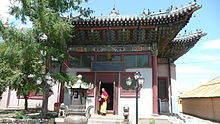
Mongolia is a big country that has been beyond the reach of travellers and the normal trappings of civilization until the 21st century. Even today it can be difficult to travel between the few places that 'exist'. There is little noteworthy architecture in the country. Except for the short-lived capital of the Mongol Empire at Karakorum (Kharkhorin) , the descendants of Genghis Khan left little evidence of their power inside their native homeland. Genghis Khan, who leveled cities from the Yellow Sea to the Caspian, was said to have only built one permanent building during his life, a warehouse to store his stupendous amount of loot.
Archaeology [ edit ]
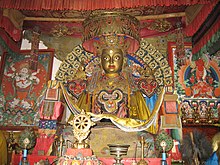
Though this structure no longer exists, the capital built by his son, Ögedei, does, as do countless artifacts in the National Museum in Ulaanbaatar , and thousands of stone monuments and drawings spread throughout the country, some dating back thousands of years. After the gradual disintegration of the Mongol Empire, many Tibetan Buddhist monasteries were built, providing the most visible signs of Mongolia's history. Today only a few still stand after Stalinist religious purges. Of particular note is the Amarbaysgalant Monastery in Selenge, the Erdene Zuu Monastery in Kharkhorin, and Gandan Monastery in Ulaanbaatar, all active religious sites with large numbers of resident lamas. During the communist era, the Soviets helped establish large modern cities and modern industries, which aren't very pretty, but are of some interest, particularly the biggest open-pit copper mine in Asia at Erdenet .
For a country that prides itself on its nomadic heritage, there are a surprising amount of ruins of stone structures (and even cities) scattered about Mongolia. With the exception of Kharkhorin, practically none of these are anywhere near a paved road, but their isolation makes their grandeur even more impressive.
People interested in the ethnogenesis of the Turkic peoples will not want to miss the Orkhon Inscriptions in the Orkhon Valley (about a 40 minute drive north of Kharkhorin). These two massive stone stelae contain the oldest written Turkic language, and serve as a sort of Rosetta Stone for the reconstruction of both Old Turkic and Proto-Turkic. The Turkish government has funded a nice museum on the site and a paved road from the museum to Kharkhorin, making the inscriptions easily accessible to travellers.
Monasteries [ edit ]
Before the religious purges, Mongolia had around 750 monasteries and was a theocracy. Many were destroyed, while some were turned into museums by the communists to display Mongolian art or the opulence of the former religious leaders. Today the Choijin Lama Monastery and the Bogd Khan Winter Palace are preserved as museums for the art of the Lamas and the toys of the former king. Other ancient monasteries are slowly reopening and recovering like the Amarbaysalant in Selenge Province or the Gandan Monastery in Ulaanbaatar. Most monasteries today are small, newly built temples in towns that didn't even exist before the purges.
Museums [ edit ]
Besides the monastery museums, Ulaanbaatar hosts several interesting and noteworthy museums to see before going off to the countryside. The best one by far is the National Museum of Mongolia with large collections of artifacts from the Mongol Empire through the Democratic Revolution of 1990. The Chinggis Khaan Museum in Ulaanbaatar offers an even larger collection, although it only spans prehistory to the Qing Empire. Several other good art museums and lesser history and nature museums also exist in the city if you will be there for an extended time. Outside of the capital, every provincial center also has a small museum usually built by the communists and mostly not updated since they left. These museums are cheap and do have useful displays on local cultures and history.
Nature [ edit ]
One thing that does look much the same as it always has is the unspoiled nature of Mongolia. Due to its very low population density, the lowest in the world, it is possible to travel days with only seeing the occasional nomadic herder interrupting endless rolling steppes, the vast Gobi desert, or the snow-capped Altai Mountains. Up north, Siberian forests surround the 2nd largest freshwater lake in Asia by volume, Hôvsgôl (or "Hövsgöl") lake, in Hövsgöl province, which is very beautiful. The Flaming Cliffs near Dalanzadgad are stunning just to see, but also contain some of the earliest and most important dinosaur discoveries.
The most memorable part of any trip to Mongolia, regardless of what drew you here, will certainly be the people. Mongolians are incredibly hospitable to guests. No trip here is complete without having dinner or staying the night with nomadic herders . Around a third of the population still earns a living as semi-nomadic herders living in gers (yurts) on the open steppe. While their diets are not very diverse, consisting of meat, flour, and dairy, they will seek to serve guests a feast of boiled or fried meat and hot milky tea, with traditional entertainments of music, singing, and maybe dance. There is some variation depending on which tribe or region, with Kazakhs near Ölgii being the most different with different language, diet, and dress, including the practice of eagle hunting . While the Tuvans have a beautiful, eerie singing style of throat-singing, and the Tsaatan people live isolated lives herding reindeer near Lake Hövsgöl. Then there are the Lama monks who are increasingly common in monasteries and elsewhere, and the Shaman priests , who practice the ancient animist religions of worshiping nature and the earth, and are widely respected in Mongolia.
Do [ edit ]
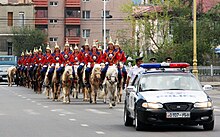
Experiencing the culture and having a meal or spending the night with a nomadic family are authentic Mongolian experiences. Whether you go just outside of the capital or fly to the far corners of the country, this is the most memorable part of any trip. There are some variations on the experience, depending on the tribal group.
The Trans-Siberian Railway passes through the country. Also follow the path of Marco Polo across Europe and Asia into Mongolia to visit the ancient capital of the Mongol Empire in Karakorum .
Mongolia is the least densely populated country in the world and has very little development of any kind outside of the capital and a few small towns. There often aren't even roads connecting these towns. This pristine setting means that Mongolia has wide open spaces for experiencing the outdoors for those who want adventure. Traveling across this vast country is often an adventure in itself with tourists and adventurers alike going by car, motorcycle, bike, horse, camel, or foot. Most often this means camping on the shore of a river or with a nomadic family or in small roadside hotels in provincial towns. Along the way or on one of the many wild rivers and nature preserves, there is great fishing, particularly fly-fishing during the summer. Climbing the mountains in the west is popular as well as photographing the wildlife, flora, or the multitude of birds living or migrating through Mongolia.
- Canoe down some of Mongolia's major rivers.
- Listen to traditional Mongolian throat singing .
- Visit reindeer herders, such as the Tsaatan Community, which is west of Khovsgol lake. Several tour companies sell tours to visit the reindeer herders living in high alpine mountains. To get there, ride horses from Tsagaannuur or Rinchinlhumbe. You need to get a border permit in UB or Murun before starting the tour. Most licensed tour companies can get the border permit if you provide your travel details in advance. Horse-trekking can be hard and long. But it's worth traveling there.
- Local Bonda Lake Camp in Khatgal village near Lake Khovsgol offers fishing, hiking, winter tours, nomad visits, horseback riding, visiting reindeer herders and the Darhad valley. Horse riding, you can discover Lake Khovsgol and its beautiful waters, meet Tsataan (nomadic reindeer herders) living in gers in the north of Khovsgol area. This region is incredibly scenic, perched at 1645 m altitude in green mountains, covered with thick pine forests and lush meadows with grazing yaks and horses, and rich with wildlife: the lake has 9 species of fish and its surroundings are full of sheep, goats, elk and more than 430 species of birds. There are 5 Mongolian tribes nearby: Khalh, Darhad, Buriad, Hotgoid, and Urianhai. The camp has a hot shower, sauna, internet and a restaurant with Mongolian and European meals.
- Mountain Climbing , All over Mongolia . Best to climb the highest peaks in July and August . While much of the country is rolling steppe, there are several mountain ranges. The Altai Mountains in the west have several peaks of over 13,000 ft (4,000 m) up to 14,201 ft (4,328 m) in Altai Tavan Bogd National Park . The highest mountains have snow-capped peaks, glaciers, and require special equipment and experienced guides. Smaller mountains throughout the country can be hiked in an afternoon, including many surrounding the capital of Ulaanbaatar.
Winter activities [ edit ]
- Join Kazakh eagle hunters on a hunt , In Western Mongolia . During the cold winter months, the Kazakhs in western Mongolia use eagles to hunt for foxes and hares, which are easier to see against the snow. Freezing temperatures and long days on Mongolian or Kazakh horses discourage most people from attempting this adventure. For those who do, seeing an eagle released from a man's forearm swoop down and kill a fox a mile away is an unforgettable experience.
- Skiing: There is one ski resort outside of Ulaanbaatar with a ski lift, equipment rentals, instructors, and all the other features of a ski resort. The lift may be slow, and the runs a bit hard, but it does provide good entertainment for those visiting UB during the long, cold winter months. For more adventurous types, western Mongolia's large mountain ranges provide great back-country skiing . The spring months of April and May get the most snow and make the best skiing. Either join a tour or lug all of your own equipment. There aren't any ski shops in the nearby villages.
Tipping [ edit ]
In Mongolia tipping is rarely expected except in tourism-related services like tour guides. Waiters, taxis, and hotel attendants do not expect tips. Sometimes taxis will attempt to overcharge you by refusing to give change back, but this has nothing to do with gratuity. Some nicer restaurants and hotels in the capital do often add fees to the bill for service, especially for larger groups.
Shopping [ edit ]
- Mongolian cashmere is known as the best in the world, so consider buying garments and blankets from one of the many stores selling cashmere products.
- Mongolia is famous for its copper mines Erdenet and Oyu Tolgoi. A copper bookmark might make an ideal souvenir and you can easily find this US$1 metal souvenir in Ulaanbaatar souvenir shops.
- Kazakh embroideries made in Ölgii using traditional Kazakh designs are sold in many gift shops in Ulaanbaatar.
- Paintings by local artists are excellent buys in Mongolia.
- You can find felt poker-work in Erdenet .
- It is illegal to take antiques out of the country without a special permit.
- The huge open-air market, Narantuul ("The Black Market") in Ulaanbaatar offers the lowest prices on just about anything you could want. Beware of the many pickpockets and even attackers there. This can be a great place to get a good pair of riding boots . You can opt for a variety of Mongolian styles, from fancy to the more practical, or even get a good set of Russian-style boots.
- Mongolia is justly famous for its carpets . Erdenet is home to Mongolia's largest carpet factory, also making and selling slippers made of carpet, though its carpets are made by machine, not traditional methods. For traditional carpets, visit a local market, including the famous Black Market in Ulaanbaatar .
Grocery shopping [ edit ]
Prices as of April 2018:
- Bread (1 loaf) - 1,600 ₮
- Bottled water (0.5 liter) - 600 ₮
- Beef (1kg) - 9,500 ₮
- Yogurt (0.45kg) - 1,600 ₮
- Beer (0.5 liter) - 2,000 ₮ to 5,000 ₮
- Milk (1 liter) - 2,350 ₮
- Potato (1kg) - 1,050 ₮
- Onion (1kg) - 1,550 ₮
- Coffee (0.8kg) - 12,000 ₮
- Banana (1kg) - 4,500 ₮
- Grape (1kg) - 11,000 ₮
- Apple juice (2 liters) - 5,000 ₮
- Eggs (10) - 4,450 ₮
Sleep [ edit ]
Some western-style accommodation is available in Ulaanbaatar , but it goes for western prices. There are a few nice guest houses in UB for less than US$10 per night (even as cheap as 3,000 ₮ if you're willing to share a room), but they are crowded during the tourist season and hard to get into.
Out in the countryside, most of the hotels are rundown Soviet-era leftovers. A better option is tourist ger , set up by entrepreneurial locals. Staying at one of these costs about ₮5000 per person per night. They often include breakfast and dinner as well. When staying in one of these guest ger, the usual gift-giving customs can be skipped.
Finally, there are also ger-camps . Set up by tour companies, they do occasionally rent out space to independent travellers. Unfortunately, they tend to be both expensive (US$35 per person per night with 3 meals) and out of the way. To stay at a ger camp, use the online booking portals iHotel and Mongolian Ger Camps Network .
Except for the cities and larger towns, all land is publicly owned. This means you can pitch a tent pretty much anywhere. Courtesy dictates that you keep your distance from existing nomad encampments. Common sense dictates that you don't pitch a tent in the middle of or too close to a road.
Nowadays, there are more than 300 hotels in Mongolia and these are graded between 1 and 5 stars. Hotels holding 3 stars or more are for tourist service and must obtain permission in order to operate. The Accommodation Grading Committee, consisting of the Ministry, travel industry associations and tourism researchers, rate an accommodation according to Mongolian standards.
Learn [ edit ]
There are some language schools in the capital. The two most known to foreigners are Bridge School and Friends School. Both offer group study classes and individual tutors. Also, the National University of Mongolia offers courses.
It usually takes westerners about 9 to 18 months before they acquire good conversational abilities in Mongolian. Speakers of Korean, Japanese, and Turkic languages, like Turkish and Kazakh, tend to learn more quickly due to the similarities in grammatical structure. A Mongolian language school with a website is Nomiin Ger .
Work [ edit ]
It can be difficult to find employment as a foreigner in Mongolia. Obtaining a work permit requires being sponsored by a Mongolian company and every company has a strict quota on the number of foreign nationals they may employ. Foreign nationals are not allowed to comprise more than 20% of a Mongolian company's workforce. This is as good as saying that the Mongolian government is reluctant to let foreigner workers compete with Mongolians.
There is a huge demand for native English speakers as English teachers. Anyone who is interested in teaching English will have no trouble getting employment and a work visa through a school or organization. However, the pay is generally lower than in other countries. Though it'll usually be just enough for room and board plus a little extra.
Local English-language media hire native speakers as editors, proof-readers and photojournalists.
Volunteer work is available teaching English, assisting with charity work and joining archaeological digs. These jobs are easy to find and very rewarding.
Stay safe [ edit ]

Mongolia is mostly a safe country to visit, but take care in nights and when alcohol is involved, and if venturing out away from shelter with risks of harsh weather. Women should be aware of problems common in conservative regions.
Aggressive dogs may run in packs. Be wary of them since they are not likely to be as tame as domestic dogs elsewhere. Most fenced yards and gers have a guard dog that is usually all bark and no bite, though it is advised to make it aware of you so as to not surprise it, and carry a rock in case it does charge you.
Manhole covers — or more precisely, the lack of such covers — is a surprisingly common cause of injuries among foreigners and (especially drunk) tourists. In smaller cities and outlying areas of the capital, there are many missing or poorly placed covers. Avoid stepping on any manhole and pay attention to where you walk.
Crime and harassment [ edit ]
Apart from Ulaanbaatar, Mongolia is generally a safe place to travel. However, incidents of pickpocketing and bag slashing have occurred, so always keep your personal belongings in a safe place (money belts are highly recommended), especially in crowded areas or in places where your attention is diverted. Notorious places for theft are the Black Market (bazaar), the railway station and crowded bus stops.
Unfortunately, xenophobia and violence towards foreigners is common. Alcoholism is a huge social problem and Mongolia has the highest rate of liver cancer in the world. Do not acknowledge or approach any Mongolian man under the influence of alcohol. Many foreigners who go to bars and clubs at night report assault and general aggression.
Mongolians are quite open people and tend to be curious and ask many questions just to be friendly. Try to answer diplomatically, and vaguely, especially relating to any perceived negative aspect of Mongolia.
Violent crime is also common outside the capital city (Darkhan especially), so caution is required at night. In particular, dark or deserted alleys and streets should be avoided. Generally, if walking past 22:00, avoid people if at all possible. Mongolians can be very friendly, but their emotions and motives can change quite quickly. Someone who may genuinely just want to have a couple drinks with you may suddenly become aggressive regardless of your respect and polite actions.
Corruption is a huge problem in Mongolia, and locals are convinced that the police are not to be trusted.
There are small bands of Mongolian ultra-nationalist thugs that style themselves as neo-Nazis and have assaulted foreigners including whites, blacks, and particularly, Chinese. They are especially provoked by foreigner interaction with Mongolian women. They are mostly found in the capital, especially in the cheaper bars and nightclubs.
Lone or female travelers need to exercise a higher degree of awareness of their surroundings, as getting groped in the chest or behind is not uncommon. Some actions like dancing close to a man will be seen as an open invitation, as Mongolians generally don't dance this way.
Weather conditions [ edit ]
Perhaps the biggest danger in Mongolia is the extreme weather. Owing to its large size, high elevation, proximity to Siberia in Russia, and its landlocked geography, Mongolian winters are incredibly harsh and temperatures can fall as low as -40° Celsius. That's why Ulaanbaatar is often dubbed the coldest capital city in the world.
When visiting Mongolia in the winter, layer every article of clothing you own and do not walk around too much in the open. Frostbite is a real risk, and freezing to death is a possibility. If you are unprepared to deal with such weather conditions, visit Mongolia during the summer.
Driving [ edit ]
Driving in Mongolia can be dangerous, especially for those who are not used to driving in developing countries. Roads outside the capital tend to be in poor condition, and incredibly harsh weather makes things all the more difficult.
In the capital, motorists can be aggressive and drunk driving is common. Take care when crossing roads or busy intersections.
If you have little to no knowledge of Mongolian roads and driving around in isolated areas, it is strongly recommended that you do not drive outside Ulaanbaatar . Outside the capital, help is incredibly limited and you can get lost if you don't know what you're doing.
If you must drive outside Ulaanbaatar , consider informing a trusted local about your plans.
Stay healthy [ edit ]

- Nomads' dogs may have rabies . As a precaution, consider having a rabies shot before coming.
- Marmots should not be eaten at certain times of the year because they can carry bubonic plague . That said, the disease is carried by the marmot's fleas so the afflicted tend to be fur traders, and marmot is not a mainstream dish even in Mongolia.
- Hepatitis and tuberculosis are common throughout Mongolia.
- Tap water is unsafe to drink.
Pollution [ edit ]
Ulaanbaatar has polluted air, largely due to pervasive coal-burning for domestic heating.
If you suffer from a respiratory disease and plan to visit Mongolia in winter, consult a medical professional for advice.
Respect [ edit ]

Compared to other countries in Asia, Mongolians are generally straightforward. Expect someone to tell you exactly what they think and feel.
Mongols traditionally live on the steppes, breeding horses, just like their ancestor Genghis Khan. Not surprisingly, following Western pleasantries will mostly not have the intended effect in Mongolia. Instead, try to follow local good manners. Always receive items with the right hand , palm facing up. Drink from the right hand with the palm up as well. It is very rude to refuse a gift. If offered a plate of hospitality munchies, take at least a small nibble from something. Never point at anyone with your index finger since it implies disrespect.
Whenever you approach a nomadic family, or enter a ger, you will, without knowing, break one or several of the many traditional, religious and superstitious customs. If you do become confused, don't panic, minor indiscretions will be tolerated and forgiven. The following do's and don'ts will help avoid offending anyone.
Anti-China sentiment is high in Mongolia due to historiographical and cultural disputes, and because China is seen by Mongolians as a colonial oppressor. As such, refrain from wearing anything associated with China, and refrain from talking about China. The Chinese province of Inner Mongolia is referred to as "southern Mongolia" by most Mongolians. Many Mongolians consider it to be occupied Mongolian territory awaiting liberation.

What to do [ edit ]
- Say hello (sain bainuu) upon arriving (but repeating it when you see the same person is considered strange)
- Take at least a sip, or a nibble, of the delicacies offered.
- Pick up everything with an open hand, with your palm facing upwards.
- Hold a cup by the bottom, and not by the top rim.
- If by accident you tap someone's foot with yours, immediately shake hands with them (failing to do so will be seen as an insult).
- Exchange pleasantries and engage in some small talk before asking someone for something.
- Discuss one's family and the weather. In nomadic areas, asking about a nomad's animals is customary.
- Discuss where you're from and what you're doing in Mongolia/the place you're visiting.
- Show respect to elders and figures of authority.
What not to do [ edit ]
- Lean against a support column
- Whistle inside a ger
- Stand on, or lean over, the threshold
- Stamp out a fire, or put water or any rubbish on it (fire is sacred to Mongolians)
- Walk in front of an older person; or turn your back to the altar, or religious objects (except when leaving)
- Take food from a communal plate with your left hand
- Touch other people's hats
- Do not have a long conversation in your own language in front of your hosts; make an effort to include your hosts.
- Do not reject an invitation to visit a ger; hospitality is a cornerstone in the nomadic parts of Mongolia and outright rejecting an invitation will seriously offend the nomads.
- Refuse food and drink offered by your hosts; as is the case in many Asian cultures, it is very rude to do this in Mongolia and shows no respect to your hosts.
- Not finishing the food that has been offered to you; as is the case in many Asian cultures, wasting food is frowned upon .
- Urinate in lakes or bodies of water; water is considered sacred and holy in Mongolia.
- Speak negatively about Genghis Khan. Most Mongolians revere him, and he is regarded as a national hero and the father of their nation.
Connect [ edit ]
Internet cafés are less common than they were, but nicer restaurants provide Wi-Fi in the capital. The postal service is slow and most people have a PO Box if they want to get anything. It is possible to buy phone cards that can be used to call abroad very cheaply from domestic phones, but not all phones can do this. (You can ask for MiCom or MobiCom cards). In the countryside, cell phone carriers cover random villages. Between Mobicom, Unitel, and GMobile, all villages or Soum centers are covered. Internet cafés are plentiful in Aimag centers (provincial capitals) now, with all Aimag post offices having one, plus many smaller cafés. There is Internet in some Soums (villages), but this is rare, slow, and prone to frequent outages.
To make local calls in Ulaanbaatar, use a phone of one of the many entrepreneurs with cellular telephones on the street corners. Expect to pay 150-200 ₮ per minute (June 2009 prices).
Go next [ edit ]
To china [ edit ].
From Ulaanbaatar, there are several options:
Firstly, the international train. Tickets are sold in the ticket office in the VIP lounge on the second floor of the international ticket office across the street from the train station.
The second option is to board the Hohhot international train and transfer at Erlian or Jining (Inner Mongolia) . See the travel agency located on the 1st (ground) floor of the international ticket office for details.
The third option is to take the daily train to Zamiin-Üüd , Mongolia at the border and take a bus or jeep to China, then go to the bus or train station in Erlian , China.
To Russia [ edit ]
There are buses and trains to Ulan Ude , from where you can explore the Lake Baikal region or board the Trans-Siberian Railway in either direction.
- Has custom banner
- Has mapframe
- Has map markers
- Articles with dead external links
- Airport code pages missing
- Do listing with no coordinates
- All destination articles
- Outline countries
- Outline articles
- Country articles
- Has Geo parameter
- Articles Geo different to Wikidata
- Pages with maps
Navigation menu

Make Your Next Trip Extraordinary
- Middle East
- Australia & Pacific
- Caribbean & Mexico
- South America
- Central America
- Cruises & Yachts
- United States
- About Wendy
- Meet the Team
- Code of Ethics
- How We’re Funded
- How to Support Us
- How You Can Benefit
- Smart Travel in 2024
- Where to Go When
- Family Travel
- Holiday Travel
- Airline Travel
- Cruise Travel
- Our Own Trips
- Ask a Teenager
- Travel Insurance
- Travel Talk Videos
- Covid Entry Rules
- I Have a Destination
- Tell Me Where to Go
- Just Back: The Latest Reviews
- Anniversary Trips
- Asia WOW Trips
- Christmas/New Year Trips
- Christmas Day Abroad
- Europe in Summer: Beat the Heat
- Europe in Winter: Smart Trip Ideas
- Europe for Winter School Breaks
- Europe’s Secret Spots
- Food-Focused Trips
- Graduation Trips
- Grandparents with Grandkids
- Meeting Noteworthy Locals
- South America WOW Trips
- Spring Break Family Trips
- Sporty Adventures
- Thanksgiving Trips
- Wildlife Encounters
- WOW Moments
- The WOW List
- WOW List FAQs
- Fees/Pricing Tips
- WOW Moment Rules
Mongolia: Insider’s Guide
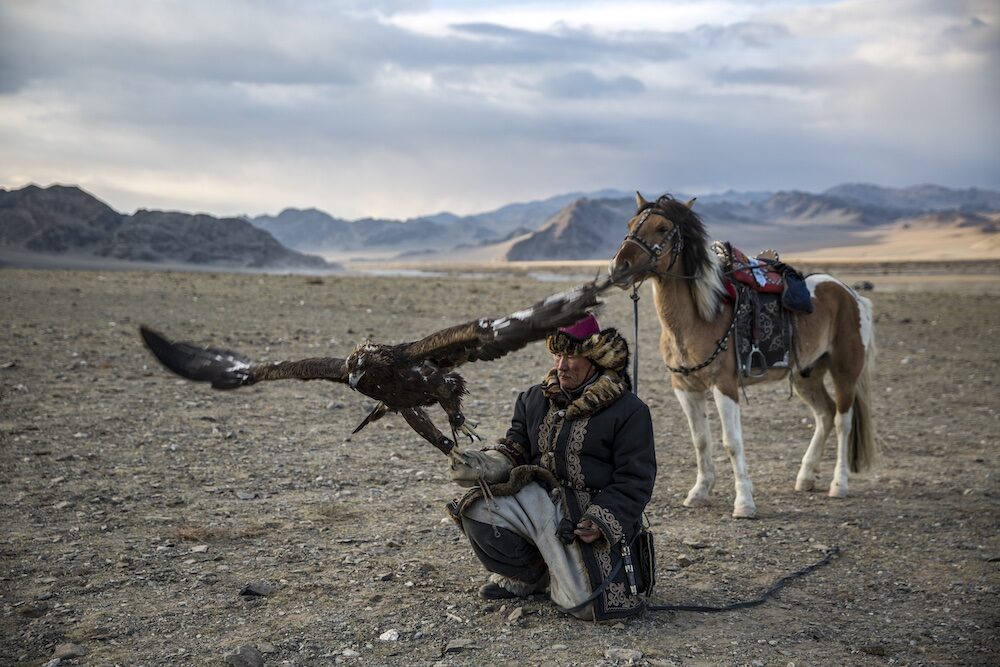
The insider advice on this page is from one of Wendy’s Trusted Travel Experts for Mongolia: Jalsa Urubshurow of Nomadic Expeditions.
A Mongolian-American who grew up in New Jersey, Jalsa founded Nomadic Expeditions in 1992, using the proceeds of his successful construction business to bring tourism to a place—Outer Mongolia—that was once synonymous with the end of the earth. He was among the first to offer highly customized trips there, and also created one of the country’s original guide training programs. Jalsa doesn’t simply design itineraries that cross off sights on a checklist; he pairs travelers with experts—including historians, scientists, artists, and photographers—who give visitors a comprehensive understanding of the country’s history, culture, and traditions. Now splitting his time between Mongolia and the U.S., Jalsa champions sustainable, eco-friendly travel as a viable alternative to Mongolia’s mining-based economy; he also founded the Nomadic Foundation to expand the impact of conservation and cultural preservation projects run by his team in Mongolia.

Tell us about the trip you want
The more detail, the better we can help you..
•What’s your biggest goal for this trip? What would make it most memorable?
- Tell us your trip goals. IMPORTANT: Post-pandemic prices have soared in some countries, so check Wendy’s Pricing Tip: On mobile, scroll down to just above the photo. On desktop, look to the right. *
Getting there and around
Where are you flying from? Have you booked your airline travel? If so, tell us the dates and routing. If not, how long a flight are you comfortable with? Once you’re at your destination, how do you envision exploring it—e.g., rental car? public transit? private vehicle with English-speaking driver or guide/expediter with top connections and special access?
- Tell us your flight dates/route and local transportation preferences (if you know these already). *
Staying there
Do you have a type of accommodations in mind (e.g., 4-star, 5-star, historic inn, state-of-the-art resort, family villa. private yacht, small expedition ship)? Is there a past hotel experience you’re seeking something similar to? If you have already booked accommodations, let us know.
- Tell us about the places you’ve stayed in that you’ve liked, and what you would like now. *
- Estimated Departure Date (Including the Year) *
- Estimated Trip Length (in Days) *
- Total Trip Budget (in U.S. dollars, excluding airfare): * How much do you want to spend for a WOW-caliber trip (incl. rooms, vehicles, excursions, meals, unique experiences, and the savviest drivers/guides/expediters to spare you headaches and wasted time)? Your answer will dictate the locations, trip dates, and experiences we will suggest. Please select (in USD): More than $50K $35,000 to $50,000 $25,000 to $35,000 $20,000 to $25,000 $15,000 to $20,000 $10,000 to $15,000 Other (this choice will open a new box you can write in)
- Tell us about your travel budget *
Where should we send your personalized recommendation?
- First Name *
- Last Name *
- If you’d like this trip to count toward a WOW Moment, use the same email address you’ve used to submit trip requests to WendyPerrin.com in the past. * Enter Email Confirm Email If you’d like this trip to count toward a WOW Moment , use the same email address you’ve used to submit trip requests to WendyPerrin.com in the past.
- Name of travel specialist(s) you've used
- Do you have a WOW Moment certificate you’d like to use? If so, please enter the first four digits of the certificate number. Qualifying rules apply for certificate redemption.
- First 4 digits only
- How did you hear about Wendy? * Please select Condé Nast Traveler Town & Country The Wall Street Journal The New York Times TripAdvisor Friends or colleagues A travel professional Google search Social media I’ve followed Wendy’s advice for years
If you do not receive an email confirmation of your trip request from [email protected] and you have checked your spam folder, let us know: [email protected] .
- Email This field is for validation purposes and should be left unchanged.
What to See and Do
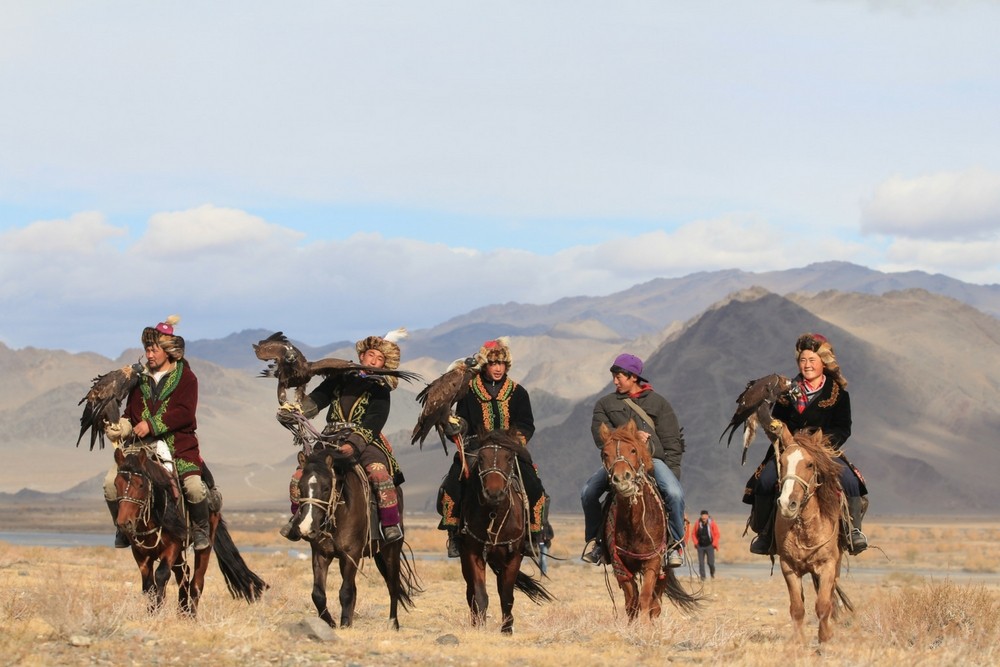
Riding horses with Kazakh hunters is a once-in-a-lifetime experience. Photo courtesy Nomadic Expeditions.
Don’t miss Travelers often ask to skip Ulaanbaatar , but Mongolia’s capital has quite a few attractions worth visiting. The National Museum of Mongolia and the Fine Arts Zanabazar Museum showcase both ancient artifacts and contemporary artwork by local artists, and there is a thriving gallery scene as well. The National Folk Song and Dance Ensemble, which was first formed by Kublai Khan and resurrected after the communist period, performs at the state theater during the summer. You can also shop here for the world’s finest cashmere, along with traditional felt slippers and fur hats.
Hidden gem Choijin Lama Temple , in the heart of Ulaanbaatar, is a hidden gem of history and architecture. The temple’s museum houses various Buddhist artifacts dating back to the 19th century, as well as thangkas (paintings on silk or cotton), a comprehensive collection of tsam masks, and several masterpieces by famed Mongolian sculptor Zanabazar.
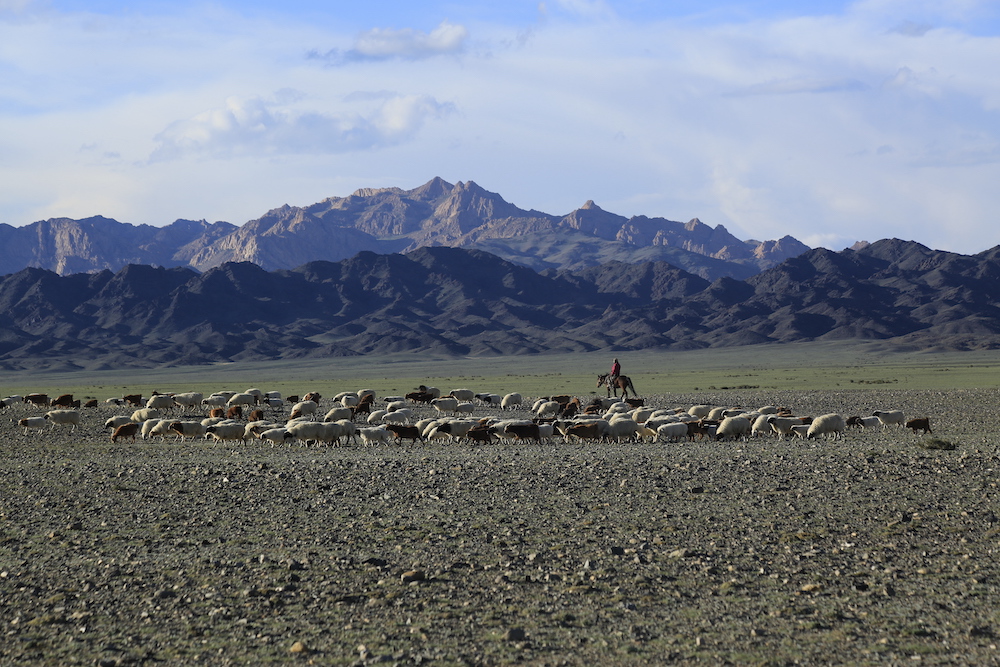
A herder and their sheep in Mongolia. Photo courtesy Nomadic Expeditions
Best for thrill seekers Mongolia offers several fabulous outdoor options: horse trekking through the northern region’s spectacular forests and meadows; hiking the Altai Mountains in search of the snow leopard; or riding horses with Kazakh hunters while their Golden Eagles hunt rabbits and foxes.
Bragging rights Many of paleontology’s greatest finds have come from Mongolia, and scientists continue to hunt for fossils here; Jalsa can not only provide entrée to their remote work areas (and set up luxury camps nearby), but also arrange behind-the-scenes access to the Paleontological Lab , part of the Natural History Museum in Ulaanbaatar. This underfunded museum has been closed for some time, but his travelers are welcomed into the rooms where paleontological treasures are kept, and where scientists toil away toward the next big discovery.
Although most of the country’s Buddhist monasteries were either destroyed or converted into museums during the Stalinist purges of the 1930s, Erdene Zuu Monastery in Karakorum survived. Jalsa can arrange a private blessing with a senior lama there.
Where to Stay and Eat
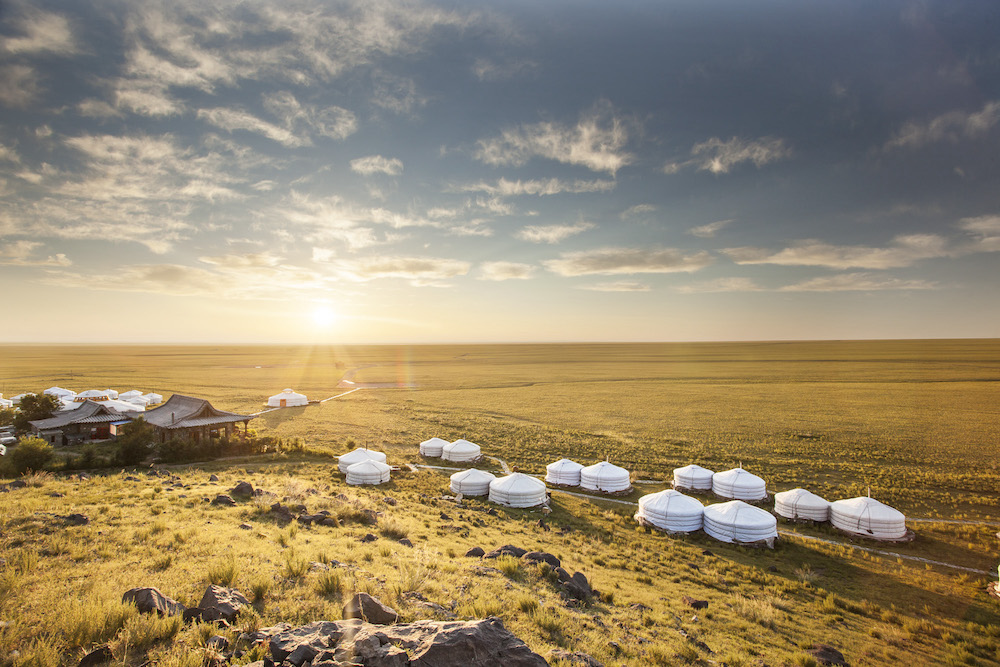
Three Camel Lodge in the Gobi Desert. Photo courtesy Nomadic Expeditions
Best bang-for-your-buck hotel The Shangri-La in Ulaanbaatar provides five-star accommodations and service (the latter can be lacking at the city’s more historic hotels), and with a sensible price tag. A true luxury property, it has a magnificent porte cochère and lobby, and well-appointed rooms. The complimentary breakfast and cocktails in a private lounge make the slightly more expensive Horizon Club rooms a good deal for many travelers transitioning between the comforts of home and Mongolia’s remote—and sometimes rough—countryside.
Best-value splurge hotels Slightly north of Ulaanbaatar, Terelj Hotel and Spa lies in a beautiful river valley adjacent to Gorkhi-Terelj National Park. This pristine setting is matched only by the creature comforts (marble bathrooms, Mongolian cashmere blankets, Egyptian cotton linens) that draw many members of parliament to these posh rooms. The spa is respectable, though perhaps not world-class. The Executive Rooms are a bit small, so if you want space to spread out, opt for a Superior Room or a suite.
Further south and set within the serene Gobi Desert, Jalsa’s own Three Camel Lodge is an eco-friendly and luxurious take on gers, the traditional felt tents used by nomads. Besides providing the only high-end accommodations in the Gobi Desert, the lodge also breeds native Mongolia Bankhar dogs to place with Gobi nomads to protect wildlife, supports a local music school, started a college scholarship program, and helped local families develop farms that provide food for the nearby ger camps. Note that the traditional ger design doesn’t allow for windows—but every door opens onto a lovely view of mountains or desert.
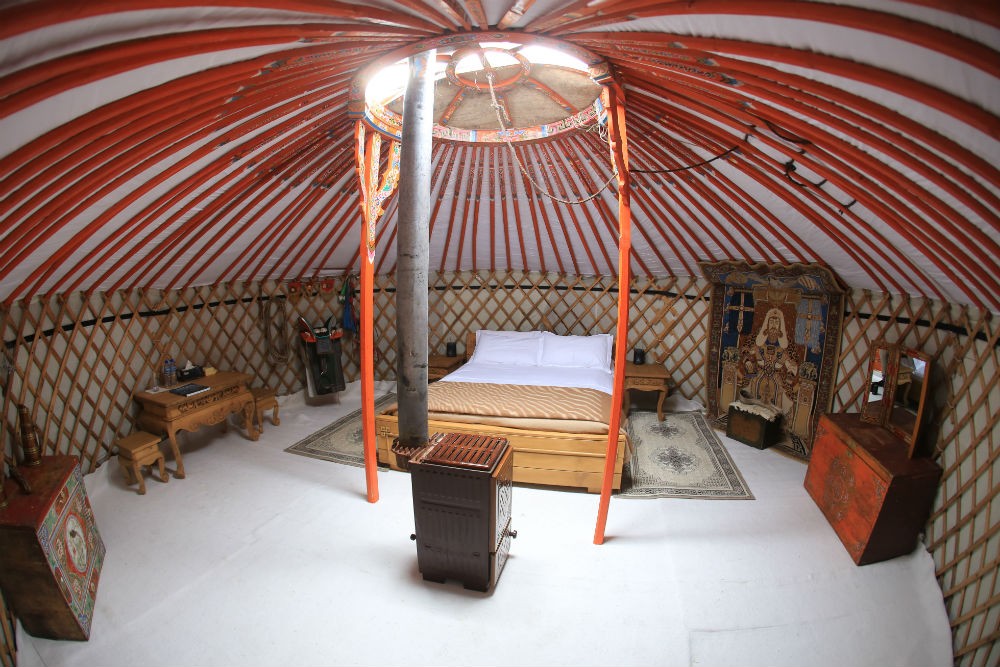
The inside of a luxury ger, Mongolia. Photo: Nomadic Expeditions
Dish to try Huushuur : traditional fried dumplings usually filled with meat (nowadays, you can sometimes find them filled with vegetables). They’re available throughout the country in cafés and restaurants, but they are especially memorable when sampled at the table of a Mongolian family.
Contact Jalsa
Not sure if this is the right person for you? Ask Wendy

Get a Personalized Trip Recommendation
For a travel solution tailored to your trip goals and preferences, click this green box.
Best Times to Go
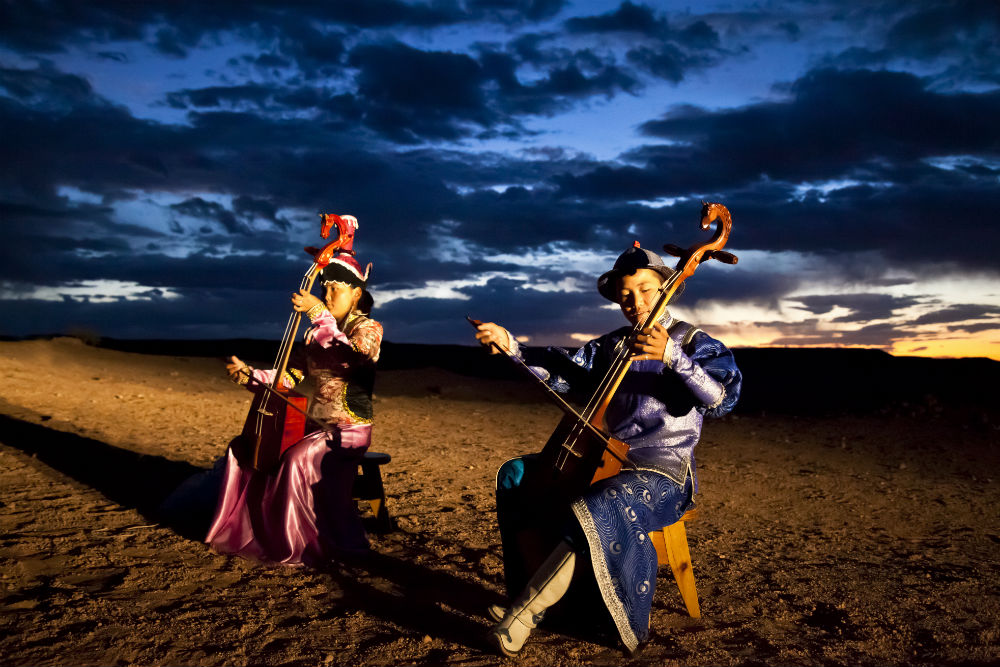
Early June is ideal for avoiding crowds, while the temperate weather of late August through September is perfect for camel trekking. The Golden Eagle Festival, a Kazakh hunting tradition in the Altai Mountains, is held annually in early October .
Worst Time to Go
December through April. Winter in Mongolia can be harsh, and many ger camps close during this time, limiting accommodations.
It is illegal to remove fossils from Mongolia—but that doesn’t stop people from attempting to sell them to unsuspecting tourists.
Biggest Rookie Mistakes
Not allowing enough time for traveling within the country. All domestic flights originate in Ulaanbaatar, so you are constantly returning to the capital in order to get from one region to another. To make matters worse, flights are often delayed and canceled.
Assuming that the Naadam Games—a festival of traditional sports such as horse racing, archery, and wrestling—are exclusive to Ulaanbaatar. Festival events are held all over the country. In the capital, the games are an increasingly touristy and grand occasion, a kind of national Olympics—but in smaller locations travelers can have a more immersive cultural experience, with competitors arriving on horseback and families gathering to celebrate the summer season.
Airport Intel
When you first arrive in the country, make sure to book the V.I.P. greeting service at Ulaanbatar’s Chinggis Khaan International Airport. This service allows travelers to bypass the lines at passport control and baggage claim.
Tipping Tip
Tipping is not customary in Mongolia, but many in the service industry have come to expect it from foreigners. If you choose to leave a gratuity, it should be about 5 to 10 percent .
Don’t Forget to Pack
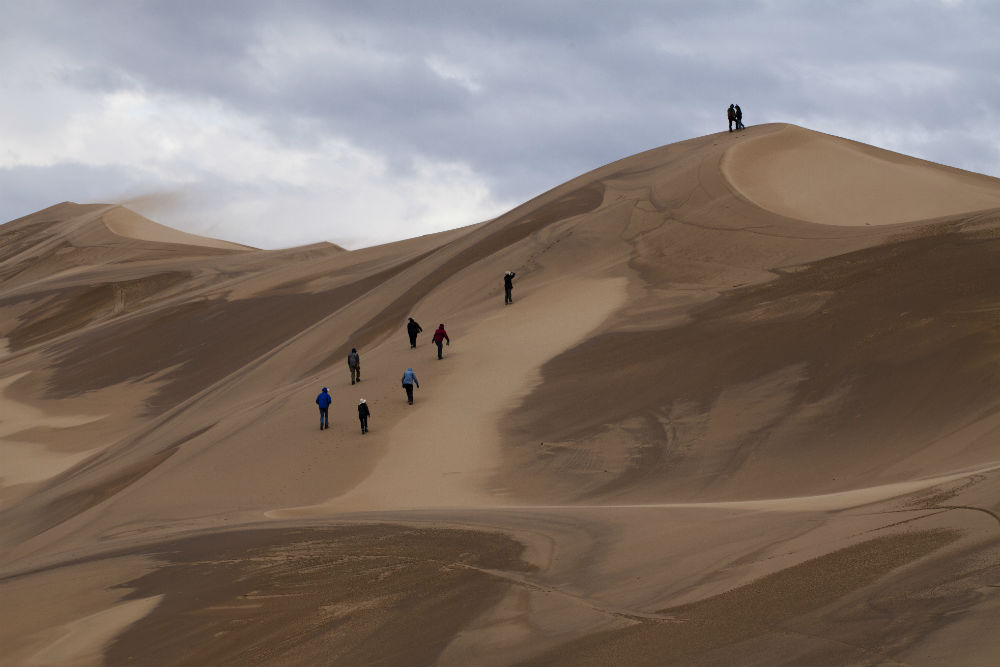
The Mongolian climate is extremely dry, so moisturizer and lip balm are essential.
Can't-Miss Photo Op
Sunset on a clear day at the Flaming Cliffs in the Gobi, when the sandstone glows bright orange.
The Souvenirs
Colorful Kazakh tapestries crafted by locals in the Altai region and sold throughout the country. Muslim Kazakhs have lived in this province for centuries, making it the only part of this majority Buddhist country that is not ethnically homogeneous.
Mongolian vodka is the smoothest in the world—it’s often distilled as many as ten times. You’ll find dozens of brands, many playing off the notoriety of Genghis Khan.
Wide open for exploration...
They all gave their best…, a number of surprises that….
Our Latest Newsletters

Be a Smarter Traveler
Sign up for Wendy Perrin’s newsletter to get essential travel updates and ideas to make your next trip extraordinary.

We may receive a referral fee from trip planners for trips designed for and purchased by travelers referred through us.
- Insider’s Guides to 177 Destinations
- Travel Tips
- Terms of Use
- Privacy Policy

- Where To Go When
A Tale of Two Mongolias | Inner Mongolia and Outer Mongolia
By Rich Beal
Inner Mongolia and Outer Mongolia... What's the deal?
For many people, when looking at an adventure to Mongolia, its simple look for the wide-open expanse between China and Russia choose a good tour company and your away. Although delve a little deeper and you may realise that there are two Mongolias outer and inner. It is easy to discern between the two for the following reasons.
A: Outer Mongolia is a free and open country with a democratically elected government while.
B: Inner Mongolia is a region (province) located in the Northern part of China and now considered part of China.
Both were traditionally inhabited by the indigenous Mongolian peoples and their various tribal lineages at one time they formed one Mongolia commonly referred to as greater Mongolia.
How did Mongolia come to be divided? Interested?
Then read on, and we'll try our best to explain...
The most straightforward answer and the one most tour guides plum for is that a deal was made between Russia and China during the Soviet period. Sure the more recent divide can be in part attributed to an agreement between these two nations, but for a complete answer, we have to go back much further to a time when Mongolia was the dominant force in the region.
The Nomads Who Would Rule the World
Nomadic tribes have been inhabiting today's Inner/ outer Mongolian territory and the surrounding areas since ancient times. The Mongol tribes have always caused the Northern Chinese peoples problems; this is the reason why in the 7 th Century BC, the Great Wall of China was begun.
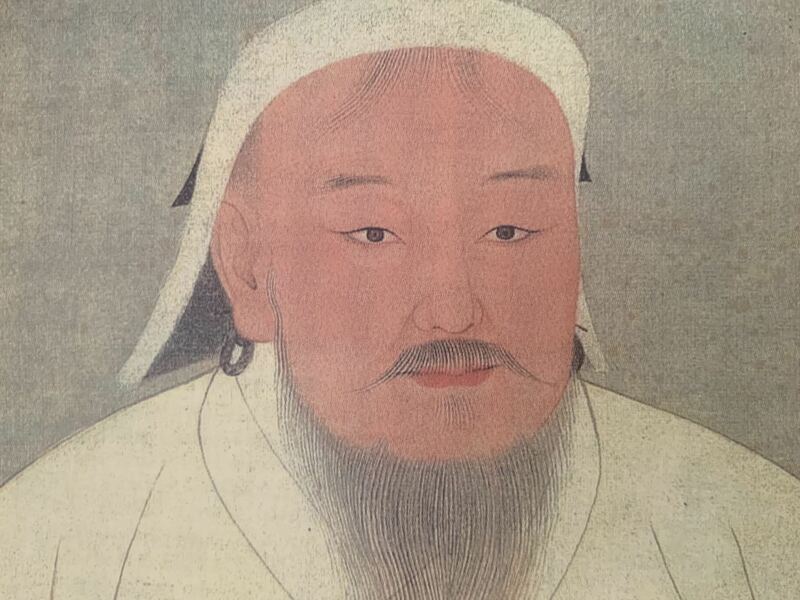
As the Mongolian empire started to grow, Genghis Khan eventually made inroads into China. Still, it wasn't until 1271 that Kublai Khan, the grandson of Genghis was to establish the Yuan dynasty. The Yuan dynasty a Mongolian run empire had complete control over present-day China and surrounding countries, making it the worlds largest land Empire. Kublai Khan even made his summer capital Shangdu (aka Xanadu) located near present-day Dolonnuur.
Unfortunately, by the time of the 15th century Mongols were no longer dominant, and their once-great empire lay splintered. Mongols stood divided. There were two main factions; Eastern and Western Mongols ( Oirads, Dzungars). The Eastern Mongols could also count on the Northern and southern tribes to boost their numbers.
The situation was chaotic, to say the least, made worse by the many regional leaders (khans) competing and battling it out to become the next prominent leader.
It was the Han-led Ming dynasty that overthrew the Mongolia Yuan dynasty in 1368. The Ming succeeded in capturing parts of Inner Mongolia including Shangdu and Yichang. Although eventually, the Ming prefered to fortify their country rebuilding the Great Wall of China In its present location, which follows the southern border of the modern Inner Mongolia Autonomous Region.
Inner Mongolia would continue as the political and cultural centre of the Mongols for many more years known as the Northern Yuan dynasty.
Meanwhile, further south the Manchus, a Jurchen group were slowly gaining power. The Manchus had aimed to not only to conquer China but also bring surrounding territories and countries into their fold. The Manchus were able to make rapid gains in Mongolia by capitalising on infighting of the Mongol people.
In 1634, the Southern Mongol leader, Ligden Khan, was defeated. Following his loss and subsequent death (smallpox), his army fell under Manchu leadership.
The Southern Mongol forces provided invaluable to the Manchus and their conquests the Chinese ruling Ming dynasty was to be swept aside consigned to the history books.
Problems Continue for Mongolia
Problems continued for Northern Mongolians as not only had they lost their southern allies and lands but the forces in the west were now making moves to spread and take control of the North and Eastern areas.
At the time the most significant portion of the Western Mongol territory covered what is now present-day Xingjiang Autonomous region and Tibet.
The people that inhabited this region were the Dzungar Mongols. The Dzunger now saw it as their time to expand their lands rallying forces they almost overran their Northern opposition.
A Deal too Far
In a bid to stem the rout the Northern Mongols were to turn to their now formidable Manchu neighbours and request assistance from the Qing dynasty.
Of course, the Qing were more than happy to help not only did they ride to the west they were to reign in the Northern Mongolian region as a vassal state.
To the west, carnage ensued the Qinlong troops were to ride into the Dzunger lands and perpetrate one of the bloodiest genocides of the time. By the close of the year 1758, almost a million Dzunger were dead, killed by war famine or smallpox.
The Dzunger were virtually wiped from existence their lands now known as Xinjiang were to be repopulated by Han Chinese and Hui migrants.
What's in a Name?
Due to cooperation of Southern Mongolia and its support for the Qing, it was to be named Inner Mongolia in reference to its trust amongst an inner circle of regions. As for the North, it continued to battle unsuccessfully for its freedom and became outer Mongolia (never fully trusted).
There were to be many attempts by Inner, Outer and Western Mongolians to reunify. Unfortunately, all failed. The Manchus were clever to establish a strict system of division amongst the regions. It was forbidden for Mongolians and other ethnic groups to travel to the neighbouring areas within the Mongolian regions.
During the Qing Dynasty, it was also not allowed for Han Chinese to travel to Mongolian provinces; the mass migration of the Han Chinese to Inner Mongolia as we know it was to occur after the fall of Qing dynasty (much later in the 1950s).
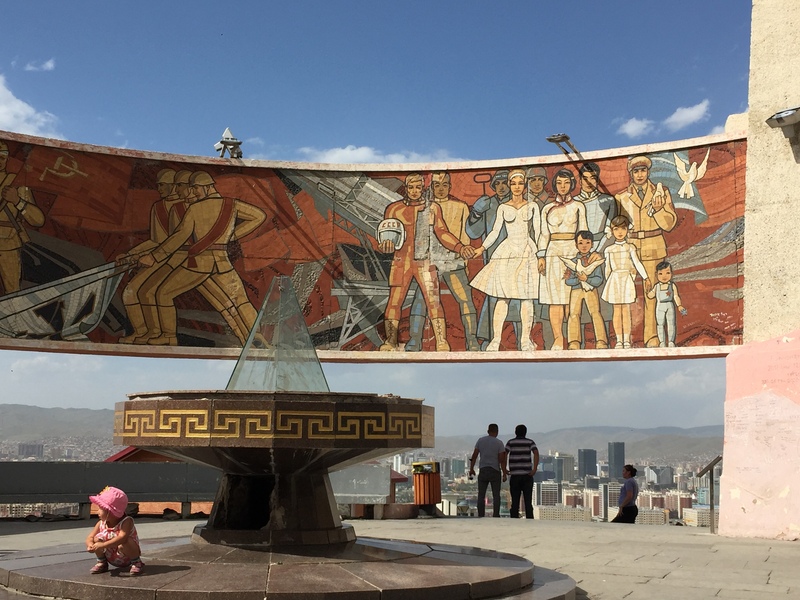
Up until 1911, the Qing had controlled Outer Mongolia with the power given to affluent Mongolian noble families whom in turn were expected to keep their fiefdoms in check. Qing overseers and military garrisons were always on hand to meet out harsh punishments and quell any voice of dissent.
The winds of change were, to begin with, the collapse of the Qing dynasty in 1911. The religious leader at that time the Bogd Khan immediately declared Mongolia's independence.
Things were not that easy, however, as the new Republic of China believed Mongolia to be part of its territory. The Bogd Khan raised forces from across the country, successfully pushing the Chinese troops from the nation's centre.
However, as they moved south, momentum lost, and extra soldiers promised from Russia failed to materialise, Inner and Outer Mongolia remained divided.
Outer Mongolia was again to lose its independence in 1919 as Chinese troops commanded by the warlord Xu Shuzheng occupied the country. However, Xu Shuzheng's reign was not to last with Russian support forces began to push the Chinese from outer Mongolia.
In the year 1921, independence was once again declared, and a battle-weary Mongolia aligns itself with the Soviet Union.
It was discussed and agreed at the Yalta conference in 1945 that if the Soviet Union participated in the pacific war, then Mongolia's independence would still stand and be recognised.
With the establishment of the People's Republic of China, there was to be another attempt at preventing Outer Mongolia's independence. However, after much debate, independence was agreed.
On the 27 October, 1961 Mongolia was eventually admitted to the UN.
Inner Mongolia and Outer Mongolia NOW
Inner Mongolia remained in the firm grip of China.
The 1950s saw mass migration from the Han Chinese into the region. Much of the grasslands have been turned over to intensive arable farming, and vast mines work the mineral-rich lands.
Inner Mongolia accounts for 12% of the total Chinese landmass, is home to almost 30 million people (80% of whom are Han Chinese), and as well as rare earth Inner Mongolia contains around 15% of the worlds total coal reserves.
As much as many Mongolians would like to dream of a Greater (unified), Mongolia it looks to remain a dream.
Koryo Tours Mongolia Tours

Rich Beal is our International Tours Manager.
Rich is one of our most experienced tour leaders . He has led tours worldwide since 2004, specialising in Mongolia , Tajikistan , Turkmenistan , and the surrounding area. Currently living in Mongolia , he leads multiple specialised trips annually and has over 20 years of experience running and designing tours of the region.
Related articles
Mongolia, eagle hunters, and new homes.
The best place to be "Trapped?"
Which Countries are Communist, Which Countries are Socialist | Communist Countries / Socialist Countries
Which Countries are Communist, Which Countries are Socialist (Communist Countries / Socialist Countries 2021)
Pre-Korean War Buildings in North Korea: Pyongyang
A partial list of buildings which survived the Korean War in Pyongyang.
What is Soju, the Korean Alcohol You’re Missing in Your Life?
Soju is light in taste, cheap, and not too strong. Does Soju alcohol have the potential to take over beer and wine?
Three Kingdoms of Korea: Goguryo, Silla, Baekje
Three Kingdoms of Korea
Leader of DRPK (North Korea): All You Need to Know
An insight into the leaders of DPRK (North Korea) over the years since founding
🇨🇳 Flags of the World: China Flag
Chinese Flag
North Korea Since 1993, Before and After | Part 1
Before and after photographs from our visits to North Korea since 1993.... and a few unusual collections thrown in too
HOW to Wear a Hanbok Like a Korean (2021)
Traditional Korean clothing is truly beautiful - but a hanbok can be quite tricky to put on for women. A guide for how to wear a hanbok!
Visa for... How to Get a Tajikistan Visa
Tajikistan Visa
75th Anniversary of Party Foundation and Liberation Day (2020)
Growing up in Mongolia
There are some exciting milestones involved in growing up in Mongolia - read on and learn a little more.
Visa For Turkmenistan, How to Get a Turkmenistan Visa
Don't be fooled. Getting a Turkmenistan visa is usually fairly straightforward! Read on for how to get the Turkmenistan Visa...
10 Famous North Korean Monuments & WHY
An introduction to North Korea's monuments and statues and their significance
Flags of the World | Mozambique Flag
Mozambique flag
You have successfully joined our subscriber list.
- Group Tours
- Private Tours
- Pyongyang Marathon
- Turkmenistan
- Cultural Engagement
- Country profile
- Terms & conditions
- Why choose Koryo
[email protected] | + 86 10 6416 7544 Room A409, Jucai Building. No. 76 Caoyuan Hutong. Dongcheng District, Beijing, 100027, PR China
中国北京市东城区草园胡同76号聚才大厦A 座409 室, 邮编:100027 Download contact card
Not registered yet? Register now
Trouble logging in? Reset password
* All fields are mandatory
Got an account already? Let me log in
61 Useful Tips for Travelling to Mongolia (Backpacker’s Guide)
March 28, 2020.
Everything you need to know about travelling in Mongolia. Where to visit, how to get around, safety, and more are covered in this comprehensive travel guide.
Mongolia is one of my favourite countries I’ve ever visited. Known as the “land of the blue sky”, Mongolia is home to an incredible nomadic culture and gorgeous natural beauty. It’s also one of the least visited countries in the world, making it a great off-the-beaten-path backpacking destination.
I spent over three weeks backpacking around Mongolia and learned a lot about the best ways to travel around it. I can’t wait to get back soon and see more of it.
In this post, I’ll go over everything you need to know about travelling in Mongolia based on my experience.
After reading this guide, you’ll be ready to head out and see the rugged streets of Ulaanbaatar, the singing sand dunes of the Gobi Desert, and the endless steppe of the Orkhon Valley.
- 1 Backpacking Mongolia
- 2 Visas for travelling to Mongolia
- 3 Safety in Mongolia
- 4 Money in Mongolia
- 5 Communication in Mongolia
- 6 Getting to Mongolia
- 7 People & Culture of Mongolia
- 8 Where to visit in Mongolia
- 9 Tours in Mongolia
- 10 Food in Mongolia
- 11 Accommodation in Mongolia
- 12 Transportation in Mongolia
- 13 Mongolia Travel Itineraries
- 14 When to visit Mongolia
- 15 Travel Costs in Mongolia
- 16 Internet & SIM Cards in Mongolia
- 17 Solo Travel in Mongolia
- 18 Female Travel in Mongolia
- 19 Travelling in Mongolia Wrap-Up
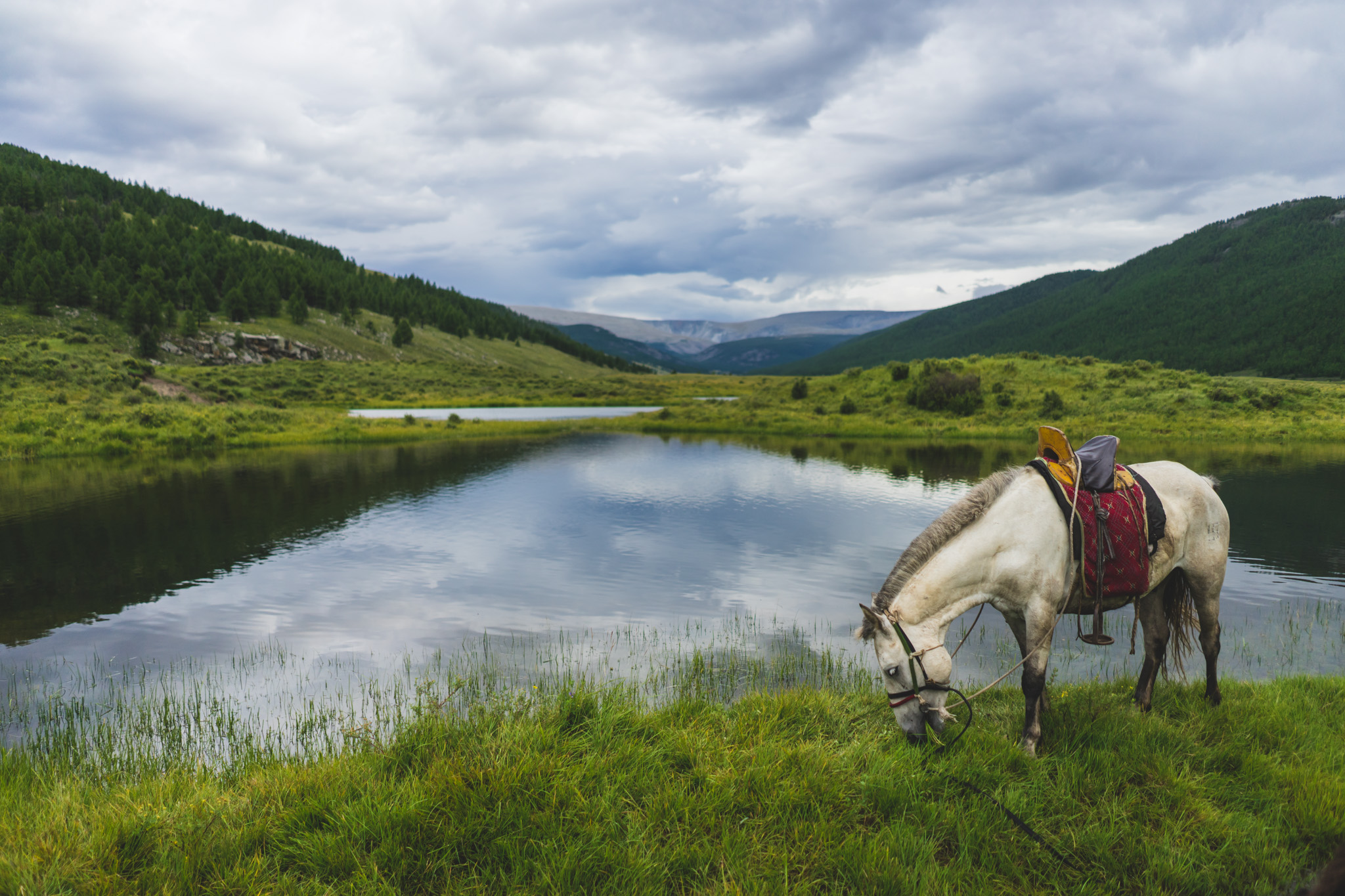
Backpacking Mongolia
Mongolia is the perfect backpacking destination. It’s got a ton of unique landscapes including the Gobi Desert to the Altai Mountains. Mongolians are very friendly and want to show tourists a good time. It’s an affordable country to travel in, especially if you’re willing to rough it a bit.
I definitely think more people need to add backpacking Mongolia to their bucket list. It’s a country like no other and is a must-see if you’re planning a long trip to Asia.
Visas for travelling to Mongolia
1 – Visa-free access to Mongolia: People from certain countries are lucky enough to get visa-free access to enter Mongolia by air or land! Visa-free length varies by passport, here is the current list:
90 days visa-free : Argentina, Belarus, Brazil, Chile, Kazakhstan, Kyrgyzstan, Macao, Serbia, Ukraine (with invitation), USA 30 days visa-free : Canada, Cuba, Germany, Israel, Japan, Laos, Malaysia, Russia, Singapore, Thailand, Turkey, Uruguay 21 days visa-free : Philippines 14 days visa-free : Hong Kong
2 – Mongolia visa at an embassy: If you’re not on the above list of countries, you should apply for your Mongolia visa at your nearest Mongolia embassy.
To apply for a tourist visa, you’ll need:
- Completed application form
- 3.5×4.5cm photo
- Copy of hotel booking in Mongolia
- Copy of flight/train tickets
For the most up-to-date requirements, contact the embassy that you wish to apply at.

3 – It is no longer possible to extend your visa in Mongolia: While you used to be able to apply for a 30-day visa extension in Ulaanbaatar, as of 2019 this is no longer the case.
Travellers have been reporting that they are told to simply pay a $4 per day overstay fee instead, as long as the overstay is less than 58 days. If you overstay longer than 58 days, you will be deported.
Safety in Mongolia
4 – Is it safe to travel to Mongolia?: I’d say that Mongolia is a pretty safe country to visit. According to the Canadian government (which is usually pretty conservative with travel advisories), you should simply exercise normal precautions while visiting Mongolia.
Be careful around drunk people. Unfortunately, certain people can become quite aggressive, especially if you’re a foreign dude talking to a Mongolian girl. Avoid walking around Ulaanbaatar in the dark – it’s better to take a taxi.
Carry some medical supplies if you’re going anywhere outside of Ulaanbaatar. It’s a long way to a pharmacy when you’re in the middle of the Gobi Desert.
Use common sense and you’ll be perfectly fine when backpacking Mongolia, but of course, you should purchase travel insurance before you visit Mongolia.
For more information, check out my post on staying safe in Mongolia .
Travel Insurance for Mongolia
5 – Travel insurance for Mongolia: No matter where you go, you should always have travel insurance – Mongolia is no exception. Even though Mongolia is safe, accidents can still happen.
I personally use and recommend World Nomads. It’s designed for adventurous travellers with cover for overseas medical, evacuation, baggage and a range of adventure sports and activities (important if you plan on doing any treks or other outdoor adventures while backpacking in Mongolia).
GET YOUR FREE QUOTE FROM WORLD NOMADS HERE
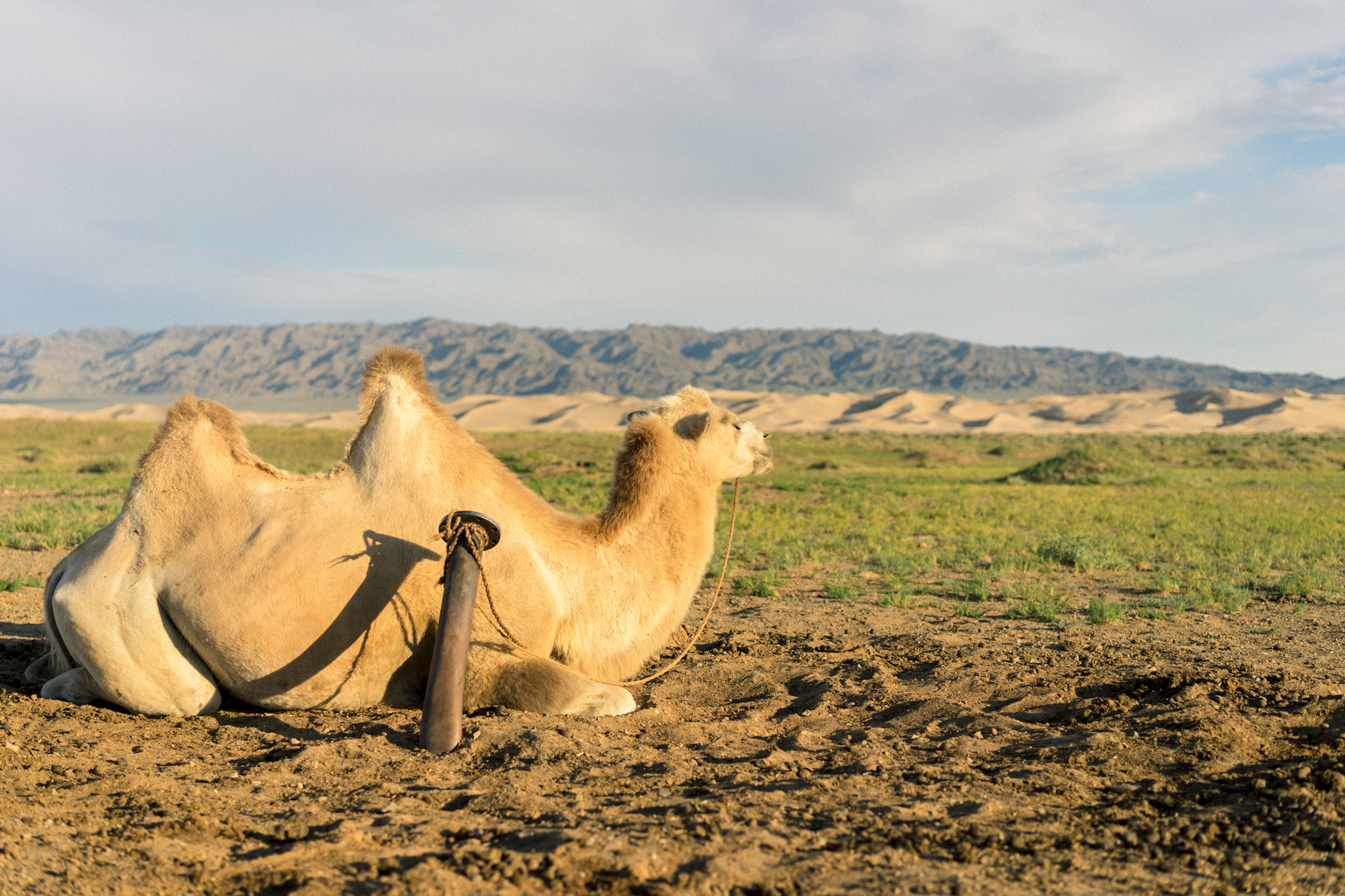
Money in Mongolia
6 – The Mongolian tugrik (MNT) is the official currency of Mongolia: Sometimes also written as tögrög, the Mongolian currency is quite low in value. The current rate as of January 2020 is 1 USD = 2740 MNT .
7 – There are plenty of ATM machines in Ulaanbaatar: In Ulaanbaatar, it’s easy to find an ATM machine that will accept an international Visa or Mastercard, and this is how I got all of my local currency during my trip to Mongolia. Credit cards are not commonly accepted at businesses in Mongolia, but you may have some luck at high-end hotels and restaurants.
8 – Outside of Ulaanbaatar, ATMs are unreliable: If you’re planning on heading out into the countryside, you should bring as much cash as you think you’ll need. It’s difficult to find a working ATM even in some of the larger towns, and even then it might be out of cash.
9 – Converting USD to MNT works too: You can also bring USD from home and convert it to tugrik when you’re in Mongolia, although you might not get quite as good a rate as if you’d used an ATM. It may be possible to change RMB, EUR, or RUB, but don’t count on this.
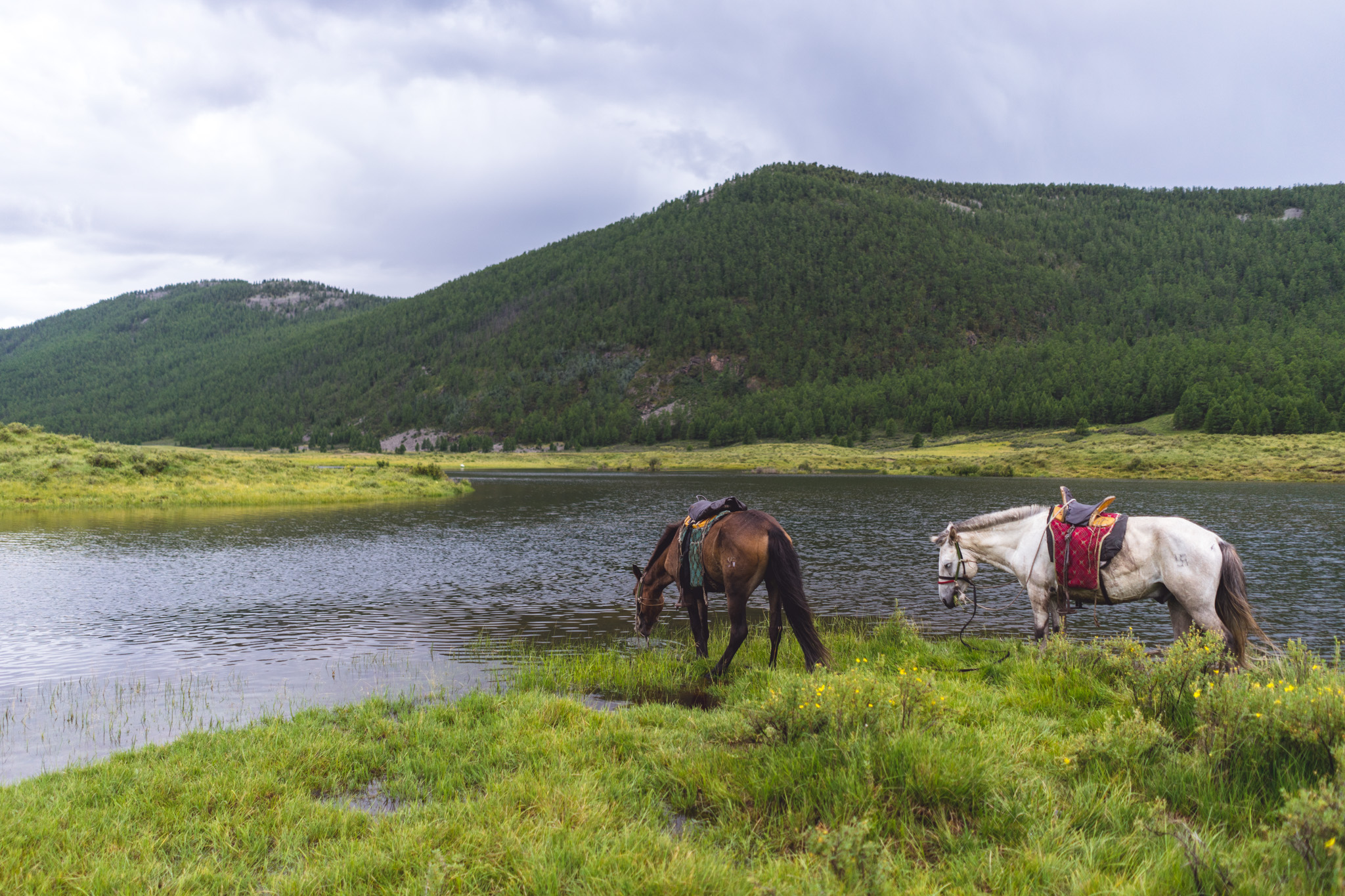
Communication in Mongolia
10 – Mongolian is the official language of Mongolia: Spoken by around 95% of the population, Mongolian is by far the most common language in Mongolia.
11 – In Mongolia, the language is written using the Cyrillic alphabet: While there is a traditional Mongolian script that is used in Inner Mongolia province of China, Mongolia uses the Cyrillic script to write Mongolian.
12 – You don’t need to know Mongolian to travel in Mongolia: You don’t need to know any Mongolian to travel in Mongolia, but knowing the Cyrillic alphabet can be a huge help. If you learn the Cyrillic alphabet, you’ll be able to read signs and certain words on menus. It only takes a few hours to learn the basics – check out this resource to learn more.
Luckily, most people who travel outside of Ulaanbataar will be with an English-speaking guide, so they’ll help you get over any language barriers in rural areas.
Really want to impress the locals? Pick up a Mongolian Phrasebook and try to use it while you’re in Mongolia!
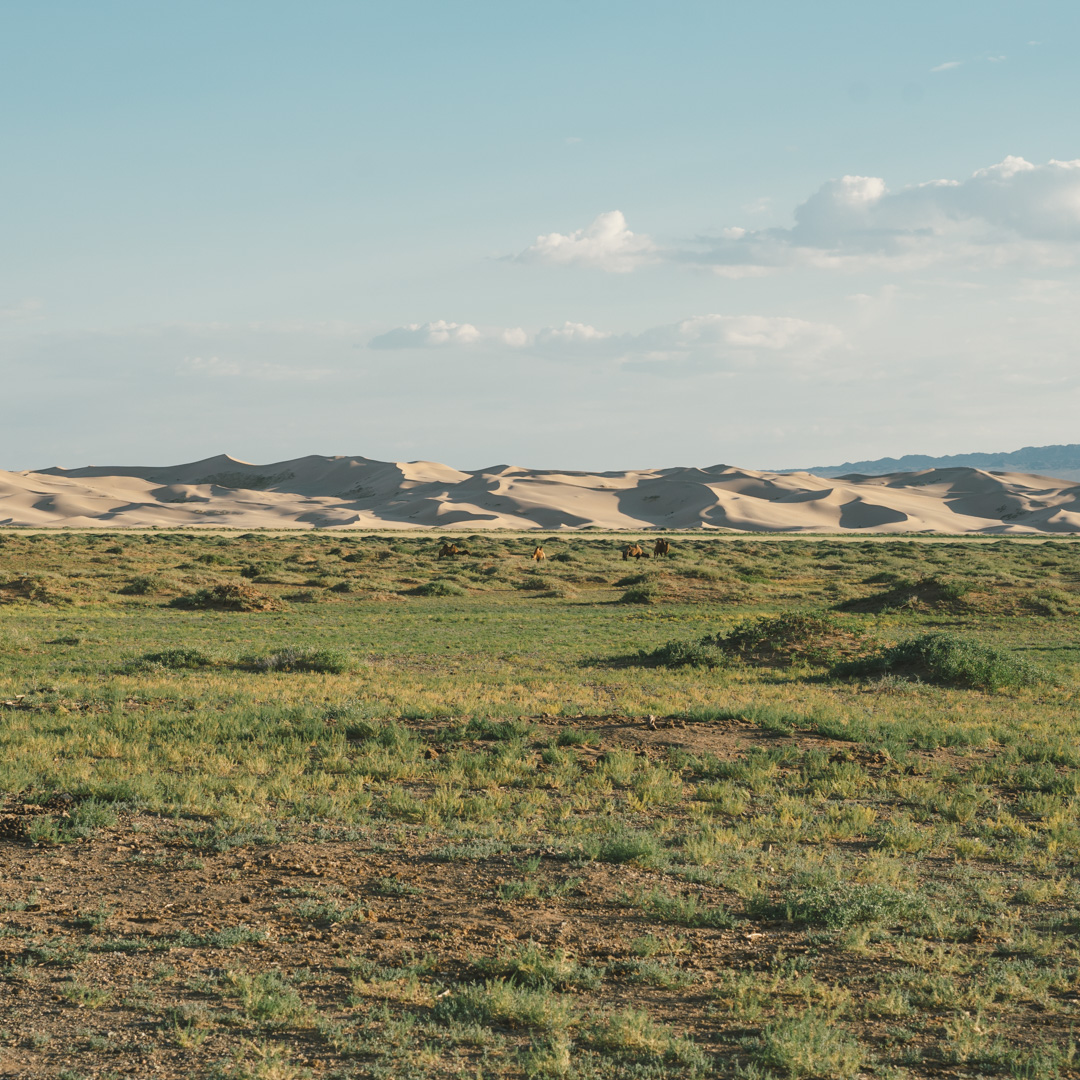
Getting to Mongolia
13 – Overlanding into Mongolia via either China or Russia is totally possible: There are a number of border crossings to both China and Russia that are open to foreigners. Border procedures are fairly straightforward, as long as you’ve got a valid visa (or don’t need one).
14 – The current border crossings with China are:
Erlian – Zamin Uud: This border crossing is quite straightforward. I wrote a complete guide to getting from Beijing to Ulaanbaatar , so check that out if you’re planning on taking that route (or that route in reverse).
Takashiken – Bulgan: Border crossing between Urumqi and the Mongolian Altai. It is possible to reach this border via public transport from Urumqi and continue onto Khovd by shared taxi. Expect long border procedures on the Chinese side (including a search of electronic devices).
One other lesser-used border that is open for tourists is the Khatavch – Bichigt Zuun crossing. Do note that the border crossings with Xinjiang Province are subject to random closures.
15 – The current border crossings with Russia are:
Kyakhta – Altanbulag : The main road border crossing between Ulan-Ude and Ulaanbaatar. There are direct buses between the two cities, taking about 12 hours to complete the trip.
Sükhbaatar – Naushki : This is the railroad border crossing for the Trans-Mongolian Railway between Ulan-Ude and Ulaanbaatar. Very straightforward – immigration officers will board your train and stamp you in.
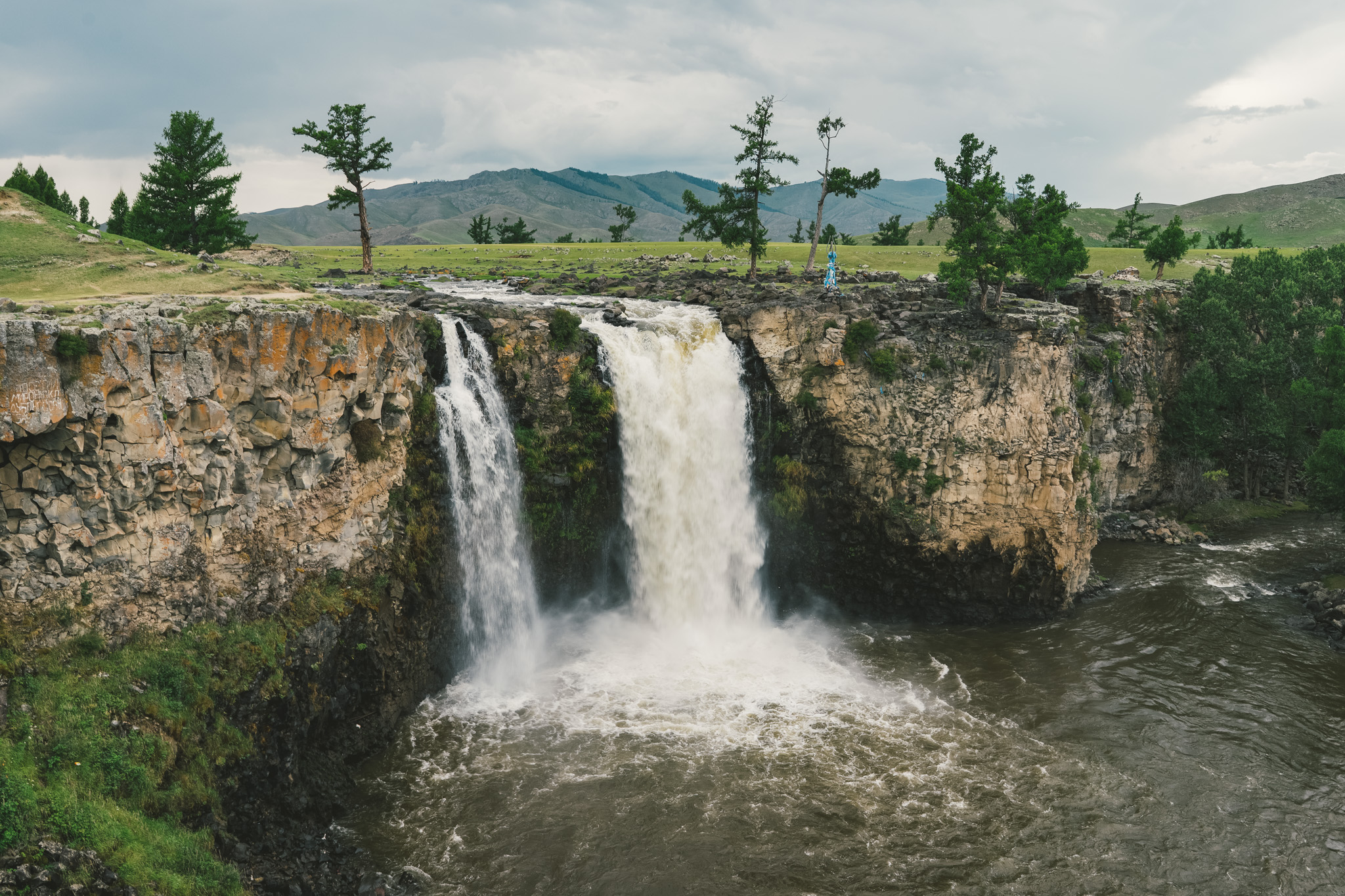
16 – Mongolia is an expensive country to fly into, and isn’t well connected by air: It can be a bit pricey to fly into Mongolia from Europe and North America. Ulaanbaatar (ULN) is the only airport in Mongolia with international flights, so you’ll most definitely be flying into here.
17 – Mongolia’s flag carrier is MIAT Mongolian Airlines: They offer direct flights to Frankfurt, Moscow, Bangkok, Beijing, Hong Kong, Guangzhou, Seoul, Busan, Tokyo, and Osaka.
Other airlines operate flights from Ulaanbaatar to Istanbul, Astana, Irkutsk, Tianjin, and Hohhot.
As you can see, there aren’t that many places you can fly to Mongolia from without a connecting flight.
I recommend using Google Flights to find the cheapest flights to Mongolia.
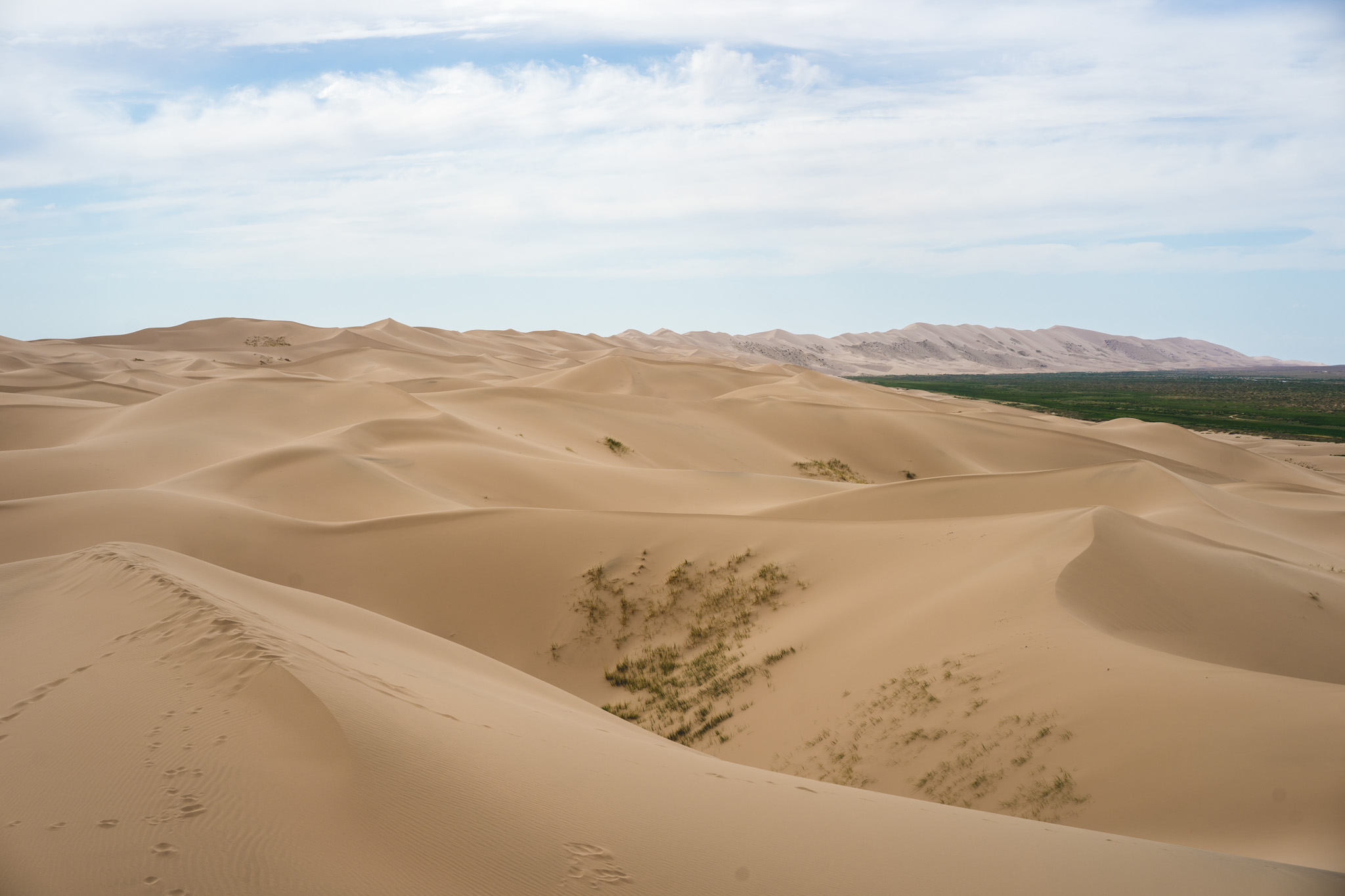
People & Culture of Mongolia
18 – Mongolia is the most sparsely populated country on Earth: A lot of the country’s traditions and culture stems from this fact.
19 – The country became independent from the Qing Dynasty in 1911: There is a lot of shared history between Mongolia and China, although nowadays Mongolians don’t look upon China very fondly.
20 – Most people in Mongolia are Mongolian: In fact, a whopping 96% of the population is Mongolian. The other 4% are Kazakhs in the far western Altai region of the country.
21 – Buddhism is the most popular religion in Mongolia: Over 50% of Mongolians are Buddhist, making it by far the most common religion. Another 39% are non-religious, and the remainders are split up between Islam, Shamanism, and Christianity.
22 – There isn’t really a dress code in Mongolia: There is no set dress code here, but it is still a conservative society so it’s best to dress modestly. In the central areas of Ulaanbaatar, things are a bit more liberal.
Where to visit in Mongolia
23 – Most of Mongolia is empty, so getting around can take a long time:
The country can be divided up into six distinct regions based on differences in culture and geography. Each region requires at least a week to properly visit (aside from Ulaanbaatar).
Let’s cover all of the best places to visit during your travels in Mongolia.
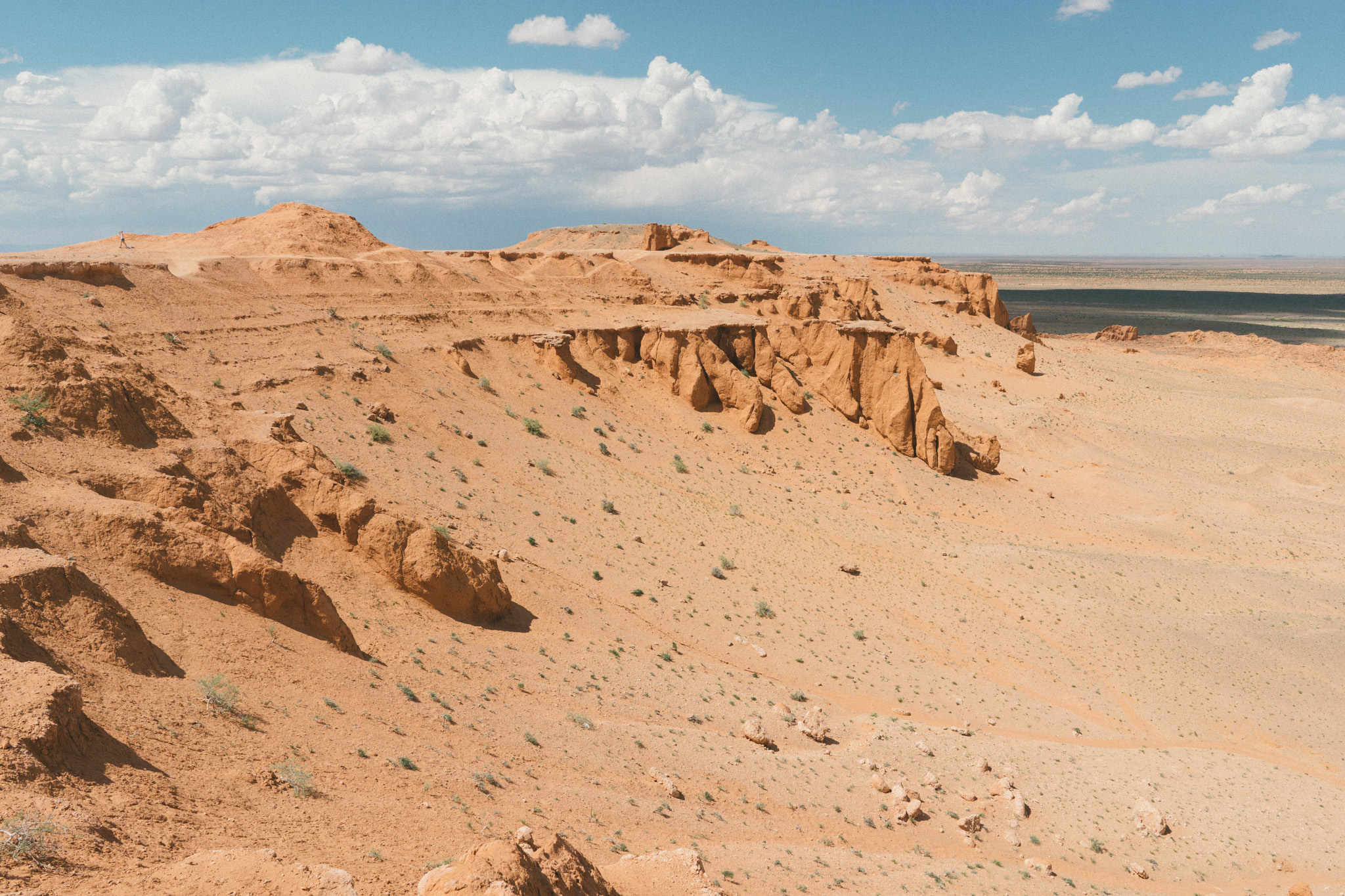
Backpacking Ulaanbaatar
24 – Almost every traveller will begin their adventure in Mongolia’s capital city of Ulaanbaatar: Ulaanbaatar is the only real city in Mongolia and is home to over half of the countries population. The city is connected to China and Russia via the Trans-Mongolian Railway and has an international airport.
The city is a great place to organize tours into the countryside, visit museums, eat, shop, and chill out after a long journey through the steppe.
I’ve met a lot of travellers who told me that they hated Ulaanbaatar, but I kinda liked it. There are some nice western-style cafes, good restaurants, and some malls if you need to get any gear.
25 – There isn’t much to do in Ulaanbaatar, but it’s alright for a couple of days: While most travellers visiting Ulaanbaatar are here to organize the rest of their Mongolia adventure, there are a few things worth checking out in the city itself.
When you arrive, pay a visit to the Genghis Khan Square and take in the atmosphere of the political center of Mongolia. Next, make your way to the Gandantegchenling Monastery for a look at some of Mongolia’s Buddhist traditions.
If you’ve got some extra time, you can also check out the National History Museum . For any shopping that you need to do, hit up the State Department Store.
26 – Ulaanbaatar is full of great hostels: It’s the perfect place to meet other people who want to travel around Mongolia.
I’d recommend staying at the Golden Gobi Hostel when you’re in Ulaanbaatar.
They’re super organized with arranging tours to the other parts of Mongolia, and the hostel is a great place to meet other travellers. I had a great time here!
Also, consider Sunpath Mongolia – they provide similar quality and services to the Golden Gobi hostel.

Backpacking Central Mongolia
27 – Central Mongolia one of the more popular regions among travellers: It’s not far from Ulaanbaatar and offers gorgeous natural beauty along with hospitable nomadic people.
The main tourist sights in Central Mongolia are the Gorkhi-Terelj National Park, the ancient city of Karakorum, and the incredible Orkhon Valley.
28 – Gorkhi-Terelj National Park: Located only 70 kilometres from Ulaanbaatar and is a great place to visit if you have a short amount of time in Mongolia. In the park, you can go hiking, horseback riding, and stay with nomadic families.
Gorkhi-Terelj NP is one of the most popular tourist destinations in Mongolia, so there are plenty of tourist camps offering all sorts of services.
You can access the park via 2 daily buses departing from Ulaanbaatar – do note that there is a 3000₮ entrance fee at the park gate.
29 – Karakorum: The city of Karakorum was the capital of the Mongol Empire and visited by Marco Polo on his during his travels through the area.
When you’re here, roam around the historic former capital of Mongolia and learn more about its history.
30 – The Orkhon Valley: This gorgeous valley is located about 300 kilometres from Ulaanbaatar and follows the banks of the Orkhon River. It’s a lush grassland home to many nomadic people who still live traditional lives in ger camps. Orkhon Valley is also home to Mongolia’s tallest waterfall.
The Orkhon Valley is the perfect place to embark on a multi-day horse trek or spend some time living with a local family. The landscapes here are beautiful, and it’d be a shame to only visit for a day! Try not to miss the Naiman Nuur National Park (Eight Lakes).
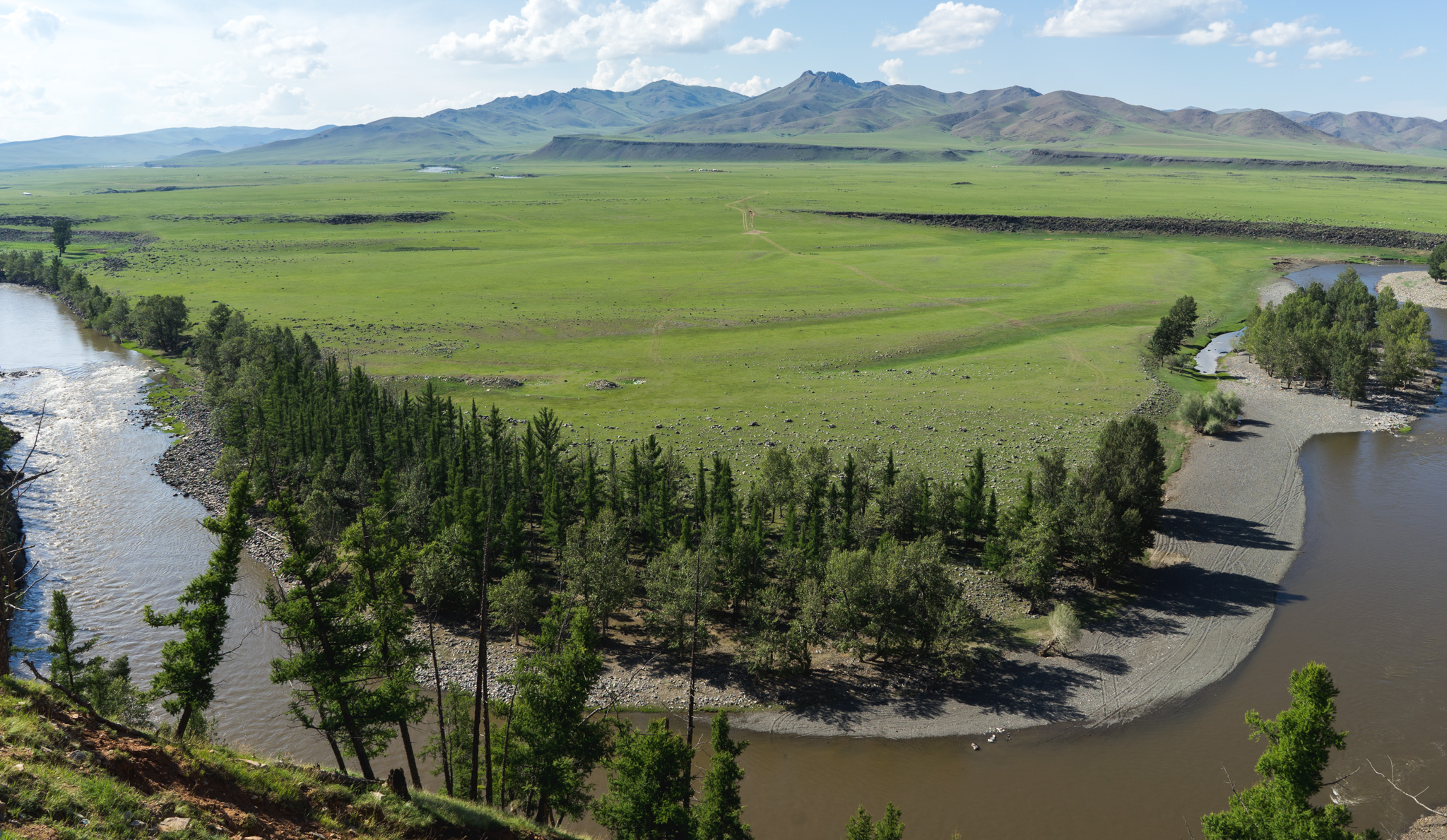
Backpacking the Gobi Desert
31 – Basically all of Southern Mongolia is covered by the Gobi Desert: It’s Asia’s largest desert and is home to camels, massive sand dunes, and a ton of other interesting sights.
This region is fairly accessible from Ulaanbaatar. Dalanzadgad is the capital of the region, and you can get there from Ulaanbaatar by bus in about 10 hours.
The main sights to visit in the Gobi Desert are:
32 – Yolyn Am: Yolyn Am is probably not what you would’ve expected from the Gobi Desert. It’s a deep, narrow gorge that often has snow left in it well into summer months.
When here, you should spend a couple of hours hiking (or horseback riding if you’re confident) through the gorge.
33 – Bayanzag (Flaming Cliffs): The Flaming Cliffs are one of the more famous spots in the Gobi Desert, for good reason! They’re absolutely stunning and make for epic photographs (especially at sunset).
In the 1920s, the first-ever dinosaur eggs were discovered here by an American paleontologist, and a number of subsequent fossil finds have occurred here.
34 – Khongoryn Els: When you think of the Gobi Desert, giant sand dunes probably come to mind. Don’t worry, Khongoryn Els has got you covered!
Some of the dunes are over 300 meters tall, and they go on for over 100 kilometres. Hiking up the tallest dune and watching the sunset was one of my favourite travel experiences.
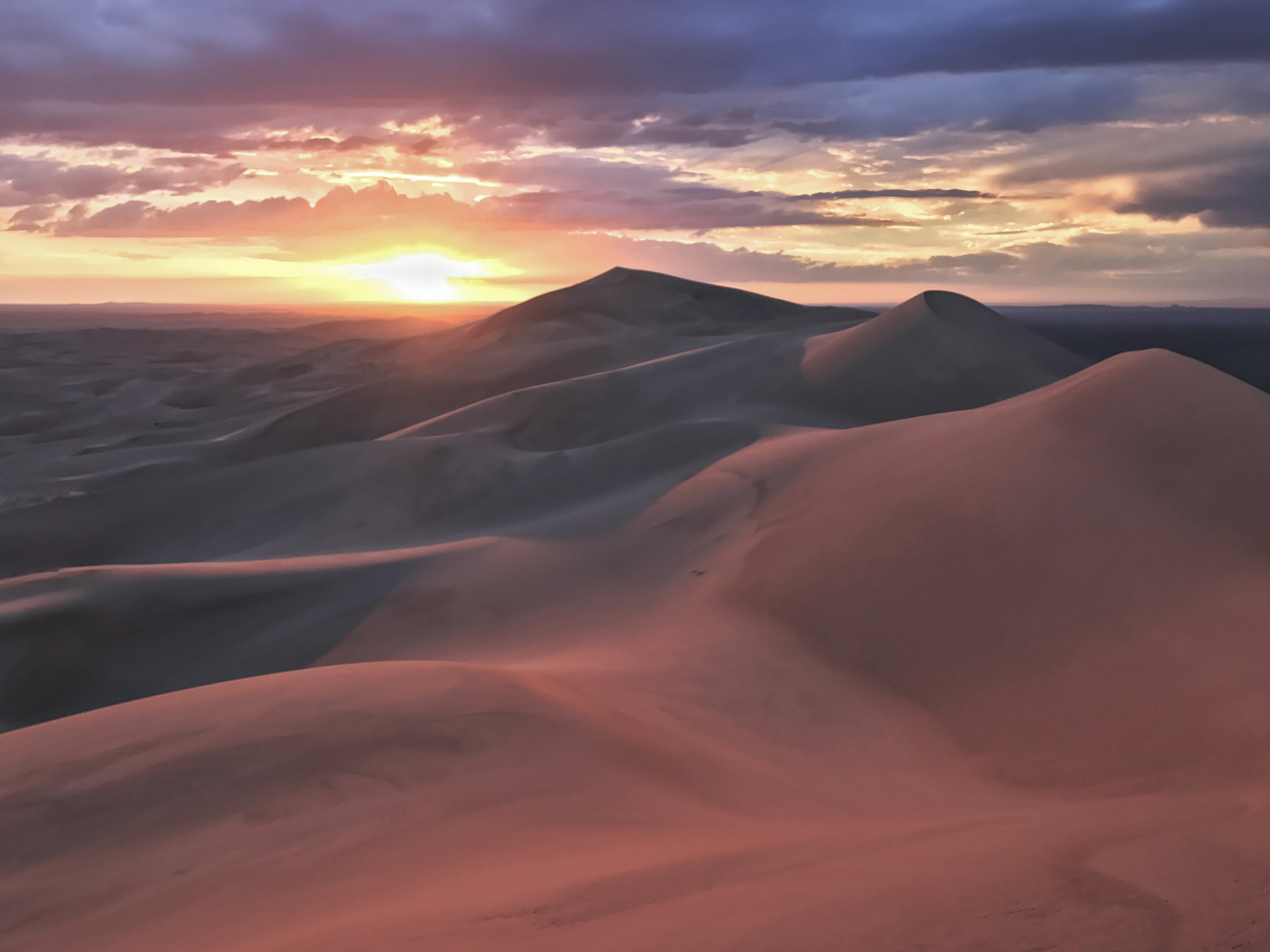
Backpacking Northern Mongolia
35 – Mongolia’s north is home to Lake Khuvsgul, the most beautiful lake in the country: In the northwest of Lake Khuvsgul, the Tsaatan tribe are one of the only remaining groups of nomadic reindeer herders.
Most travel around Northern Mongolia will be based out of the town of Moron. Getting to Moron can take a while – there are buses running from Ulaanbaatar that take about 12 hours, or you can take a flight for around $150 USD.
Visiting the Tsaatan tribe can take some time, requiring a multi-day horse riding journey. If you plan on visiting the Tsaatan, do your research and find an outfitter that places an importance on sustainability and preservation of the Tsaatan culture.
Backpacking Western Mongolia
36 – Western Mongolia is the most remote part of Mongolia: Most travellers will visit this region to journey into the Altai Mountains. Ölgii is the starting town for most adventurers in the region. Ölgii a 48-hour bus ride from Ulaanbaatar, or a short flight.
In early October, the Kazakh inhabitants of the region host the Golden Eagle Festival.
I haven’t visited this region yet, but I plan on making it a large focus of my next trip to Mongolia.
Backpacking Eastern Mongolia
37 – Eastern Mongolia is rarely visited but is home to the birthplace of Genghis Khan: Much of the region is a vast steppe without many interesting tourist sights. If you’ve been to Eastern Mongolia, let me know more about it and I’d love to update this section!
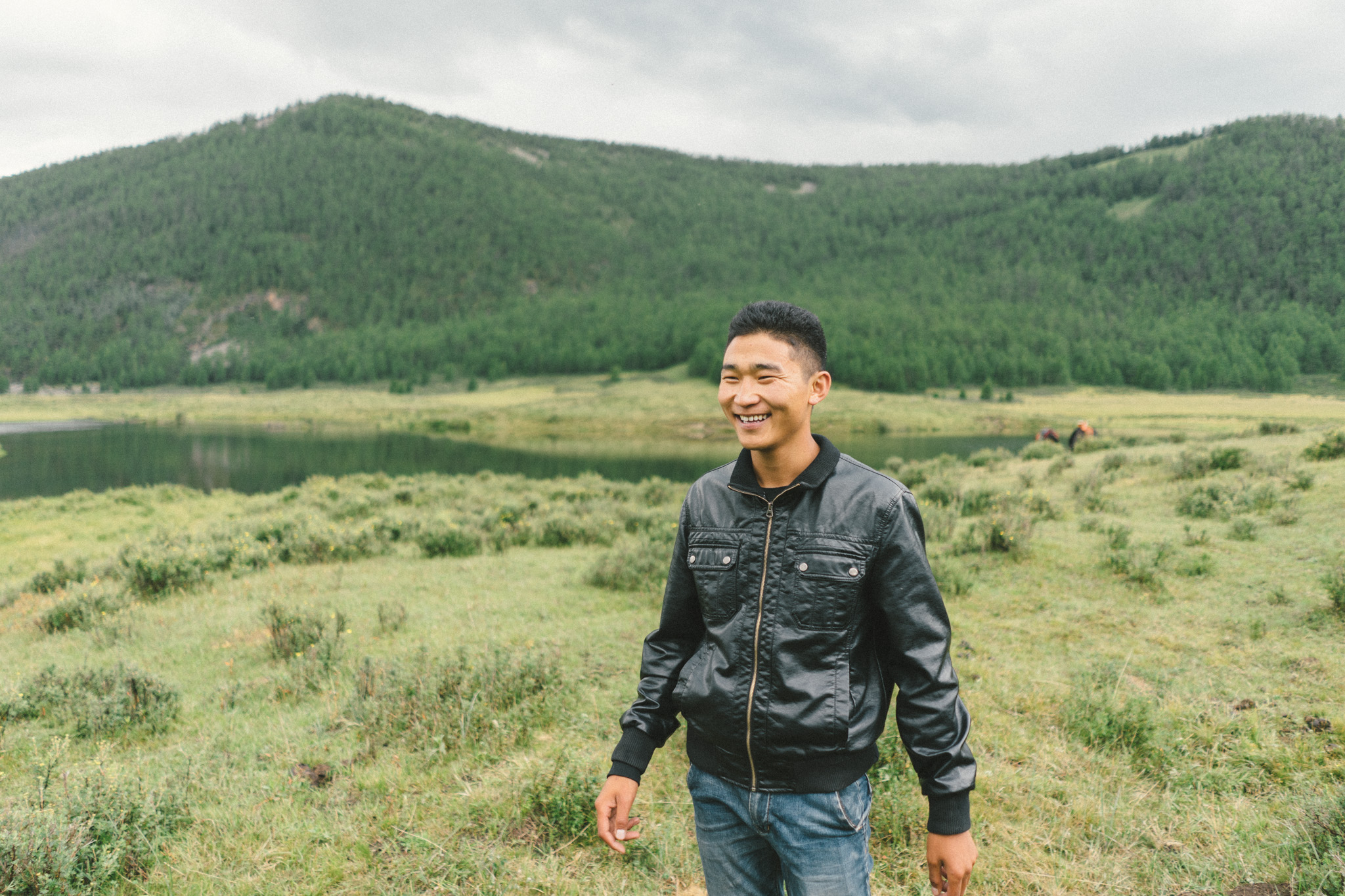
Tours in Mongolia
38 – So, how do you organize a trip in Mongolia?: Before my trip to Mongolia, my biggest challenge was figuring out how I was going to get around the country! Public transportation connects the main regional hubs to Ulaanbaatar, but other than that there isn’t any way of getting around.
All of the incredible sights are hours away from town and require a 4×4 vehicle to reach.
This means that the typical “backpacker” travel style of staying in hostels and taking public transportation doesn’t work here.
39 – Group tours in Mongolia are a great option: Almost every hotel, hostel, and guesthouse in Ulaanbaatar will offer group tours.
An organized group tour in Mongolia will typically include the following things:
- Vehicle and driver
- English-speaking guide
- Accommodation in gers or tents
- Food (not including snacks or alcohol)
- Entrance fees and activities
As you can see, a group tour will include pretty much everything you need!
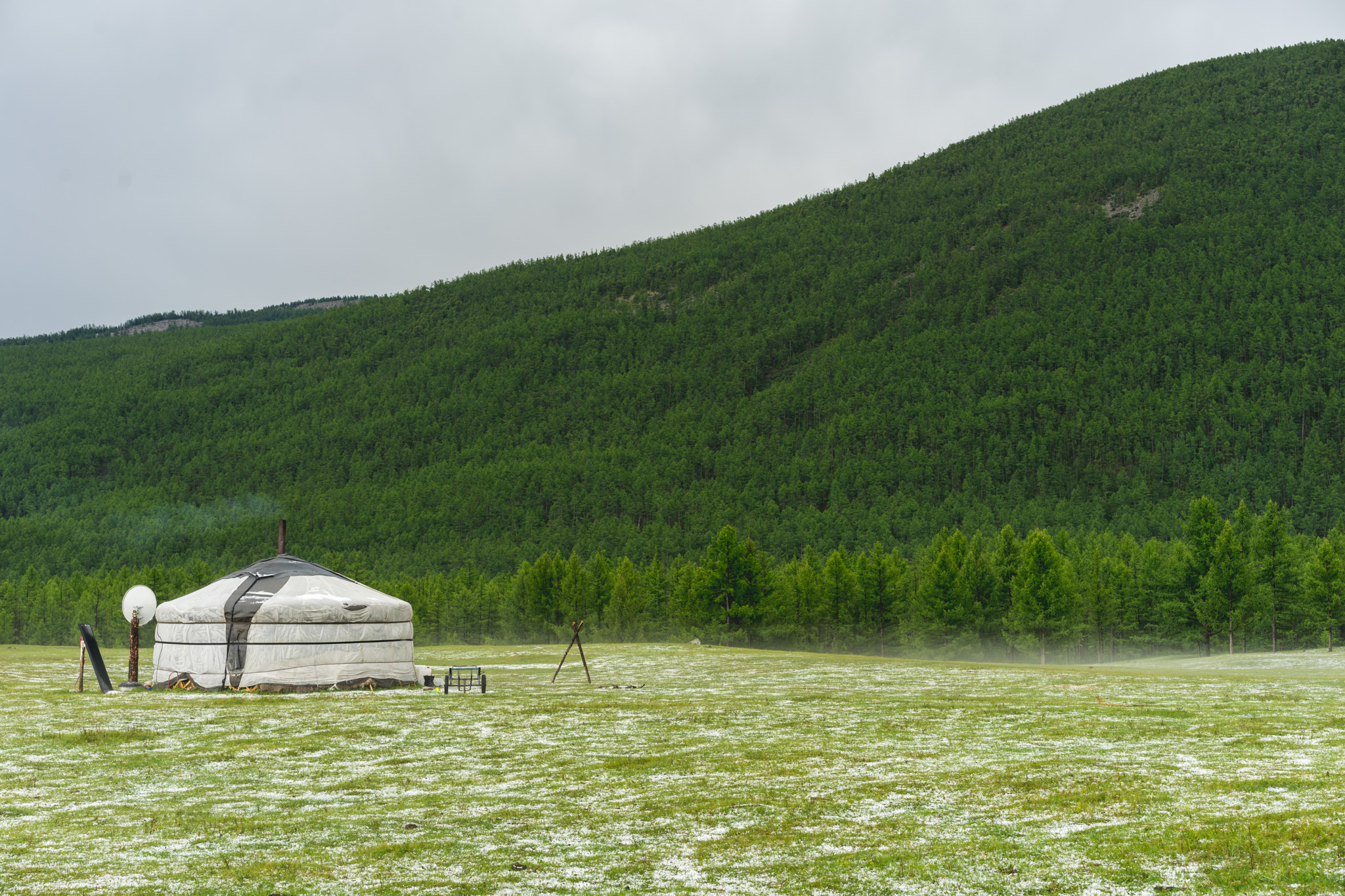
40 – How much do group tours typically cost?: The tour cost depends on the number of people who sign up. Expect to pay between $50-70 USD per day for a group tour that has a few other backpackers on it.
It’s hard to give an exact number, so make sure to budget for the high end to be safe.
When you are in Ulaanbaatar, I’d recommend staying at the Golden Gobi hostel . They’re very well organized and have multiple tours leaving every day in the summer.
Another hostel that I heard good things about is Sunpath Mongolia . If you can’t find the tour you’re looking for, or Golden Gobi is all sold out, consider staying there.
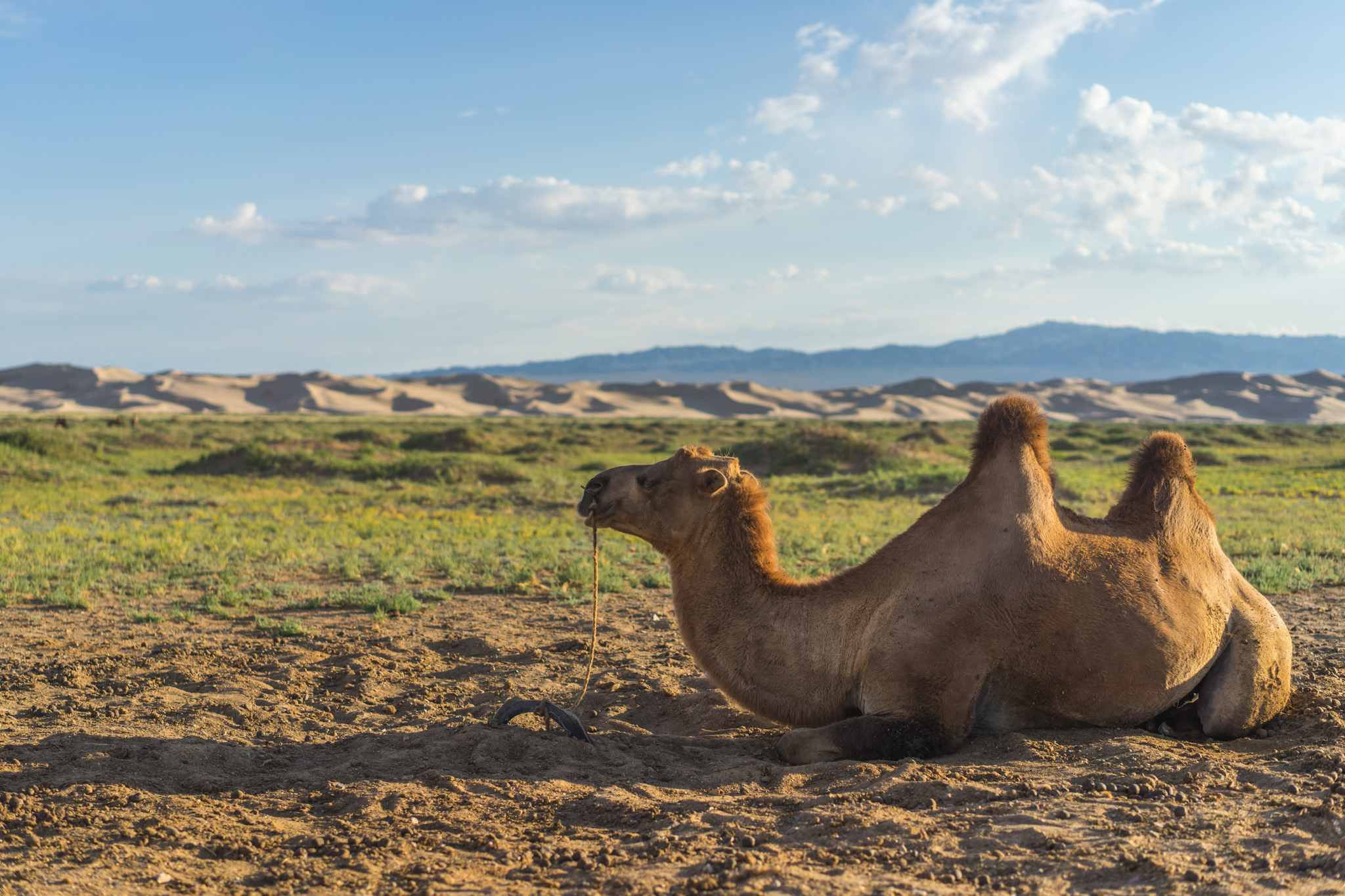
41 – Don’t arrange your group tour from outside of Mongolia: It will cost a lot more. It’s much easier to arrange things on the ground in Ulaanbaatar with any other travellers that you may meet.
Both of the above hostels have many tours leaving each day, so it’s easy to show up and join a group that’s leaving the next day.
Independent travel in Mongolia
42 – Independent travel is also possible, but much more challenging: If you want to independently backpack around Mongolia, you’re gonna need your own vehicle or a lot of cash.
If you have your own vehicle (4×4, bicycle, motorbike, horse), then getting around won’t be too difficult.
Most tourist sights have ger camps that you can pay to stay in, but you’ll need to bring a tent and cooking supplies for the places that don’t have ger camps.
If you don’t have your own form of transportation, you’ll need to hire a private vehicle and driver. Hiring a private vehicle will cost a couple of hundred dollars per day.
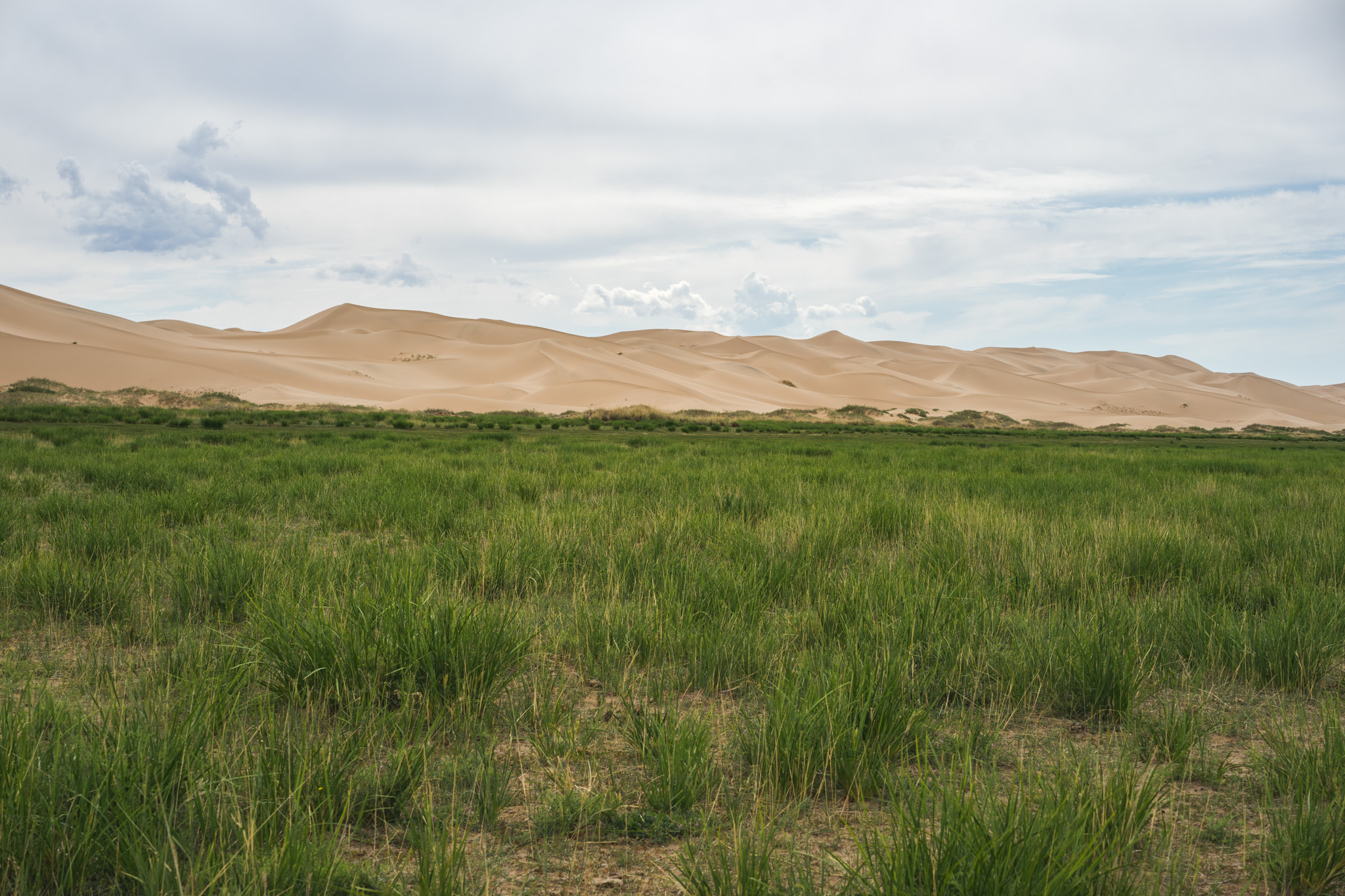
Food in Mongolia
43 – Outside of Ulaanbaatar, food in Mongolia is pretty basic: As many people still live nomadic lives in rural Mongolia, they aren’t able to grow things like fruits and vegetables. Because of this, their diets still consist of mostly meat and dairy products.
Ulaanbaatar has pretty decent options for food, however. There are some good Indian, Chinese, and Korean restaurants if you want some flavour after spending time in rural Mongolia.
44 – You need to try airag when you’re in Mongolia: Araig (called kumis in Central Asia) is a dairy product made from fermented horse milk. It’s sour is very unique, and it’s even got a light alcohol percentage due to the fermentation.
In rural parts of Mongolia, you’ll see people drinking this all the time! It’s served in a bowl, and if you finish your bowl you’ll instantly get a refill.
45 – It can be a bit challenging to travel here as a vegetarian: In Ulaanbaatar, you’ll find a few options for vegetarian-friendly food, but in rural areas don’t expect locals to know what you’re talking about.
If you travel on a tour, you should tell your guide in advance so they can make the appropriate accommodations.

Accommodation in Mongolia
46 – In Ulaanbaatar, all sorts of accommodation are available: Ulaanbaatar is full of hotels, hostels, and guesthouses. It’s up to you to choose which one you’d prefer, but hostels are usually the best bet if you also want to find people to group up with for a tour.
I’d recommend staying at the Golden Gobi hostel . I stayed here both times I was in Ulaanbaatar and arranged my tour through them and had no complaints.
47 – Rural areas have more basic accommodation: When travelling through the rural parts of Mongolia, accommodation will either be in basic homestays, ger stays, or camping. If you travel with an arranged tour, they’ll sort all of this out for you. Most places like these aren’t displayed online anywhere.
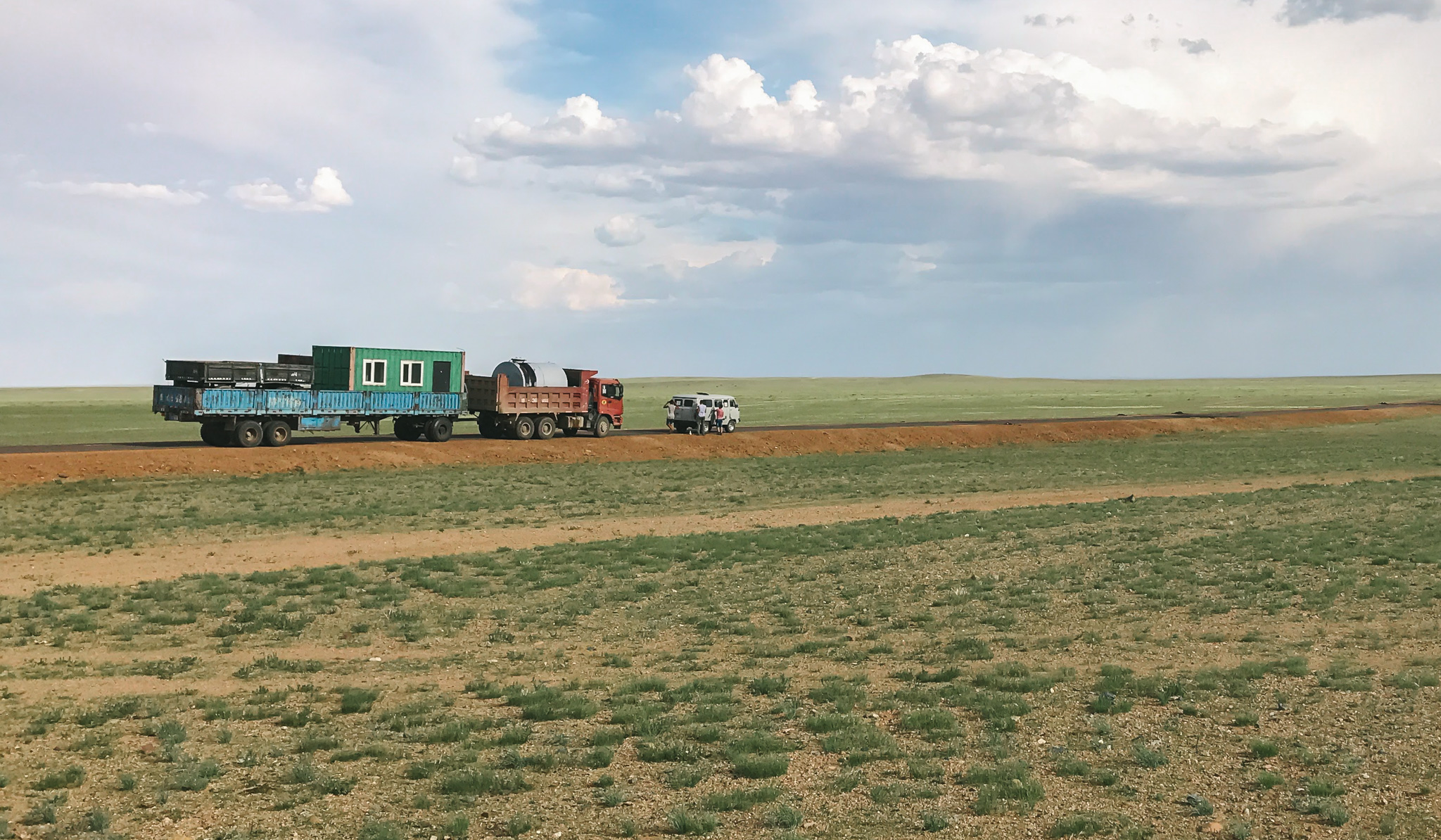
Transportation in Mongolia
48 – Getting around Mongolia takes a long time: Unless you’re travelling between a large town and Ulaanbaatar, there aren’t really paved roads in Mongolia. This makes getting around take forever.
49 – There is a decent bus network: There are buses running between Ulaanbaatar and all of the major towns, although these all take a long time. Getting from Ulaanbaatar to Khovd in Western Mongolia can take upwards of 40 hours.
50 – Hitchhiking is also possible: Although be prepared to be patient. Hitchhiking on main roads is doable, but if you want to go to touristy sights it will be rather difficult as there isn’t any local traffic.
51 – Flying long distances is a good idea: If you want to avoid taking a 40-hour bus ride from Ulaanbaatar to Khovd, there are some domestic airlines in Mongolia that fly routes such as that one. It isn’t the cheapest option, but it is your best bet if you’re short on time.

Mongolia Travel Itineraries
Mongolia 1-week itinerary.
With a week in Mongolia, you’ll want to stick around the Ulaanbaatar area.
Spend a couple of days in Ulaanbaatar visiting its main sights, and then head to the Gorkhi-Terelj National Park. I’d recommend spending a few nights here, you’ll get to stay in a ger, try fermented horse milk, and go horseback riding.
If you arrange a driver with your hostel in Ulaanbaatar, you could also take a trip to the ancient capital of Karakorum. It’s a good 5-6 hour drive from Ulaanbaatar, so plan accordingly. I’d only recommend this if you’re really info Mongolian history, as there isn’t much else to do in Karakorum.
Mongolia 2-week itinerary
Two weeks is the perfect amount of time to check out Ulaanbaatar, Central Mongolia, and the Gobi Desert.
A typical tour of Central Mongolia and the Gobi departing from Ulaanbaatar will take about 12 days, and you’ll get to spend time in all the major sights.
For info on arranging a tour like this, see the Group tours in Mongolia section above.
The Gobi and Central Mongolia offer a perfect intro to the country and are what I’d recommend for a first-time visitor.
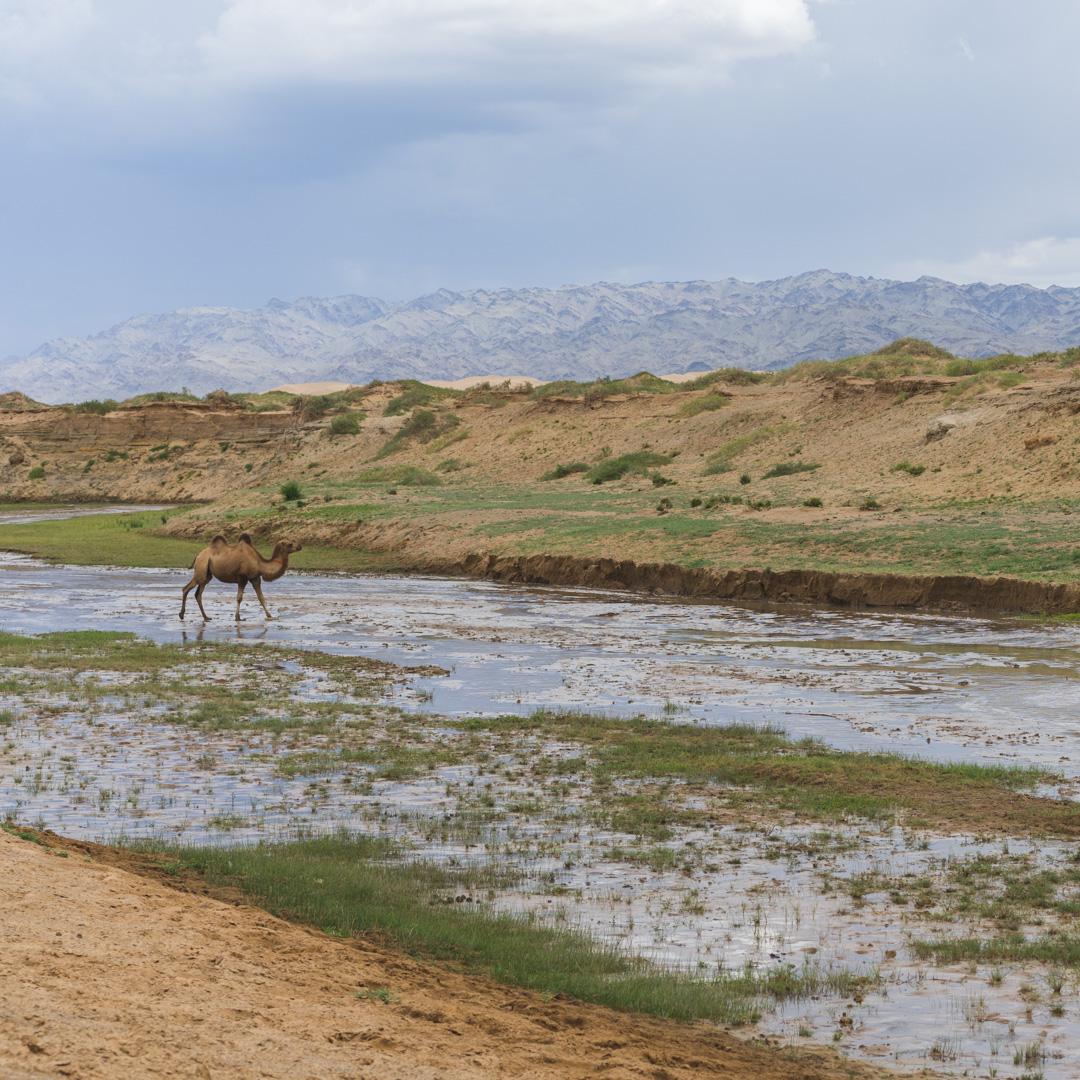
Mongolia 3-week itinerary
With three weeks, you’re able to add on another region to the above itinerary. Northern Mongolia would make the most sense, as you’re able to drive there pretty easily after visiting Central Mongolia.
A week in Northern Mongolia probably won’t be enough time to go and visit the Tsaatan people, so plan for a longer amount of time in the north if this is something you wish to do.
Mongolia 1-month itinerary
A month in Mongolia – I’m jealous! With this amount of time, you could make it all the way out to the western part of the country. You’ll be able to go hiking in the Altai mountains and meet the Kazakh people that inhabit that area.
Western Mongolia will take up about two weeks (the exact amount of time depends on if you fly or bus there). For your other two weeks in the country, consider checking out the Gobi and Central Mongolia. You’ll also probably want to plan some rest time in Ulaanbaatar.
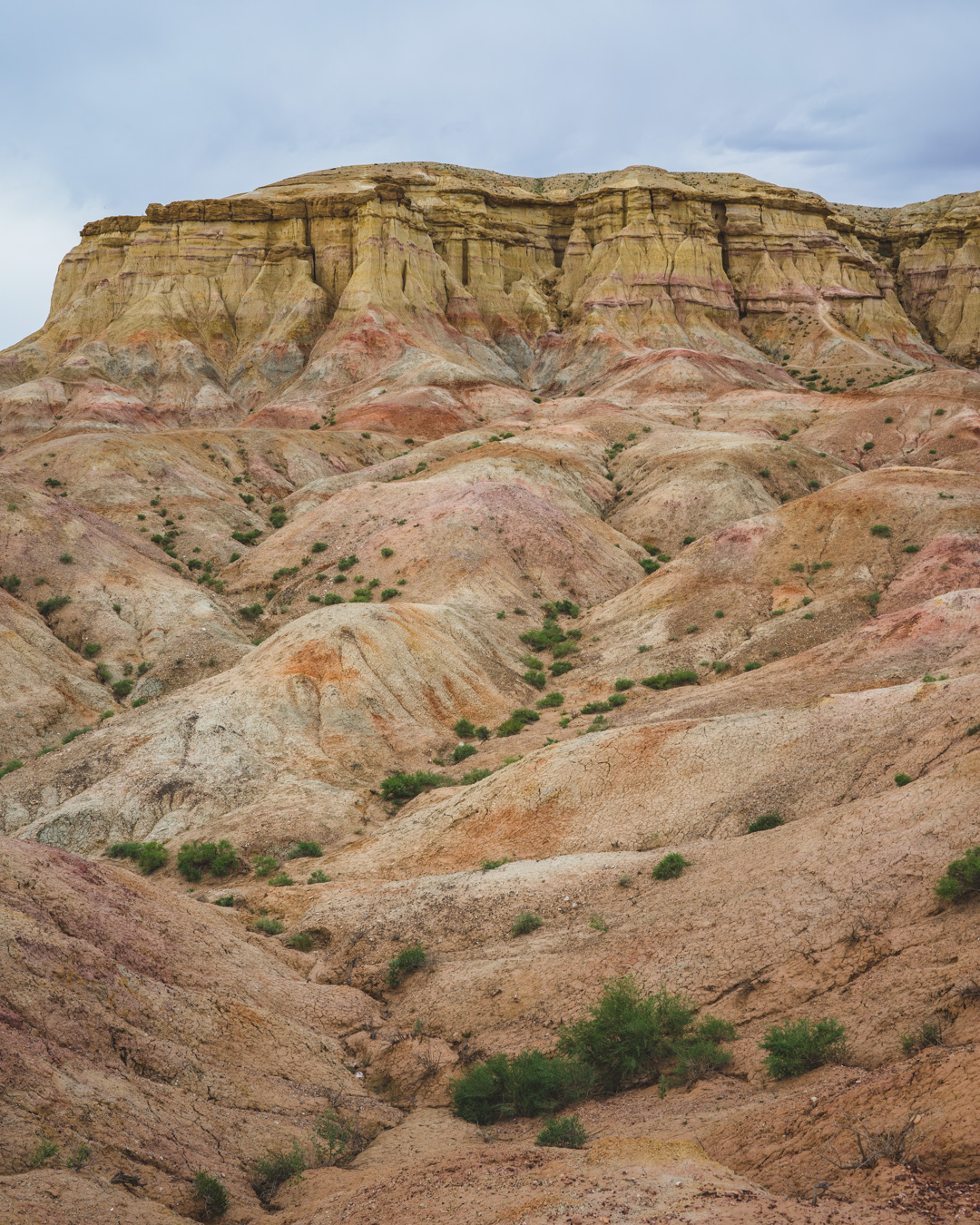
When to visit Mongolia
52 – Mongolia can be visited year-round: But.. you’ll have a vastly different experience in the summer than you would have in the winter. For most people, the best time to visit Mongolia is in summer, but let me go over the pros and cons of the different seasons.
53 – What is Mongolia like in the winter?: Unless you like -30°C weather, it’s probably best to avoid visiting Mongolia in the winter (November to March). If you do visit Mongolia in the winter, dress warm and you’ll experience a Mongolia that few other backpackers do!
Be warned – in the winter, Ulaanbaatar becomes one of the most polluted cities on Earth due to wood-burning heating.
54 – What is Mongolia like in the spring?: In the spring (April to May), weather can still be unpredictable and roads can be quite muddy as the snow is still melting.
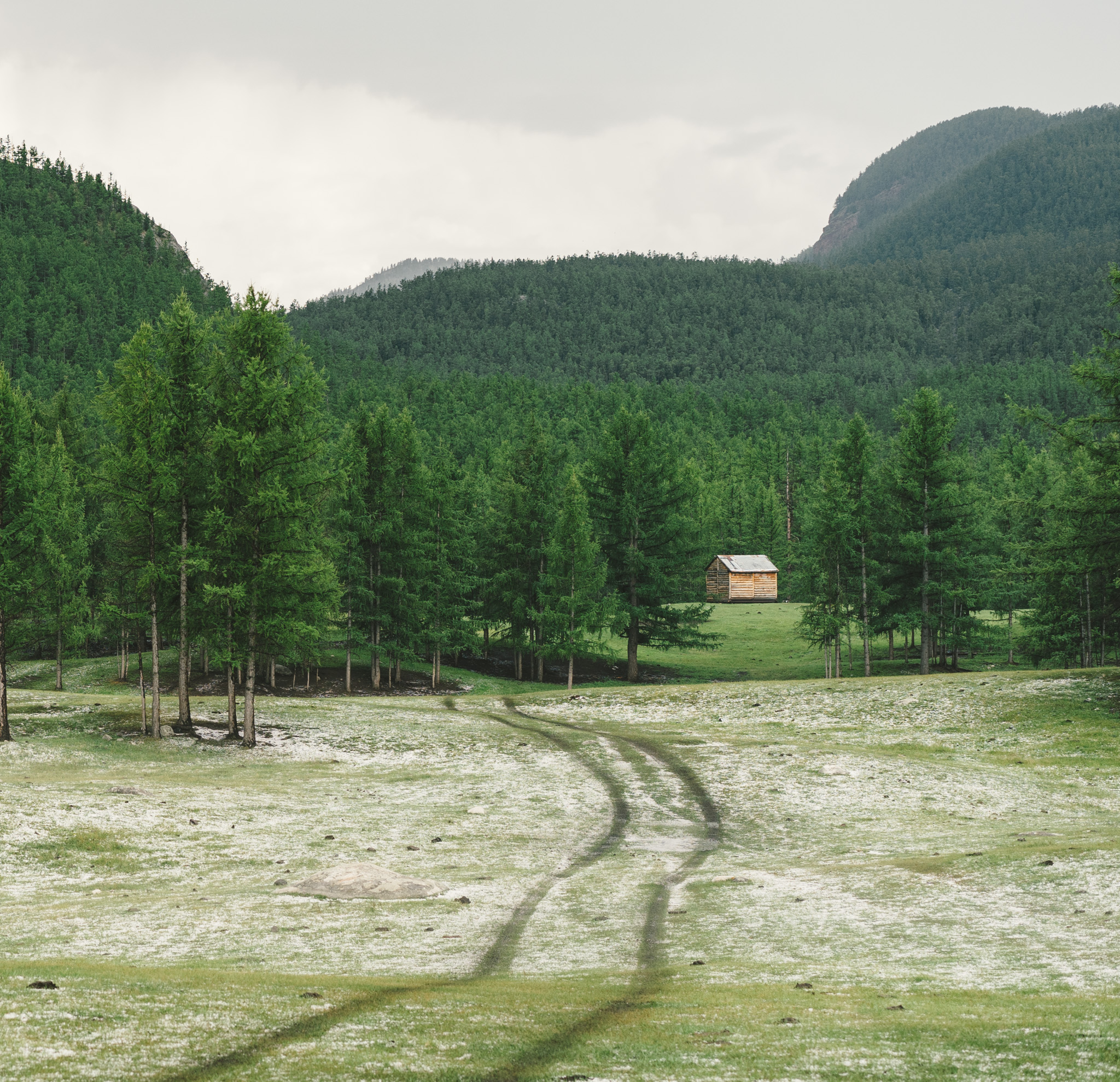
55 – What is Mongolia like in the summer?: Mongolia’s summer lasts from June to August and is definitely the best time of year to visit Mongolia. In the summer, the steppes will be green and the skies will be blue (for the most part). Still, be prepared for any type of weather.
I backpacked around Mongolia in August, and when I was in the Gobi Desert climbing the Khongoryn Els sand dunes, it started pouring rain. Later on, I was in the Orkhon Valley and we were hit with a hail storm that covered our ger in ice. Be sure to bring gear for any sort of situation.
In late July/early August, the Naadam festival takes place all over the country. It’s an incredible experience that shouldn’t be missed!
56 – What is Mongolia like in the fall?: In the fall temperatures begin to drop, but gorgeous fall colours help make up for it. After summer, fall is probably the best time to visit Mongolia.
If you’re in Mongolia in early October, try to make it out for the Golden Eagle Festival in Ölgii.
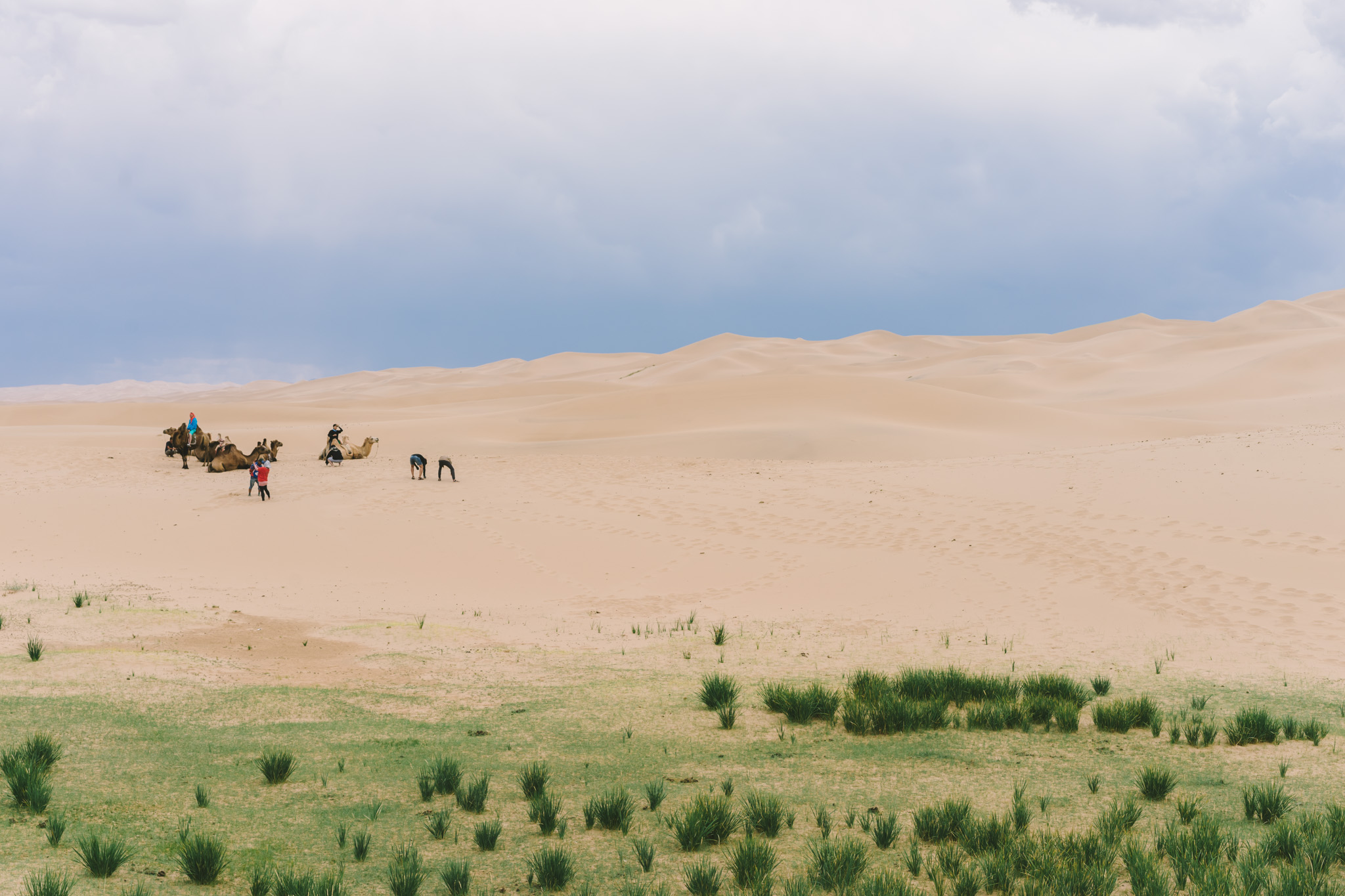
Travel Costs in Mongolia
57 – How much does it cost to backpack in Mongolia?: Well, Mongolia lies somewhere in the middle of the budget range. It’s more expensive to travel in than places like Vietnam or India, but cheaper than Japan or Korea. Due to its massive size and low population, a tour is pretty much required to see anything outside of Ulaanbaatar.
To be safe, budget between $50 and $70 per day in Mongolia if you plan on taking a group tour.
If you’re just visiting Ulaanbaatar, costs will be much lower. A hostel dorm bed (Again, I recommend the Golden Gobi ) will be less than $10 USD, and you can eat at local restaurants for only a few dollars.
Check out the State Department Store if you need to do any shopping – they have everything from camping gear to televisions.
Internet & SIM Cards in Mongolia
58 – In the countryside, internet access is non-existent: As most of Mongolia is extremely sparsely populated, expect to be offline most of the time while you’re travelling in Mongolia.
59 – What about in Ulaanbaatar and larger towns?: WiFi isn’t great, but I recommend picking up a local SIM card from either MobiCom or Unitel . With one of these local SIM cards, you’ll have 4G coverage in Ulaanbataar and quite a few towns around the country. You can purchase a SIM at any of the MobiCom or Unitel shops – just be sure to bring your passport.
Basic data packages are quite cheap – you can get about 10GB of data for around $5.
For detailed info about the different plans offered by the telecoms, check out the Mongolia Prepaid SIM Card Wiki.
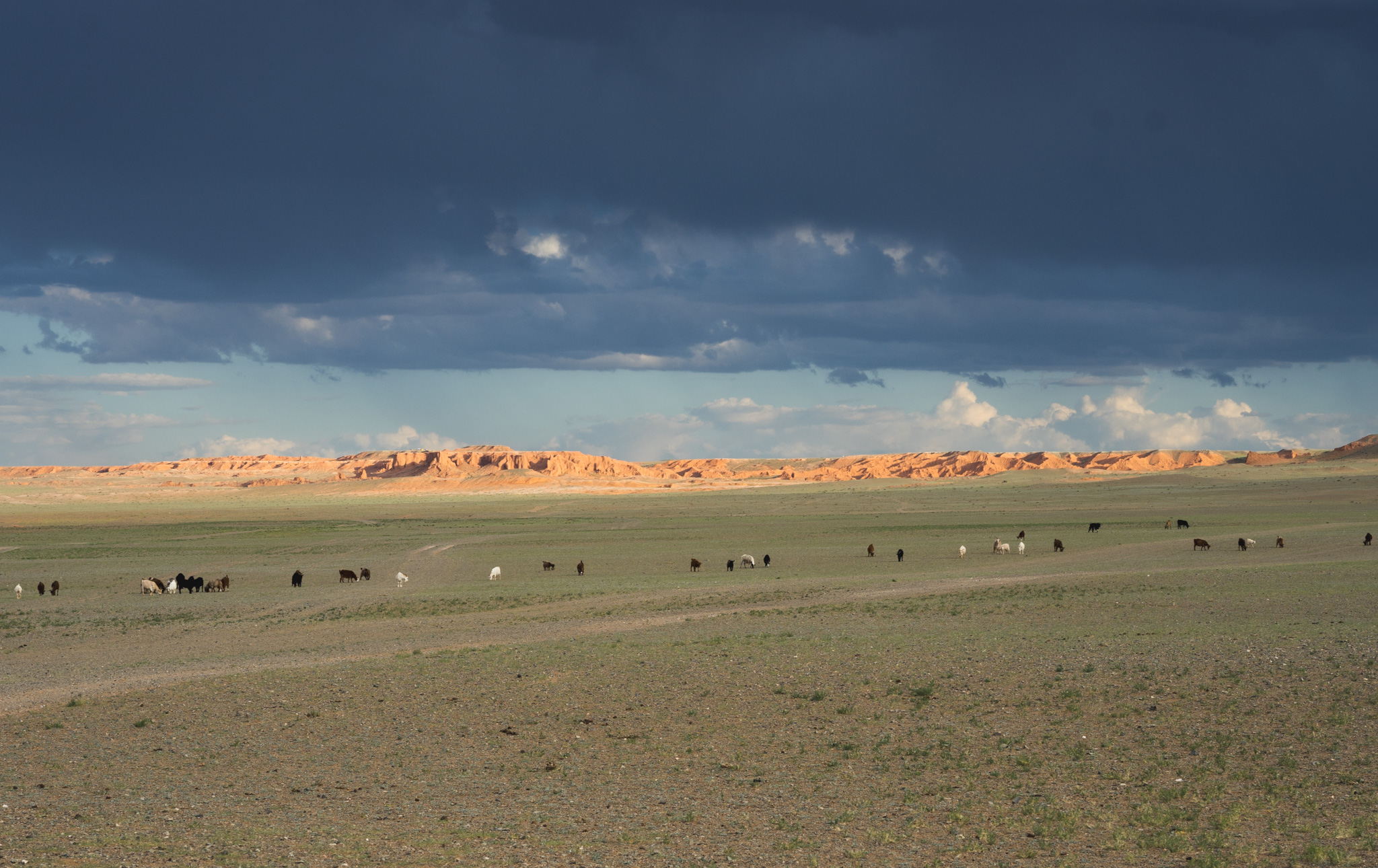
Solo Travel in Mongolia
60 – It’s easy to meet other backpackers in Ulaanbaatar: Before my trip to Mongolia, I was a bit worried about going solo. I was worried that I wouldn’t be able to find any other travellers who wanted to visit the same places as me, and therefore worried that I would be stuck paying a lot more money for my tour.
Fortunately, it’s super easy to find people to split your tour costs with in Ulaanbaatar. As long as you don’t plan on going wayyy off of the beaten path, you’ll be able to find someone. Most hostels in Ulaanbaatar communicate with each other, so they’ll ask the other hostels if they have anyone with your same plans and put you in contact.
Don’t worry about heading to Mongolia solo – you’ll be able to meet other travellers and make some new friends!
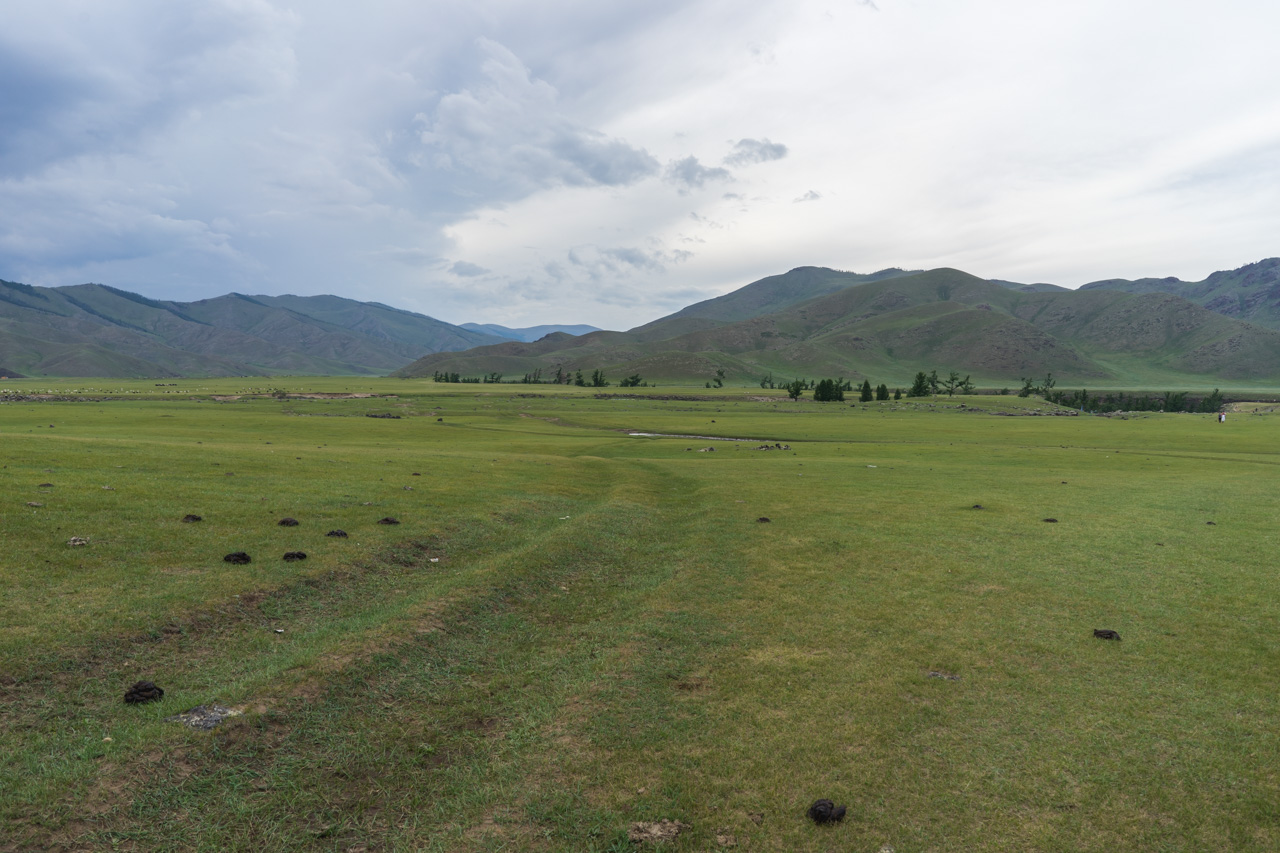
Female Travel in Mongolia
61 – Mongolia is a great destination for female travellers: Mongolia is a safe destination for female travellers, and you’ll definitely find plenty of others there.
You’ll need to be careful to dress somewhat conservatively and follow the female safety practices that you would anywhere else. Avoid heading out alone in the dark (in Ulaanbaatar), and you will be fine.
Here’s some great info on female travel in Asia – be sure to check it out if it’ll be your first time in Asia.
Travelling in Mongolia Wrap-Up
And that’s it for my guide to travelling in Mongolia! I hope this helped you plan your Mongolia adventure.
If you’ve got any questions about backpacking in Mongolia, feel free to ask me!
Remember to check out my guide to getting from Beijing to Ulaanbaatar , if you’re planning on taking that route.
I’ve also got a few other comprehensive backpacking guides – feel free to check them out if you’re planning a trip!
- China Backpacking Guide
- Pakistan Backpacking Guide
- Wakhan Corridor Travel Guide
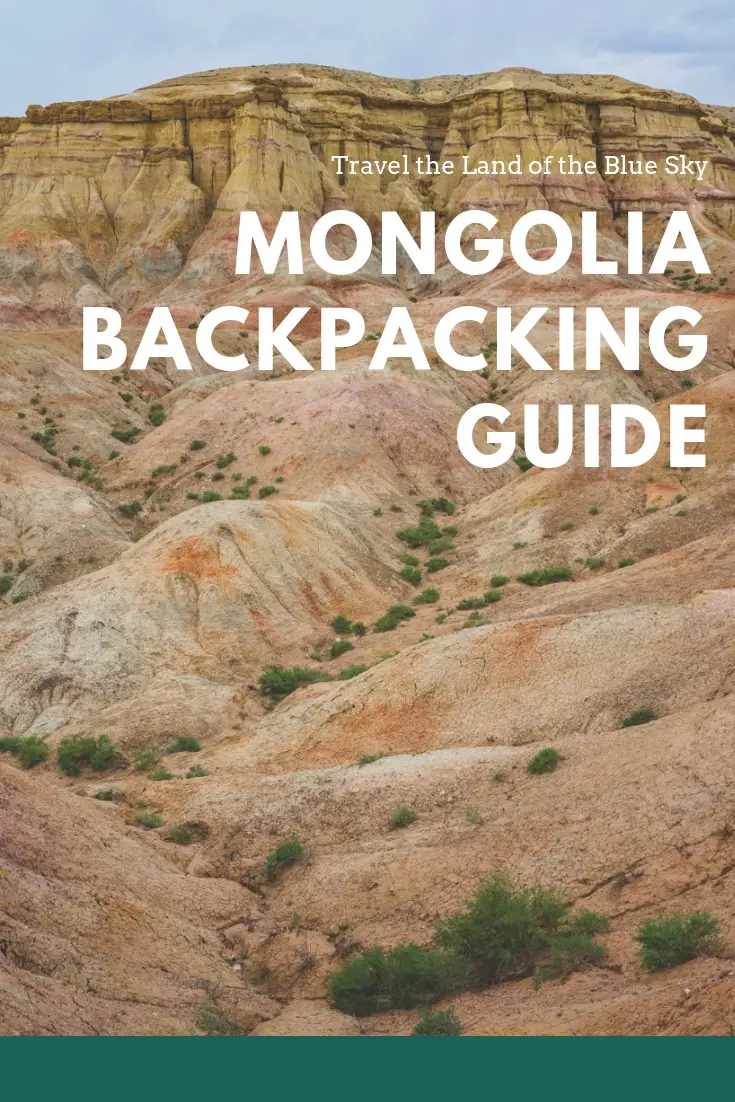
Yay transparency! There are affiliate links in this guide. If you book or buy something using my links, I’ll make a bit of money at no extra cost to you.
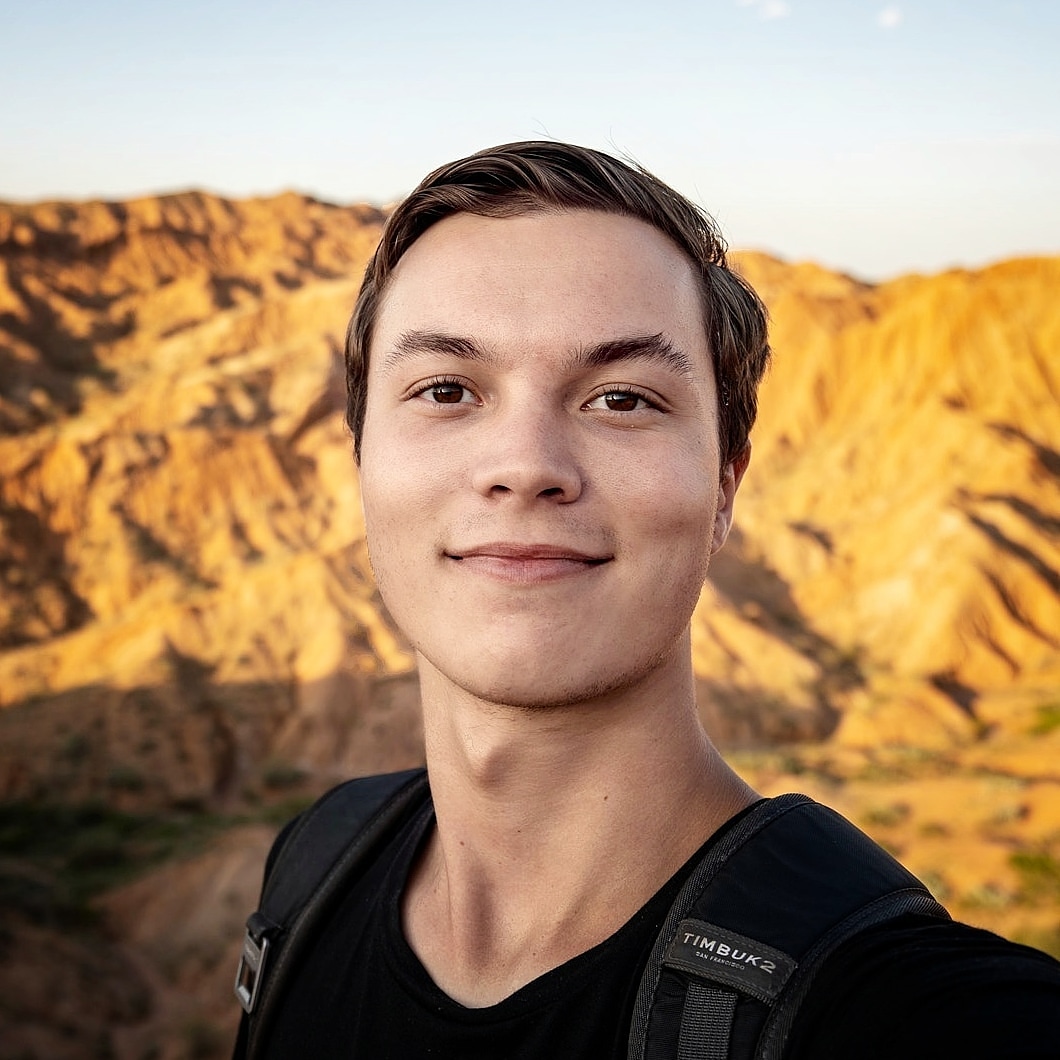
21-year old Canadian dude who loves to visit off-the-beaten-path places, climb tall mountains, and try delicious foods.
Read more about me
Want more like this?
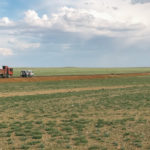
Leave a Reply Cancel reply
Your email address will not be published. Required fields are marked *
Small Group Journeys
Make 2024 the year that you experience Mongolia on the journey of a lifetime! Limited to just sixteen travelers, our small groups enjoy immersive journeys into Mongolian culture, nomadic life , and nature.
Book one of our 2024 Mongolia Tours today!
Interested in traveling next year instead? Book a 2025 small group journey by August 30, 2024, and save $500!

Nomadic Life and Naadam
Thinking about future travel, but not sure when to visit Mongolia? Next summer, experience the pageantry of Mongolia's legendary Naadam Festival .
Our Nomadic Life and Naadam small group journey, July 9–21, 2025, includes the Naadam Festival , nomadic culture, the Gobi Desert , and more!

Sustainability
What makes Blue Silk Travel different? Our commitment to cultural, environmental and economic sustainability brings you exclusive access to the best of Mongolia in a way that benefits the people you meet and the places you explore.

Dining in Mongolia
From elegant private meals prepared by Blue Silk Travel chefs in the vast Mongolian countryside to dinners at restaurants on the cutting-edge of Ulaanbaatar 's dining scene, meals are a highlights of Blue Silk Travel journeys. Enjoy the best of Mongolian cuisine, from traditional to contemporary, with special attention given to organic, nomadically raised meat and dairy, and locally grown produce.

- Destinations
Outer Mongolia

RM 9,999.00
Outer Mongolia[a] is the name of an historical territory of the Qing dynasty of China from 1691 to 1911. It corresponds to the modern-day independent state of Mongolia (sometimes called “Outer Mongolia” in China today) and the Russian republic of Tuva. The region gained de facto independence from Qing China during the Xinhai Revolution.
Description
- Accommodation & Meals
Flight Schedule
- Terms & Conditions
- Reviews (0)
An Open Country
Mongolia existed in a Soviet bubble for most of the 20th century. Now a generation beyond the fall of communism, Mongolia has emerged as a young democracy with a promising economy based on mining, agriculture and tourism. Some revenue is being funneled back into improving tourist facilities, including a new international airport near Ulaanbaatar. Visas are relatively easy to acquire; a handful of nationalities won’t even require one. Mongolia welcomes all travelers, particularly those with an independent streak that delight in making their own way.
Mongolian Wilderness
Mongolians are fully aware of the unique beauty of their country. Ask locals and they will probably start gushing about the spectacular countryside, vast steppes, rugged mountains, clear lakes and abundant wildlife and livestock. Some areas are so remote you could drive a full day and see almost no signs of human habitation. It’s this true wilderness experience that many people find so appealing, and city residents from Ulaanbaatar frequently hit the road to camp. Protected areas cover almost a fifth of the country and the government is looking to increase that figure.
Nomad Hospitality
Mongolia’s nomadic culture is famous – visitors can sleep in a herder’s ger (traditional felt yurt), help round up the sheep, ride horses and simply “get back to nature.” The legacy of Chinggis Khaan and resurgent nationalist pride sharpens the experience. A culture of tremendous hospitality welcomes respectful travelers here. When traveling in Mongolia, however, keep in mind that guests are expected to reciprocate any forms of generosity, so when visiting families, always have a ready supply of gifts for the kids.
Not Just Grass & Horses
Once half nomadic, Mongolia is changing rapidly as its citizens flock to Ulaanbaatar and other big cities for work and study opportunities. Whether they are rural or urban, Mongolians take pride in their country’s democratic institutions of civic participation. Mongolia is eager to be part of the global community, sending its troops on peacekeeping missions around the globe and promoting itself as a country to host northeast Asian peace talks; visiting now puts you in the middle of these dramatic transformations.
8day/7nights
Day 1 | Malaysia – Ulaanbaatar
Upon arrival our professional team will warmly welcome and transfer to the hotel. Check-in to the hotel and have bu et dinner in hotel restaurant. Overnight at hotel in Ulaanbaatar.
Day 2 | Mongol Nomadic – Karakorum (370km)
Mini-Naadam : Naadam Festival consists of the Three Manly Games, namely, wrestling, archery, horse racing which Mongolian nomads have practiced for thousands of years.
Mongolian archery & traditional clothes : try them for a memorable.
Day 3 | Karakorum – Elsentasarkhai (150km)
Erdenezuu : one of the oldest Buddhist Monastery in Mongolia.
The Rock Turtle : locals worship and pay their respects to Mungut Khad, putting their faith in the rock formation to bring good fortune.
Karakorum museum : The museum contains artifacts from the Hunnu period, Liao dynasty, the Uyghur Khaganate, the Mongol Empire and Rouran Khaganate.
Khaadiin Khad Hill : where you can have panoramic view of the Orkhon River Valley.
Elsen Tasarkhai : also name as mini Gobi, sand dunes which stretch from the Tuv, Uvurkhangai, and Bulgan provinces all the way west to become part of the Khugnu Khan mountain range.
Inclusive Camel riding over the dunesat : Experience Camel Riding.
Day 4 | Karakorum – Ulaanbaatar City Tour (370km)
National museum of Mongolia : The historical collection is subdivided into 3 areas: archaeological; medieval history of Mongolia; and modern historical objects and photography, recordings, and documents.
Gandan monastery : The Tibetan name translates to the “Great Place of Complete Joy”. It currently has over 150 monks in residence.
Sukhbaatar square : major state ceremonies (parades in honor of Mongolian State Flag Day or the International Day of United Nations Peacekeepers), cultural events, concerts, and exhibitions. Visiting heads of state generally pay respects in front of the statue of Sükhbaatar.
Traditional folk concert : Experience several of Mongolia’s traditional art forms.
Day 5 | Ulaanbaatar – 13th Century Complex – Terelj National Park
Chinggis Khan Statue Complex : the largest equestrian statue of Genghis Khan. Visit the complex museum and enjoy a panoramic view over Mongolian steppe from the statue’s horse mane.
13th Century Complex : travel back in time of 13th century of Mongolian’s lifestyles and cultural impacts of the Great Mongol empire.
Lamb Barbeque “khorkhog” : It consists in mutton, lamb or goat cooked in large metal containers with vegetables and hot stones.
Day 6 | Terelj National Park – Ulaanbaatar City Tour
Ariyapal Meditation Temple : Temple is situated about a 30-minute walk on the hills with a phenomenal view of the valley.
(Optional) Horse Riding over the Grassland (at your own expense) : Experience horse Riding.
Zaisan Memorial Hill : honors allied Mongolian and Soviet soldiers killed in World War II.
Carpet Outlet Store : could buy some carpet that made in Mongolia
Galleria Ulaanbaatar Cashmere Outlet : The World’s largest cashmere store with exquisite selection of fabulous cashmere garments, coats, suits and accessories.
Souvenir Shop : A great shop for those interested in buying handmade Mongolian instruments.
Little Sheep Hot Pot : Tonight at the world’s largest hot pot restaurant “Little Sheep”, enjoy individual hot pot.
Day 7 | Leisure Day in Ulaanbaatar City
Today After breakfast, Visit Lhamour factory store. enjoy your full leisure day in Ulaanbaatar city.
Whatever your interests, Ulaanbaatar has lots in store for you. You may join optional tour with action-packed adventures, grand attractions and mouthwatering local fare, this lively national capital promises a memorable time. Or just free at your own leisure to explore Ulaanbaatar city at our own pace.
Day 8 | Flight Back to Malaysia
Check out from hotel. Transfer to the international airport for your departure point. Say `Bayartaiy’ (goodbye) to the Land of BlueSky and depart to your home country with full of adventure and great memories.
Accommodation & Meals

Terms & Conditions
Terms & Conditions:
Flights, transportation, hotels, meals and itineraries and sequences stated in the brochure are subject to change without prior notice and subject to final confirmation. We reserves the right to alter itineraries at any time (without compensation) due to unforeseen circumstances, especially during peak periods or force majeure.
Purchase of travel insurance is highly advisable. The Company or our consortium agents shall not be liable for any losses or personal expenses incurred by tour members during the tour. Or in the event of unforeseen circumstances such as adverse weather conditions/natural disaster or other causes which may lead to traffic delays/extend stays, cancellation, rescheduling or others losses.
Unless otherwise specified by request, tours are conducted in English.
Tour buses are arranged based on group size which make sure every passenger is entitled to one seat each.
Expenses of personal nature like tipping, laundry, telephone calls/internet data, beverages, photography fee at sightseeing, optional tour, medical expenses, any insurance or etc are on own expenses.
No refund shall be entertained for any unutilized portion of the tour.
Notwithstanding the place or country in which a course of action arises, it is expressly agreed hereto that all causes of actions shall at all times be commence within the jurisdiction and territory of the country.
Airport taxes, fuel surcharges and visa fees do not form part of the tour fare and it should be borne by the passenger. The Company is only acting as an agency to collect the above charges therefore it is subject to the Terms and Conditions of the respective authorities & airlines.
In case on any currency fluctuations or amendment in local Government & Hotel taxes, or any fuel hike, we reserve the right to adjust the tour price accordingly without any notice.
Flight timing and schedules are not guaranteed and do not form part of the contract. They are subject to change at the insistence of the Aviation of Government Authorities for the Tour Member’s safety, security and other reasons. Neither The Company nor the Carrier concerned will accept liability for reasons of flight cancellations, delays or diversions that is not within its control.
The Company reserves the right to cancel or withdraw at any time bookings made by or on behalf of Tour Members prior to departure. However, the company will reserve the absolute right to vary the group size due to unforeseen circumstances. The decision of The Company shall be final and inclusive and no liabilities whatsoever shall be incurred by the Company for such cancellation.
It is the Tour Member’ responsibility to ensure that they have a valid passport with at least 6 months validity from the date of departure.
All Tour Members are encouraged to process their own visa. Assistance is offered by the Company but approval cannot be guaranteed. The Company cannot be held liable for any loss of passport due to any reason whatsoever including without limitations, negligence on the part of our employees, agents and servants.
Deposit / Tour Payments A non-refundable of RM3000 per person must be paid upon reservation. Full payment shall be made 60 days before departure. If full payment is not received 60 days or more prior to departure date, the Company reserves the right to forfeit the deposit and cancel the reservation.
Cancellation of booking must be made in writing. Deposit of RM3000 per person will be forfeited if the company received notice more than 60 working days. If the company received notice to cancel less than 60 working days before the date of departure, a 100% cancellation of tour fare will be charged.
Amendment fee is applicable to all booking which are confirmed and deposit paid.All amendments will need to be made 60 days before departure date.
Amendment fee of (min RM300) will be charged and may vary depending on the changes. Any subsequent cost increases and surcharges will be borne by the tour member.
For other detailed standard Terms & Conditions, please refer to our website & read carefully : www.routesandjourneys.com
There are no reviews yet.
Your review *
Name *
Email *
Save my name, email, and website in this browser for the next time I comment.
Yes, add me to your mailing list
Related products

Colorful Singapore

5 Lake of Fuji San

DANANG NHA TRANG

Forbidden City China
Request a quote.

Mongolia Tours
Cultural adventures in the land of genghis khan.
Witness the wrestling, archery, and wild horseback games of Naadam, meet the traditional eagle hunters at the Golden Eagle Festival, spend the night in a cozy felt yurt, and visit the Flaming Cliffs in the great Gobi Desert, where the world’s first dinosaur egg was found.
All Trips to Mongolia
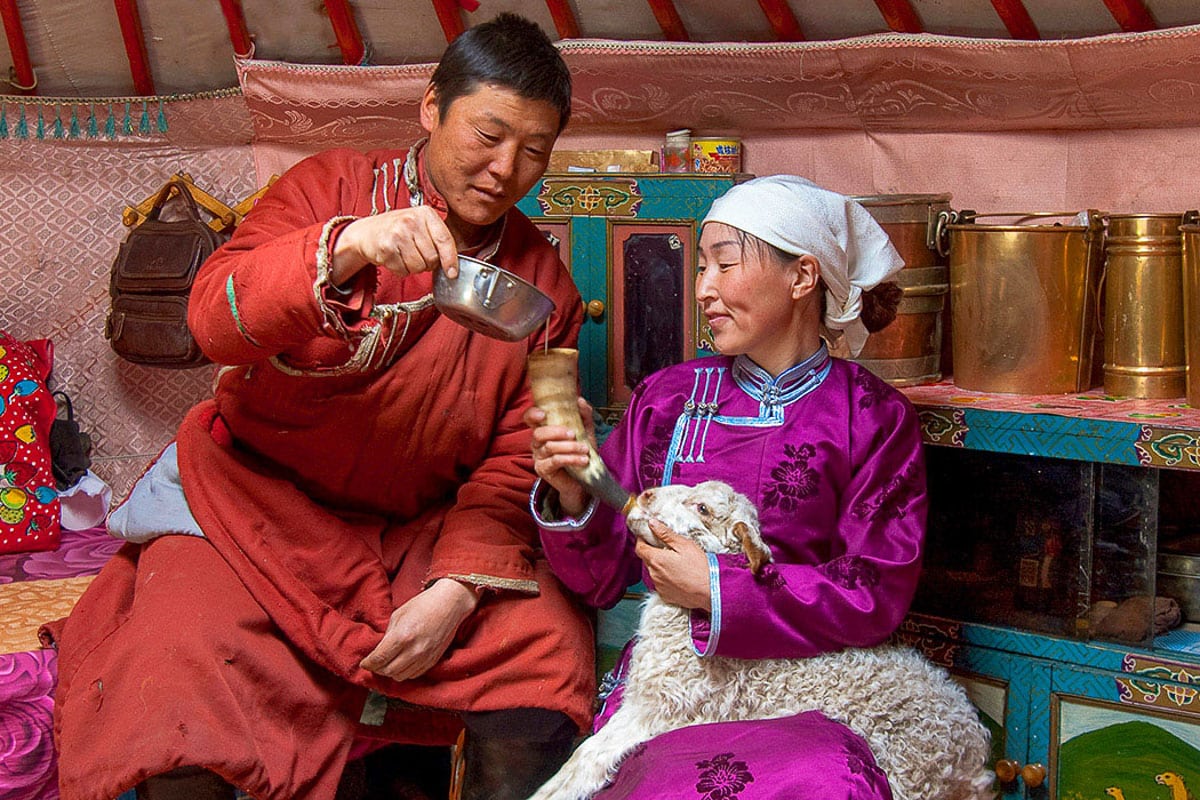
Small Group Adventure
In the Realm of Genghis Khan
From $5,695
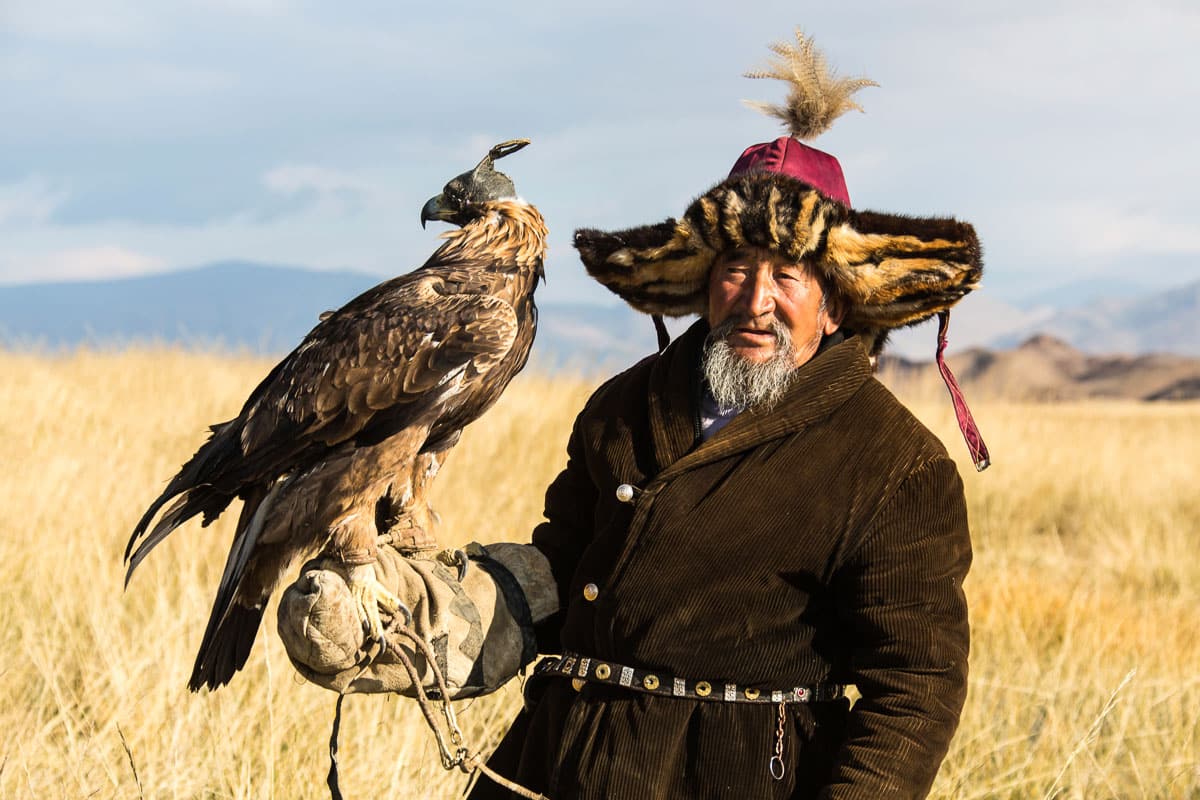
Mongolia’s Golden Eagle Festival
From $8,495
Experience Mongolia
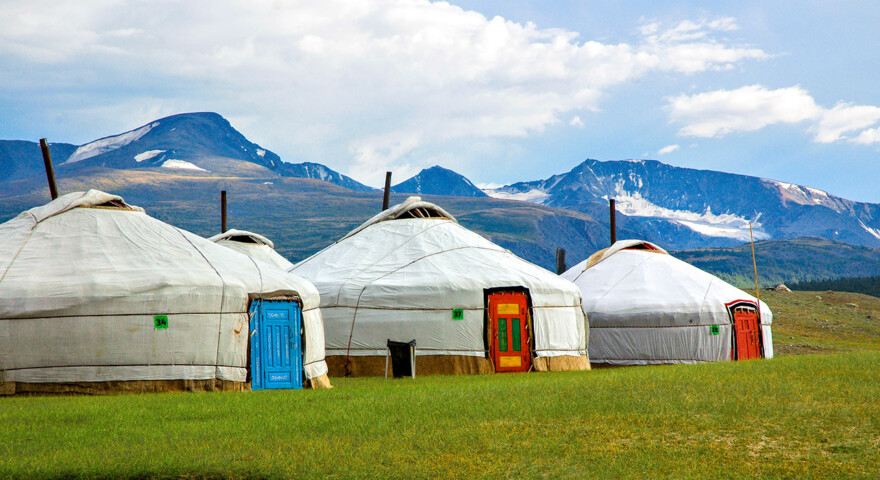
Extend Your Trip
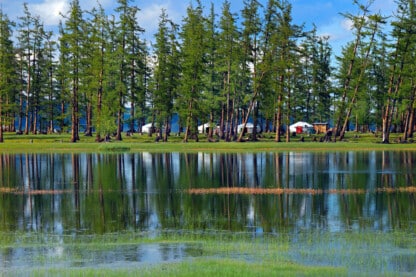
Lake Hovsgol Extension
From $2,395
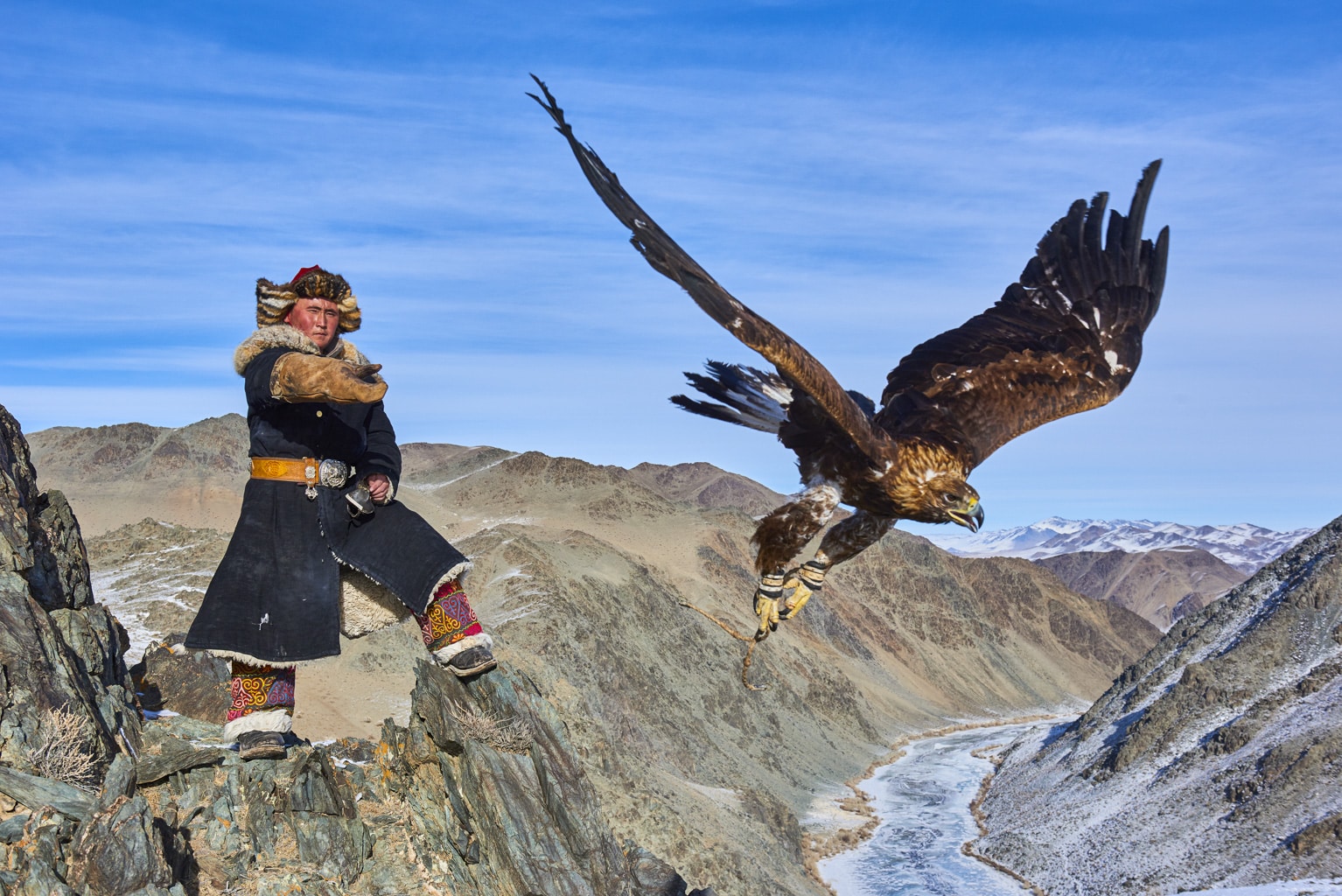
Western Mongolia Extension
From $2,995
Talk to an Expert
Our Asia Specialists know every detail about our Mongolia Tours. They will be happy to answer any questions and help you choose the journey that’s right for you. Contact us to learn more or book your trip today!
The best times to visit Mongolia
Aug 27, 2023 • 5 min read
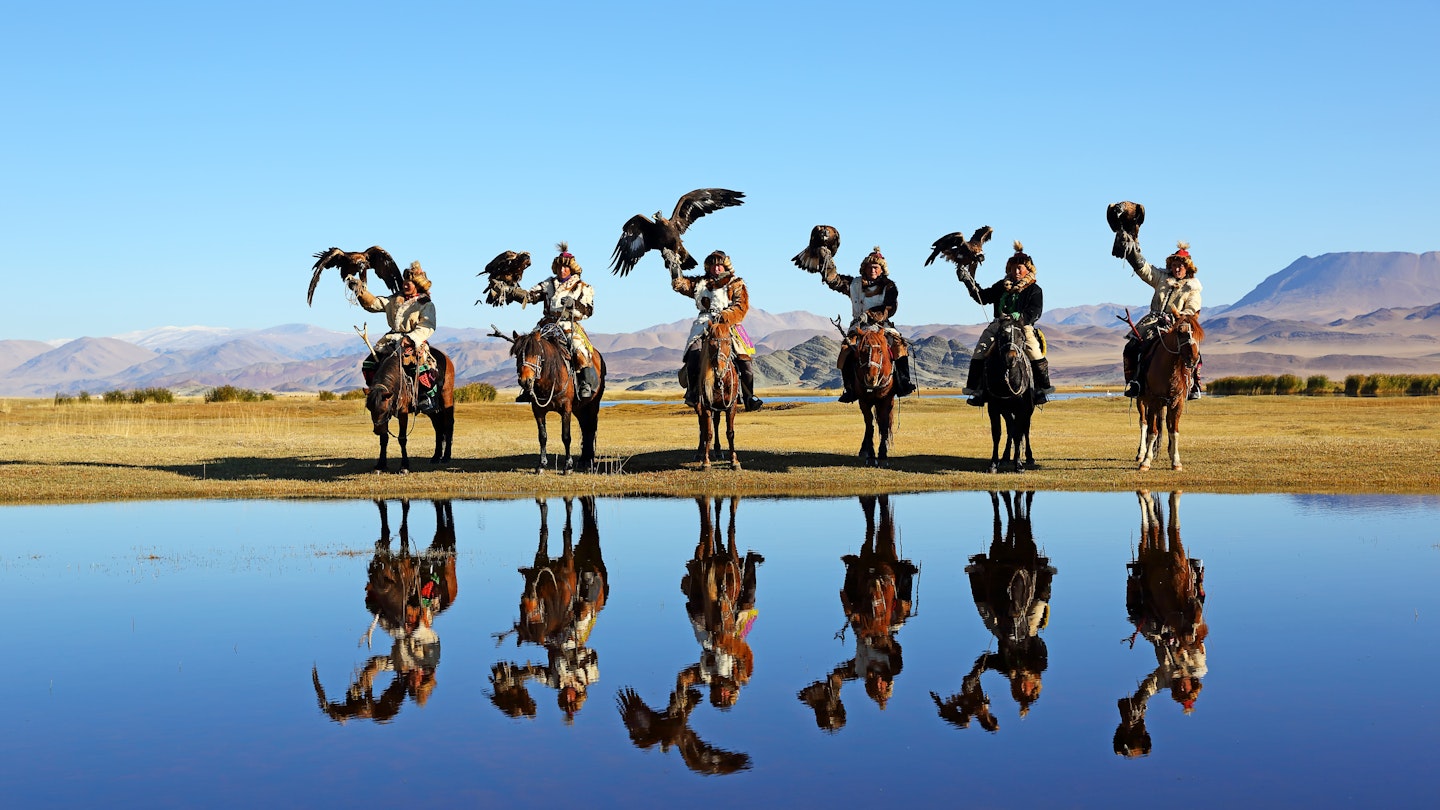
Whether you're visiting for eagle festivals or to explore the Gobi Desert, we can help you choose when to go to Mongolia © isarescheewin / Shutterstock
Famed for endless steppe vistas, fascinating nomadic culture, its thriving modern capital and stunningly diverse landscapes, Mongolia is a lot to take in. Before you decide on where to go, you’ll need to decide when to go – as the time of the year you visit will largely shape your trip.
When you weigh up those all-important variables of weather, big calendar events and peak season crowds versus low season savings, picking the optimum time to come is by no means an easy task – that’s why we’re here to help!
Ultimately, the best time to visit Mongolia is an answer that lies with you, the traveler, and what your interests are. Are you here to tick off bucket-list cultural events such as the world-renowned Naadam festival or the country’s fascinating golden eagle hunting festivals? Maybe you’re an outdoor enthusiast, here to trek on horseback or bike Mongolia’s wide-open lands in sublime weather? Or perhaps you’re more into snow sports and Mongolia’s unique winter festivals ?
Given the temperature extremes in Mongolia – peaking at 45°C (113°F) and plummeting to -40°C (-40°F) – the weather is obviously a big factor in deciding the best months for a visit. But truth be told, anytime is a good time to visit Mongolia, with each season bringing unique, memorable experiences. But if you’re looking for ideas, here are some of our favorite times to visit.

June to August brings glorious weather and the Naadam Festival
The summer is the peak season, and rightly so. This is when the weather really turns it on, making it adundantly clear why they call Mongolia “the Land of Blue Skies.” June, July and August are Mongolia’s warmest months, so this is the optimal time to hit the countryside. Under clear skies, you can experience nomadic hospitality as you traverse the grassy steppe by horse, foot, bike or 4WD before spending nights in ger (yurt) camps.
June is a particularly good time to visit, right before the main tourist season ramps up, meaning you’ll get to enjoy the landscapes with smaller crowds, and get a taster for Naadam with several smaller mini festivals. But the main event happens in mid-July, when travelers flock here en masse from around the world for the Unesco Intangible Cultural Heritage–listed Nadaam Festival – a colorful three-day spectacle of traditional Mongolian games.
These include distinctively local versions of horseracing, wrestling and archery – all traditions that date back centuries in Mongolia – set against a backdrop of much merrymaking. But this is also the time when things get really busy, so be sure to book accommodations and transport months in advance.
Also held in July is the Altai Nomad Festival in Altai Tavan Bogd National Park , featuring traditional Kazakh horse games such as kokbar , involving a tug of war with the carcass of a goat. August sees more wonderful weather, but things quieten down as the tail end of the high season approaches. At this time you can attend the low-key Danshig Naadam festival, which combines all the expected traditional sports with religious ceremonies and cultural events.
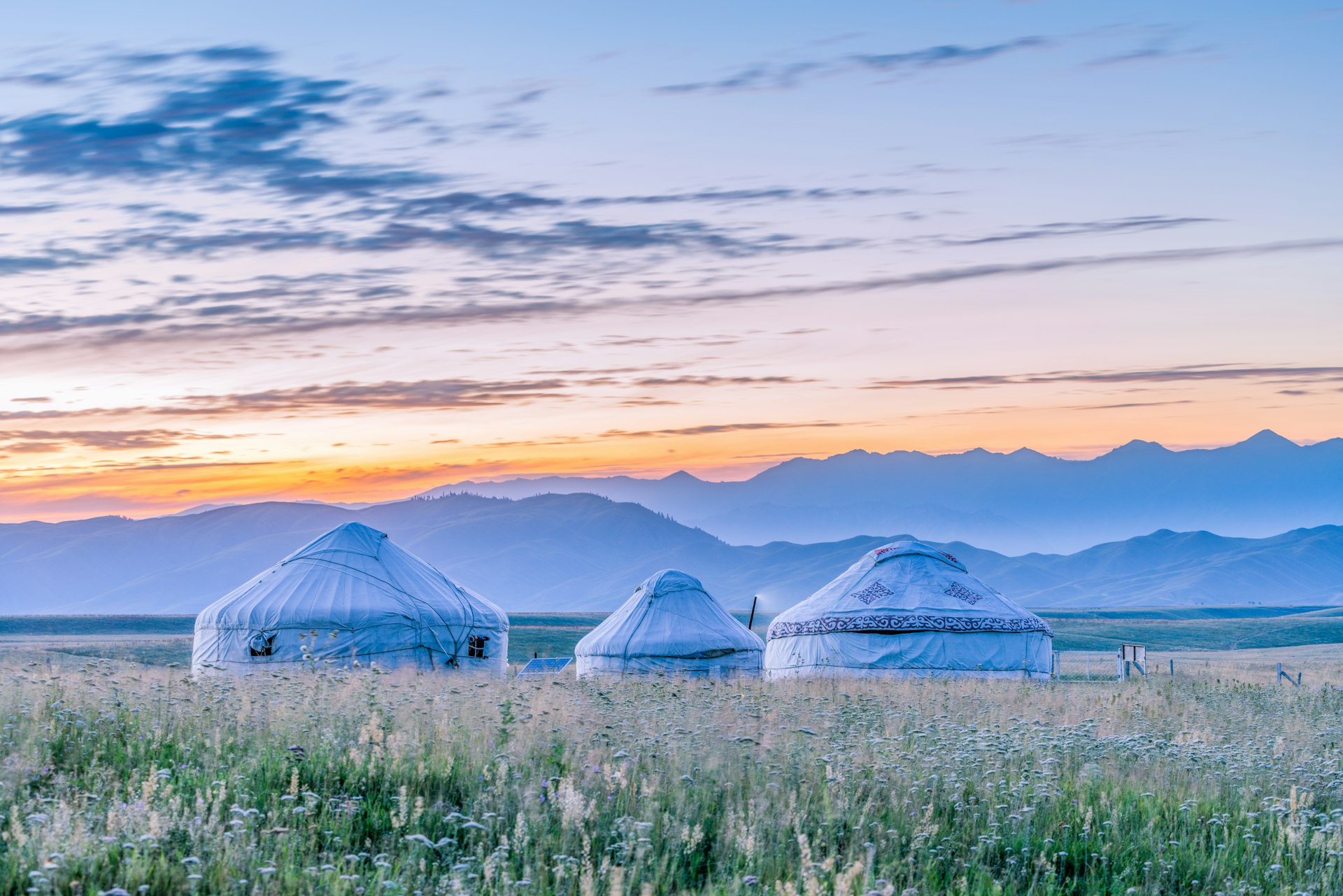
Come from April to May or September to October for eagle hunting, budget travel and fewer crowds
We’re big fans of traveling in the shoulder season, not just for the chance to experience Mongolia through a less touristy lens, but also for a more relaxed pace and lower prices. Sure, the weather can be a mixed bag (come prepared for four seasons in one hour) but in a land famed for 250 sunny days a year, you’ll still get plenty of clear weather.
Around April and May, Mongolia begins to thaw out from its winter deep freeze, as spring wildflowers bloom to color landscapes that turn progressively greener as time progresses. Many ger camps open up for the season, allowing you to enjoy Mongolia’s far-flung, empty wildernesses before tourists sweep in for Nadaam.
Late May is a good time to visit the Gobi Desert , when the storms and vicious airborne sand have subsided. You’ll also avoid the desert’s notorious freezing nighttime temperatures and scorching daytime heat. September sneaks in some warmer weather, but by October, winter is very much on the march.
But this is the time to visit if you’re here for one of Mongolia’s spectacular eagle festivals. Held in the first weekend of October, the Eagle Festival in Bayan-Ölgii is the big-ticket attraction, and you’ll be treated to dazzling displays of falconry by master Kazak eagle hunters, putting their prized birds of prey to the test in a number of competitions, from fashion parades to catching wild prey.
In late September there’s the more low-key Altai Kazakh Eagle Festival, an equally exciting event held over two days, combining eagle hunting demonstrations with horse and camel racing.
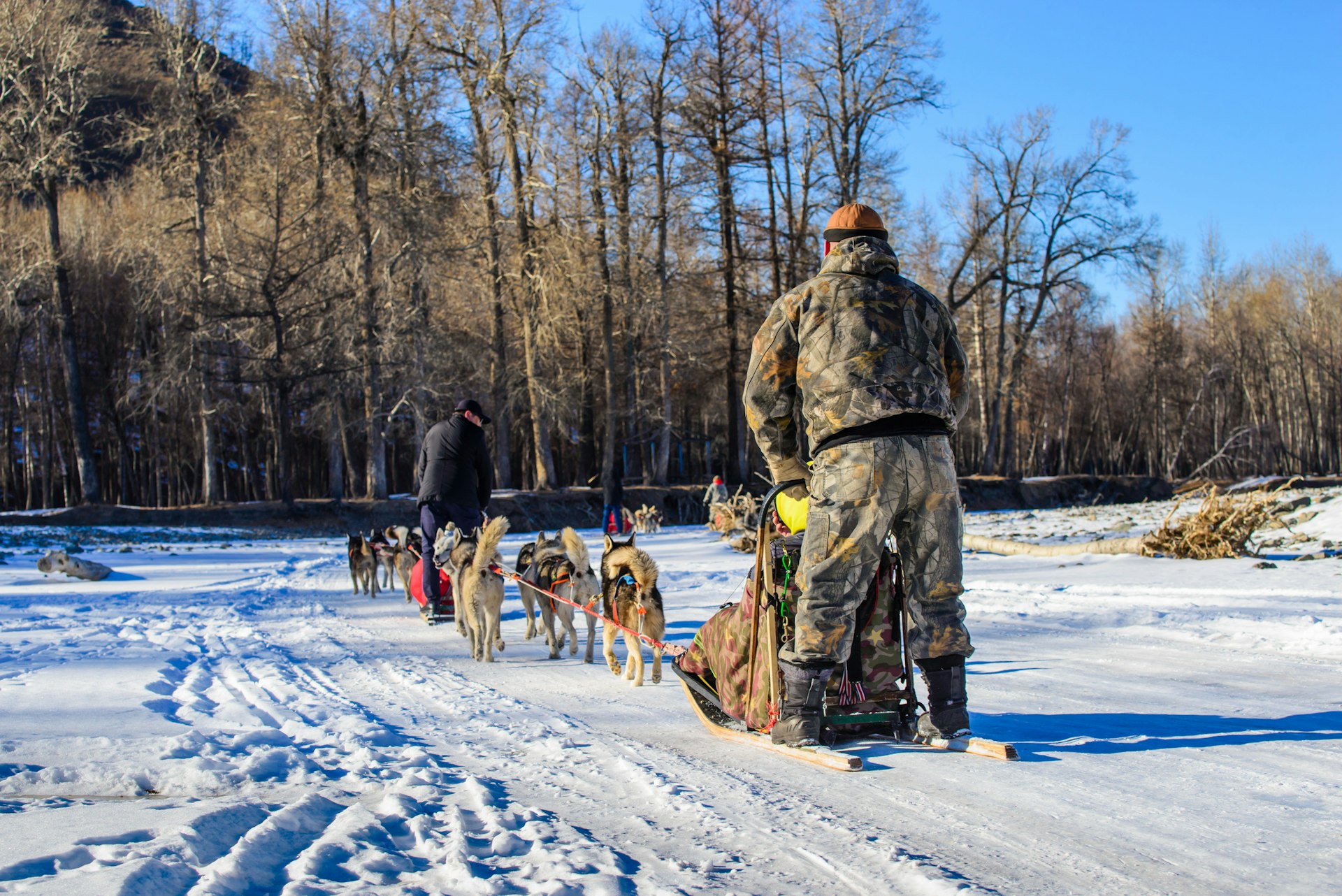
November to March brings winter festivals, snow sports and extreme cold
November is when things start to get really cold! But don’t let that stop you; instead our advice is to wrap up warm and dive in. There are plenty of highlights to take in, including cultural festivals and snow sports, and winter can bring price reductions for flights and accommodation, but not massive savings.
February is particularly good for traditional winter events, with both the Khatgal Ice Festival and Ulaanbaatar Winter Festival showcasing unique sports such as ice ankle-bone shooting (a fascinating game of skill played with animal bones), ice archery, and horse sledding competitions, alongside more familiar winter activities such as ice skating, ice fishing and dog sledding.
Tsagaan Sar, the Lunar New Year, is also in February, when you may be lucky enough to celebrate the festivities with local families. There’s also the Bulgan Camel Festival, the Gobi’s biggest event, when crowds flock to Ömnögovi for camel polo, camel races, camel shearing and other activities involving these prized beasts of burden.
November to March is also the time to get involved in snow sports, including downhill skiing at Ulaanbaatar’s Sky Resort . Dog sledding tours can easily be arranged, along with long-distance skating on Khövsgöl Nuur lake.
One word of warning, however. December and January can bring not only bitterly cold temperatures to Ulaanbaatar , but also horrendous pollution. If there are any months to avoid, we would single out January, unless you’re particularly hardy.
Explore related stories
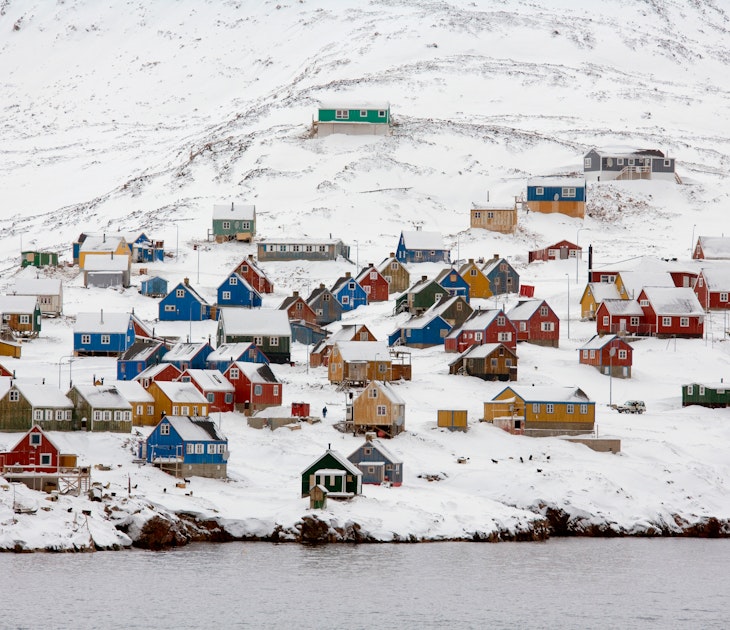
Wildlife & Nature
Dec 1, 2023 • 6 min read
How about chilling out – truly – on your next big trip? These are the coldest, most beautiful places to visit in the world.

Aug 30, 2023 • 9 min read
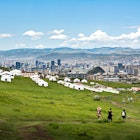
Aug 25, 2023 • 7 min read
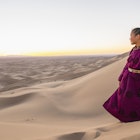
Aug 20, 2023 • 7 min read
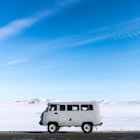
Sep 30, 2023 • 6 min read

Sep 28, 2023 • 4 min read
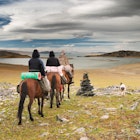
Aug 12, 2023 • 6 min read

Oct 24, 2021 • 4 min read

Oct 21, 2019 • 4 min read

Sep 23, 2019 • 7 min read
- Festival & Events
- Monthly Special tours
- Travel Planner

- Tours Day & Short Trips Winter tours Beauty of Mongolia tours Adventure Tours Comfort Tours Cultural Tours Special Tours
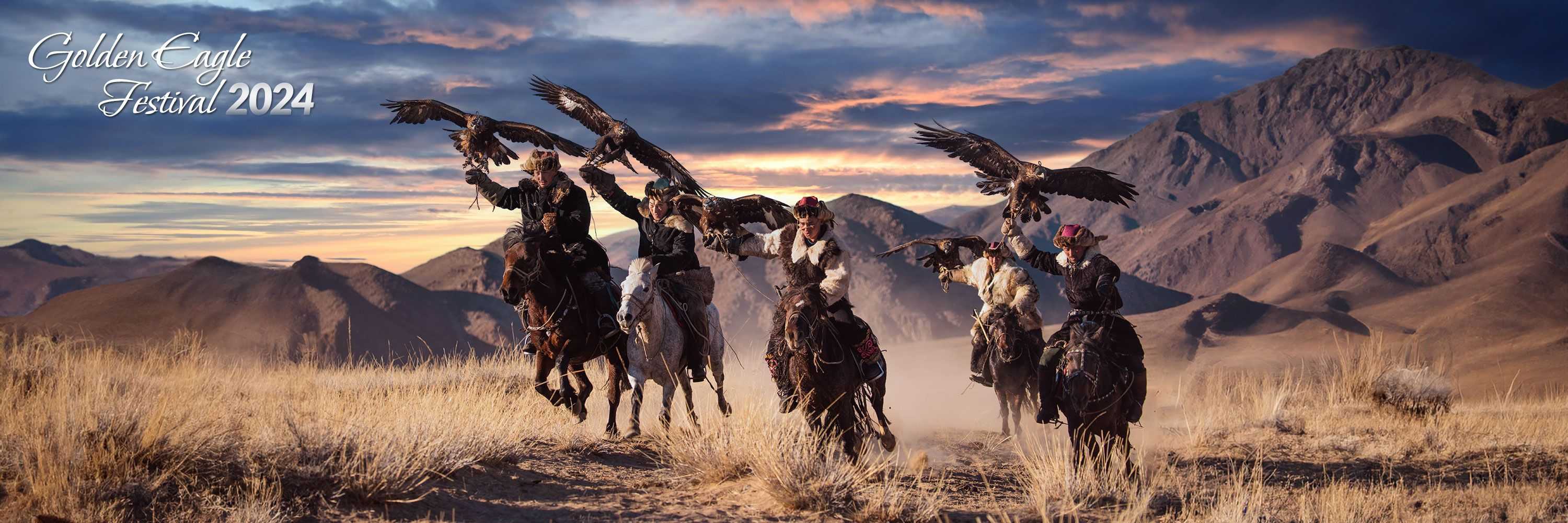
Why travel to Mongolia?
If you're looking for a unique and off-the-beaten-path travel destination in 2023, then traveling to Mongolia should definitely be on your list. This incredible country is known for its rich nomadic culture and stunning natural landscapes, including the vast Gobi Desert.
One of the top reasons to travel to Mongolia in 2023 is to experience the country's fascinating nomadic culture. Mongolia has a deep history of nomadic herding, and many locals still live this traditional lifestyle today. You can stay with a nomadic family and learn about their customs, cuisine, and way of life, which is a rare and unforgettable experience.
Another highlight of traveling to Mongolia is exploring the Gobi Desert, one of the world's largest deserts. Here, you can hike through the stunning landscapes, spot rare wildlife like wild two-humped Bactrian camels and Gobi bears, and camp under the starry sky. Juulchin Tours Mongolia offers a range of exciting activities, including camel riding, dune surfing, and exploring ancient archaeological sites.
There are also many other beautiful destinations worth visiting, including the capital city of Ulaanbaatar, the stunning Lake Khuvsgul, and the historic city of Karakorum. You can join tours that take you to these places and more, with expert guides who can share their knowledge and insights about the country.
Overall, traveling to Mongolia offers a unique and unforgettable experience that is unlike any other. With its fascinating nomadic culture, stunning natural landscapes, and exciting activities, it's no wonder that Mongolian tourism is growing in popularity.

Local experts

Satisfied customers

Years of experience

Excellent tours
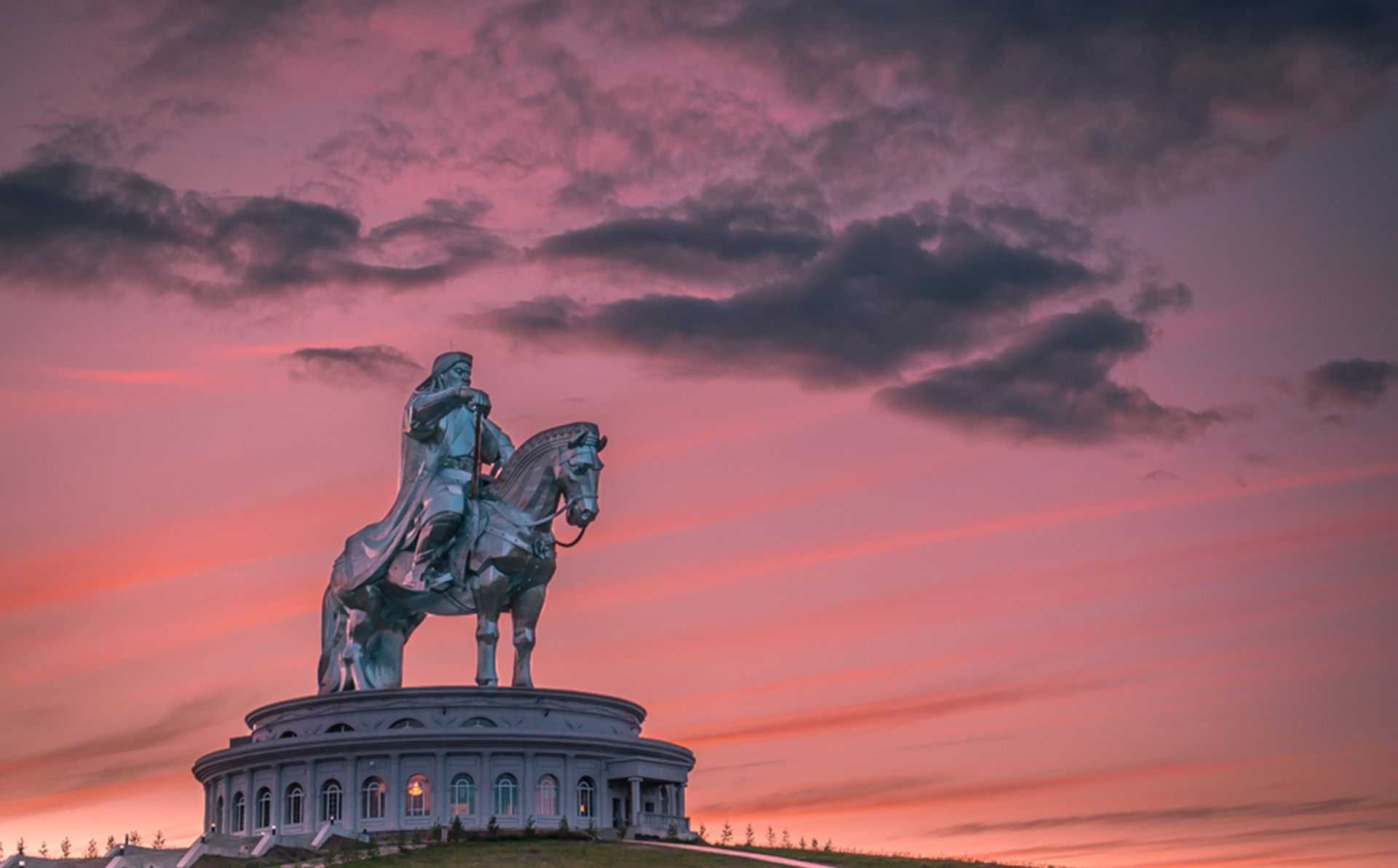
Chinggis Khaan statue
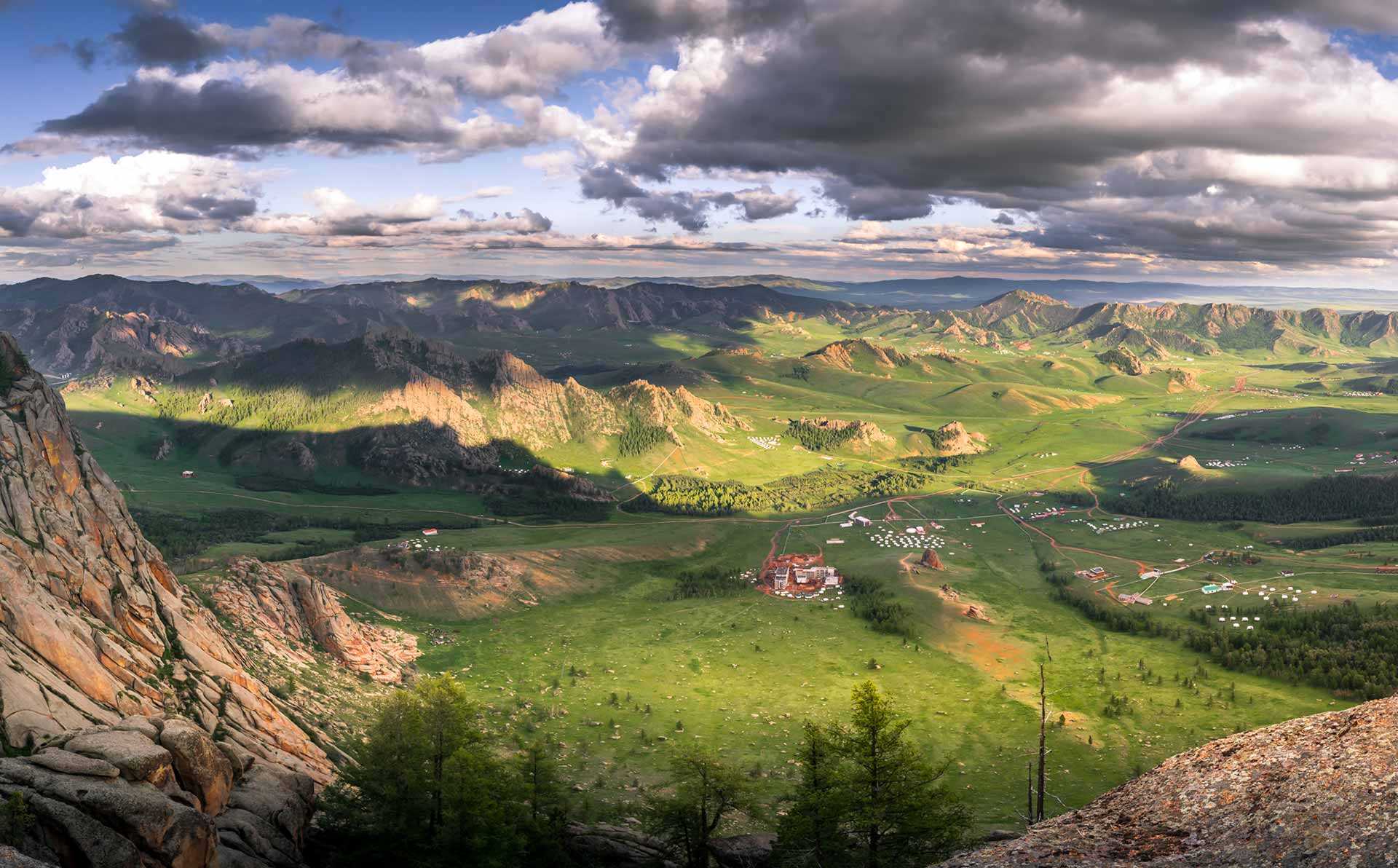
13th Century Complex - Terelj NP – Khustai NP – Elsen Tasarkhai

From exploring the Gobi desert to witnessing the traditional Naadam festival, Mongolia offers a wide range of activities for adventurous travelers. However, it can also be challenging due to its remote location and harsh climate, so it's important to plan and prepare accordingly. Overall, Mongolia is a destination that is definitely worth visiting for those seeking an unforgettable and off-the-beaten-path travel experience.

- Tour packages
- Tailor Made
- Trip Calendar
- How to get to Mongolia
- Book train ticket
- Book cheap air ticket to Mongolia
- Best time to travel
- Tourist Sim card
- Mongolia Visa information
- What to pack
- Travel Insurance
- List of Mongolian Embassy
- Company profile
- Clients Feedback
- Job Vacancy
- Terms & conditions
- Privacy Policy
- Practical Information
- Destinations
- Things To Do
- Culture, Art & History
- Nature & Geography
- People & Society

- Practical information
- Gobi Desert
- Western Mongolia
- Eastern Mongolia
- Central Mongolia
- Northern Mongolia
- Ulaanbaatar
- Around Ulaanbaatar
- Weather Forecast
How it began

Latest blogs

Mongolia Tours
Discover Mongolia provide a large number of tours and packages, all of them designed with the utmost consideration into what travelers like you want most out of their trip.
Destination

- See the fabulous Great Gobi Desert
- Visit historic Kharkhorin and Erdene Zuu
- Understand the nomadic lifestyle

- Mongolian top attractions
- Enjoy Bactrian camel ride
- The nomadic lifestyle, culture, and tradition

- More cultural and more historical
- Orkhon Valley - UNESCO World Natural Heritage
- Visits to 2 Beautiful National Parks

- Mongolian top attractions
- Local Naadam Festival
- Explore nomadic lifestyle, culture, and tradition

- Visit historic Kharkhorin and Erdene Zuu
- Experience the nomadic lifestyle

- See the fabulous Khongor Sand Dunes
- Visit the amazing Vulture (Eagle) Gorge
- Stop at Bayanzag, the home of dinosaurs

- Visit the highest Mongolian mountain range
- Trek across the Potanin glacier
- Mingle with the local Kazakh and Tuvan people

- Visit the majestic Chinggis Khaan statue
- Be amazed by the Erdene Zuu monastery
- Visit the amazing Elsen Tasarkhai oasis

- See relics of the Gobi dinosaurs
- Visit historic Kharkhorin and Ongi cities
- View the majestic wild Przewalski horses

- Naadam - UNESCO World Cultural Heritage
- Visit Great Gobi Desert & Terelj NP
- Best time to experience Mongolia

- Come and pet the Golden Eagles
- Watch them hunt their prey
- Visit the amazing Altai Mountain Landscape

- Enjoy Eagle festival
- Discover the Beautiful Altai Mountains
- Meet the Kazakh people
Need Help Planning Your Vacation?

Since 2004, we have been helping people the world over to enjoy unforgettable adventures to our homeland, and we do it all with expertise and passion.

- Best seller tours
- Tailor made tour
- A day tours
- Join in tours
- Private tours
- Best Time to Travel
- Mongolian Visa Information
- Hotel booking
- Flight ticket booking
- Train ticket booking

Inner Mongolia Travel Guide — How to Plan a Trip
Inner Mongolia lies in central North China. Its geographical position has granted Inner Mongolia a richness of travel destinations that attract a large number of visitors to see its spectacular natural scenery of grasslands, deserts, lakes, and forests, the rich legacy of Genghis Khan and the Mongol Empire, and the ethnic culture of nomadic herders.
Content Preview
- Features of Inner Mongolia
- Top Reasons to Visit
- Best Time to Visit
- Top Things to Do in Inner Mongolia
- Naadam Grassland Festival
- Inner Mongolia and (Outer) Mongolia
How to Plan an Inner Mongolia Tour
Where to stay in inner mongolia.
- Recommended Inner Mongolia Tour
Inner Mongolia Travel Tips
- Inner Mongolia Attractions Map
The Features of Inner Mongolia
Inner Mongolia was the first region in China to achieve the status of an autonomous ethnic region .
Covering an area of 1.18 million square kilometers (455,000 square miles), it is the third-largest province and borders both Russia and Mongolia (Outer Mongolia).
With Hohhot as its capital city, Inner Mongolia is also the widest region in China with a total distance of more than 2,500 kilometers (1,500 miles) from east to west, and it has an average elevation of over 1,000 meters (3,300 feet) above sea level.
Top Reasons to Visit Inner Mongolia
- Inner Mongolia is fascinating for its unique natural landscapes : grasslands, deserts, forests, and lakes.
- Inner Mongolia has a long history, and it is also the birthplace of Genghis Khan .
- Inner Mongolia is the place where you can experience the ethnic culture and traditional festivals of the Mongols .
Cannot wait to visit Inner Mongolia? Contact our Inner Mongolia expert for a customized tour.
- 5-Day Grassland and Desert Tour with Nomadic Life Experience
- 8-Day Hohhot–Ordos Tour with Hiking, Camping, and Culture
Inner Mongolia Weather — the Best Time to Visit
The climate of Inner Mongolia is cool, dry, temperate, and continental due to its high elevation and distance from the ocean. It has four distinct seasons.
Spring (April to June) is windy and temperatures can rise unexpectedly.
Summer (July to August) is warm and short, with most of Inner Mongolia's modest rainfall. The hottest month is always July with average daily highs of 30°C (86°F).
Temperatures in autumn (September to October) drop sharply with frosts.
Winter (November to March) is long and freezing cold with the average daily temperatures ranging from -12°C to -1°C (12–33°F). Its extreme minimum temperature, found in the coldest village in China, is around -50°C (-58°F).
In general, the best time to tour Inner Mongolia is from July to September when the temperature is most comfortable. The grasslands are green during this time and it is also the best time to take a desert hiking tour. Besides, the Naadam Grassland Festival is held in summer.
More on Inner Mongolia Weather >>>
The Naadam Grassland Festival
Naadam Grassland Festival is the biggest annual traditional Mongolian celebration that is held in summer when the grass is green, and the livestock are strong.
The festival's full name is Eriyn Gurvan Naadam (naadam means 'entertainment' in Mongolian) or 'Three Manly Games', which are horse racing , archery , and wrestling .
Besides rousing sports, you can also experience the folk music and dancing and try traditional Mongolian food .
More on Naadam Grassland Festival >>>
4 Top Things to Do in Inner Mongolia
1. enjoy vast photogenic deserts.
Vast expanses of desert that extend throughout Inner Mongolia. Some of the famous deserts include the Gobi Desert, Badanjilin Desert, Tenger Desert, and Resonant Sand Bay (Xiangsha Wan).
Populus Euphratica Forest in Ejina, cannot be missed if you visit Badanjilin Desert in October. From early to mid- October, the leaves turn yellow and the whole forest looks like a golden fairytale world.
- 5-Day Xilamuren Grassland and Kubuqi Desert Tour
- 6-Day Kubuqi Desert Tour with Hiking and Camping
2. Appreciate the Diamond-Like Lakes
Inner Mongolia also has famous freshwater lakes in the northeast, such as the greenish Hulun Lake and Lake Buir . From November to March, you may have a chance to watch ice fishing.
3. Be a Nomad in the Expansive Grasslands
There are large areas of grassland all over the province.
The Hulunbuir Grasslands in the northeast are among the best in China, while the Xilamuren Grassland and Huitengxile Grassland are more popular among visitors due to their convenient location from Hohhot.
- 5-Day Xilamuren Grassland Tour with Nomadic Life Experience
- 8-Day Hohhot–Ordos Tour with Mongolian Culture
4. Experience the Brilliant Culture
Inner Mongolia has a long history and brilliant culture . There are many historical attractions, such as Dazhao Lamasery, Zhaojun Tomb, Wudangzhao Monastery, and the Genghis Khan Mausoleum.
More on Top Things to Do in Inner Mongolia >>>
Getting to Inner Mongolia by Air
Currently, Inner Mongolia has around 10 airports connecting with major cities of China like Beijing, Shanghai, Guangzhou, Kunming, etc. Among them, the airports in Hohhot, Baotou, Ordos, Hailar, and Manzhouli are frequently used.
International flights to Ulan Bator of Mongolia and Chita of Russia are available from Hohhot and Baotou.
Getting to Inner Mongolia by Train
Bullet trains from Beijing take only 2½ hours to Hohhot and 4 hours to Baotou, making travel to Inner Mongolia very convenient. More on Inner Mongolia Train Schedules >>>
Getting around Inner Mongolia
The cities of Wulanchabu, Hohhot, and Baotou are connected by bullet trains .
Direct flights are available between the major tourist cities of Inner Mongolia. For traveling from the west (deserts) to the north (grasslands and lakes) of Inner Mongolia, it is wise to take intra-provincial flights.
For traveling in central Inner Mongolia (Hohhot–Baotou–Ordos), a private transfer is recommended as major sightseeing opportunities abound along the way. Contact us if you are looking for tour services for this golden triangle route.
The most popular tourist cities in Inner Mongolia are:
You will have plenty of choices of hotels in the popular tourist cities of Hohhot, from international brands to local-standard ones.
To experience the traditional life of the nomads, Mongolian yurts are available if you travel to the grasslands.
Hotel room availability is rather tight in summer and during festival periods. It is wise to book rooms in advance .
We are happy to recommend the most suitable hotels for your worry-free stay in Inner Mongolia. All you need to do is to tell us your hotel preferences.
Recommended Inner Mongolia Tour Plan:
Day 1: Arrival in Hohhot
We will arrange a private airport/station to hotel transfer for you.
Day 2: Grassland Experience
Explore the Xilamuren Grassland, and stay overnight in a yurt on the grassland.
Day 3: History and Cultural Experience in Hohhot
Visit Dazhao Lamasery and admire the silver Buddha statue. Tour Inner Mongolia Museum for the history and ethnic culture of Inner Mongolia and its extensive collection of massive dinosaurs, mastodon, and other fossilized remains from the Mesozoic period.
Day 4: Desert Fun
Travel from Hohhot to Ordos to explore Resonant Sand Bay with camel riding and other entertainments in the desert.
Day 5: A Touch of Genghis Khan
Take a visit to Genghis Khan's Mausoleum and learn more about his legend. Then depart from Ordos.
More on 5-Day Xilamuren Grassland and Kubuqi Desert Tour >>>
If you are not interested in this itinerary, please tell us your interests and requirements and we will tailor-make an Inner Mongolian tour based on your own preferences.
- The temperature difference is large between morning and evening in the grasslands. Please bring warm coats, trousers, and walking boots.
- Inner Mongolia is at a high elevation and ultraviolet rays are strong there, so please bring sunglasses, a hat, and sunblock with you.
- Inner Mongolian food often tastes salty, oily, and not very spicy. The stable foods there are beef, mutton, and noodles.
- It is traditional for Mongols to serve guests with liquor and by presenting a hada (a ceremonial scarf), which is a way to express their respect towards guests. Guests should take the bowl of liquor quickly. It is rude to reject the liquor. However, if you are not good at drinking, it is okay to just take a sip. Drinking the liquor means you accept the pure kindness of the host.
Inner Mongolia Attractions Map Inner Mongolia and (Outer) Mongolia
What is the difference between inner mongolia and mongolia.
The answer is quite simple politically: Inner Mongolia is a province of China while Mongolia is another country , though ethnically and linguistically they are both Mongolian areas.
The official name of Inner Mongolian is Inner Mongolia Autonomous Region, which is equal in status to a province of China. The capital city is Hohhot.
Mongolia is always referred to as Outer Mongolia in China and is sandwiched between China and Russia. The capital is Ulaanbaatar.
The History of the Mongols
The Mongol people are one of the minority groups in China and the main ethnic group of Outer Mongolia. The Mongol people were nomadic tribes in ancient China times . They hunted and grazed on the vast Mongolian grasslands.
When the people in this region were under the cruel reign of the Jin Dynasty (1115–1234), they were devastated by frequent warfare between different tribes and hungered for a unified and peaceful life. Although a cruel leader, Genghis Khan did end the tribal fighting, unified the Mongols, and conquered many countries, including much of China, to create the Mongol Empire. At this time, China entered into a new era of foreign control, the Yuan Dynasty (1271–1368), with Beijing as its capital city.
In 1368, the Yuan Dynasty was overthrown by the Ming Dynasty (1368–1644), and the Mongolians retreated to the Mongolian Plateau. After conquering the Ming Dynasty, the Manchurian Qing Dynasty (1644–1912), with the help of the subordinate Mongolians, reunited the whole Mongolian region and China under one rule .
Why is Inner Mongolia part of China, but not Mongolia?
Both Inner Mongolia and (Outer) Mongolia once belonged to China. So why and how did Mongolia separate from China? There are two main reasons.
1. The Weakened State of China
During the Qing Dynasty (1644–1912), China was a huge empire under foreign (Manchu) rule. It took a lot of energy and financial resources to manage and defend such a large area land including remote Mongolia. After the Opium Wars (1860), the Qing Dynasty was in debt and also had to contend with civil unrest and external pressures, mainly from Russia and Japan.
By the end of the Qing Dynasty, China's control over Mongolia had weakened and the desire for independence in Mongolia was also very great. Finally, taking advantage of the collapse of the Qing government and the fact that a new government had not yet been established, Khanate-controlled Outer Mongolia was able to separate in 1911.
2. The Strength of Russia and Revival of China
As the Qing Dynasty waned, Russia became very powerful, and it was with the help/control of Russia that Outer Mongolia declared its independence in 1911 and maintained it.
During the Interwar Period, Republic of China forces were defeated in Outer and Inner Mongolia, and the west of Inner Mongolia also came under the control of Russia while Japan took control of its east.
After World War II , Japan and Russia were ousted from Inner Mongolia and it returned to Chinese control. In 1949, the People's Republic of China and the Soviet Union agreed that (Outer) Mongolia would maintain its independence, and so it has.
- 8-Day Hohhot–Ordos Tour with Mongolian History and Culture
Touring Inner Mongolia with China Highlights
Being the third largest province of China with abundant travel opportunities, you might wonder where to start, what to include in your limited stay, or how to plan a fulfilling exploration of Inner Mongolia. We are ready to provide a unique and customized solution for you.
Here are our most popular Inner Mongolia tours for inspiration:
- 5-Day Inner Mongolia Grass & Sand with Nomadic Life Experience
- 6-Day Inner Mongolia Wild Heartlands with Hiking and Camping
You deserve a tailor-made Inner Mongolia tour !
- 2-Week Private China Tour: Beijing–Xi'an–Lhasa-Shanghai
- 12-Day China Silk Road Tour from Xi'an to Kashgar
- 11-Day China Classic Tour
- 14-Day China Natural Wonders Discovery
- 15 Best Places to Visit in China (2024)
- Best (& Worst) Times to Visit China, Travel Tips (2024/2025)
- How to Plan a 10-Day Itinerary in China (Best 5 Options)
- 8 Days in China: Top 15 Tours and Itineraries (2024/2025)
- China Weather in January 2024: Enjoy Less-Crowded Traveling
- China Weather in February 2024: Places to Go, Costs, and Crowds
- China Weather in March 2024: Destinations, Crowds, and Costs
- China Weather in April 2024: Where to Go (Smart Pre-Season Pick)
- China Weather in May 2024: Where to Go, Crowds, and Costs
- China Weather in June 2024: How to Benefit from the Rainy Season
- China Weather in July 2024: How to Avoid Heat and Crowds
- China Weather in August 2024: Weather Tips & Where to Go
- China Weather in September 2024: Weather Tips & Where to Go
- China Weather in October 2024: Where to Go, Crowds, and Costs
- China Weather in November 2024: Places to Go & Crowds
- China Weather in December 2024: Places to Go and Crowds
Get Inspired with Some Popular Itineraries
More travel ideas and inspiration, sign up to our newsletter.
Be the first to receive exciting updates, exclusive promotions, and valuable travel tips from our team of experts.
Why China Highlights
Where can we take you today.
- Southeast Asia
- Japan, South Korea
- India, Nepal, Bhutan, and Sri lanka
- Central Asia
- Middle East
- African Safari
- Travel Agents
- Loyalty & Referral Program
- Privacy Policy
Address: Building 6, Chuangyi Business Park, 70 Qilidian Road, Guilin, Guangxi, 541004, China
- Mongolia Weather
- Travel Tips
- Famous Tourist Attractions
Things to Do
Transportation.
- Facts about Mongolia
- Mongolia Food
- Shopping & Souvenirs
- Travel Safety
- 5 Mongolia Festivals
Mongolia Travel Guide
Basic facts.
★ Top Destinations & Attractions
Ulaanbaatar: Genghis Khan Square, Zaisan Hill , Mongolian Natural History Museum, Lake Khovsgol , National Museum of Mongolia Sainshand: Gobi Desert Karakorum: Erdene Zuu Monastery , ruins of the ancient town of Karakorum
Best Time to Visit
The best time to visit Mongolia is from May to September, when the temperature is comfortable. However, winter clothing also should be prepared because of the strong wind and the difference in temperature between day and night. It is necessary to bring clothes like coats, wind coat, cotton and down jacket.
Things to Know before Mogolia Train Travel Destinations along Trans-Mongolia Route
It’s necessary to prepare enough mineral water because the water on grassland has a high salt and alkali content which is not easy to be adapted.
Most parts of the country are covered with grassy steppe, and the arable land is limited. The highest point is the Khuiten Peak, 4,653 meters (15,266 ft) high. With mountains to the north and the west and the Gobi Desert to the south, almost all nationals are nomadic and semi-nomadic. Lake Hovsgul is the most famous river in the country.

IMAGES
COMMENTS
5. Download podcasts and audiobooks for those long road trips. Mongolia is three times the size of France, and most roads are bumpy tracks, which translates to low average speeds even in a modern 4WD. Expect to spend hours bouncing along through vast, unchanging landscapes - beautiful but somewhat repetitive.
Outer mongolia travel. OUR TOURS. Central Mongolia and Gobi Desert. My drivers and I will pick you up from the Chinggis Khan airport, then take you to your hotel. If you are ready for adventure, we will go straight to the Gandan Monastery for Buddhist monks' morning chanting. Ninety percent of Mongolians are Buddhists followers.
Zanabazar, who was the first leader of Buddhism in Mongolia, founded the monastery and lived and meditated here, calling it the "Land of Happy Solitude.". There are several nearby temples and a meditation cave to explore. 7. Gobi Gurvansaikhan National Park. Best place for desert landscapes.
Culture: Inner Mongolia also has a rich cultural heritage, with influences from both Mongolian and Chinese traditions. Key Differences: Political Status: Outer Mongolia is an independent country, while Inner Mongolia is an autonomous region within China. Sovereignty: Outer Mongolia is a sovereign state, and its government operates independently ...
Wild Mongolia. Giorgia · Traveled August 2023. The trip was really inspiring and mind opening. The landscapes were beautiful, the people very kind. Our leader Tem was very knowledgeable and always ready to help us. This trip was so special, also thanks to him. Our driver Jagaa was nice and kept us safe during the many hours on the road.
When it comes to its museums and art galleries, Ulaanbaatar is truly blessed. It is well worth spending a couple of days trawling its extensive collections and artifacts: the Bogd Khan Winter Palace and Mongolia National Modert Art Gallery are particularly delightful to peruse. 5. Altai Tavan Bogd National Park.
Mongolia: Behind the scenes of our Best in Travel Video. Oct 30, 2023 • 3 min read. Mongolia has so much to offer travelers looking for wide open spaces, adventure and culture. Here's what it is like to travel there. Road Trips.
Outer Mongolia was a territory of the Manchu-led Qing dynasty (1691-1911). Its area was roughly equivalent to that of the modern state of Mongolia, which is sometimes called "North Mongolia" in China today, plus the Russian republic of Tuva.While the administrative North Mongolia only consisted of the four Khalkha aimags (Setsen Khan Aimag, Tüsheet Khan Aimag, Sain Noyon Khan Aimag and ...
Outer Mongolia was the name of a territory in the Manchu-led Qing dynasty of China from 1691 to 1911. It corresponds to the modern-day independent state of Mongolia and the Russian republic of Tuva.The historical region gained de facto independence from Qing China during the Xinhai Revolution.. While the administrative region of Outer Mongolia during the Qing dynasty only consisted of the four ...
Mongolia Tours & Trips. Mongolia is a land of nomads awaiting your adventure, camping out at night and trekking through the day. There's river rafting, mountain bike and motorcycle riding on tough offroad trails, and camel trekking through the Gobi Desert. There's also monasteries and ancient ruins to explore.
Mongolia is one of the world's largest landlocked countries, second only to Kazakhstan and is surrounded by two of the world's largest countries: China and Russia.It was the center of the Mongol Empire, the largest contiguous empire in world history.With only 1.7 people per square kilometre, Mongolia has the lowest population density of any independent country.
A Mongolian-American who grew up in New Jersey, Jalsa founded Nomadic Expeditions in 1992, using the proceeds of his successful construction business to bring tourism to a place—Outer Mongolia—that was once synonymous with the end of the earth.
It is easy to discern between the two for the following reasons. A: Outer Mongolia is a free and open country with a democratically elected government while. B: Inner Mongolia is a region (province) located in the Northern part of China and now considered part of China. Both were traditionally inhabited by the indigenous Mongolian peoples and ...
21 days visa-free: Philippines. 14 days visa-free: Hong Kong. 2 - Mongolia visa at an embassy: If you're not on the above list of countries, you should apply for your Mongolia visa at your nearest Mongolia embassy. To apply for a tourist visa, you'll need: Completed application form. 3.5×4.5cm photo.
Outer Mongolia was a territory of the Manchu-led Qing dynasty (1691-1911). Its area was roughly equivalent to that of the modern state of Mongolia, which is sometimes called "North Mongolia" in China today, plus the Russian republic of Tuva.While the administrative North Mongolia only consisted of the four Khalkha aimags (Setsen Khan Aimag, Tüsheet Khan Aimag, Sain Noyon Khan Aimag and ...
Travel to Mongolia on Blue Silk Travel's Mongolia tours. Encounter Mongolia's culture, nomadic heritage and natural beauty. menu Menu phone 1-800-225-0560 account_circle Log In. Coming Soon An Enhanced Online Experience for Travelers. Close Window. cancel. Tours. Small Group Journeys. 2024 Schedule. 2025 Schedule. Custom Travel. Booking.
Outer Mongolia[a] is the name of an historical territory of the Qing dynasty of China from 1691 to 1911. It corresponds to the modern-day independent state of Mongolia (sometimes called "Outer Mongolia" in China today) and the Russian republic of Tuva. ... Visit the complex museum and enjoy a panoramic view over Mongolian steppe from the ...
Mongolia Tours. Cultural Adventures in the Land of Genghis Khan. Witness the wrestling, archery, and wild horseback games of Naadam, meet the traditional eagle hunters at the Golden Eagle Festival, spend the night in a cozy felt yurt, and visit the Flaming Cliffs in the great Gobi Desert, where the world's first dinosaur egg was found. ...
June, July and August are Mongolia's warmest months, so this is the optimal time to hit the countryside. Under clear skies, you can experience nomadic hospitality as you traverse the grassy steppe by horse, foot, bike or 4WD before spending nights in ger (yurt) camps. June is a particularly good time to visit, right before the main tourist ...
Location. Europe office: Juulchin World GmbH, Knesebeckstraße 30, D-10623 Berlin, Germany (+976 72991212)Head office: Juulchin Tourism Corporation, Embassy Road, Ulaanbaatar 14-210, Mongolia (+976 72991212)© 2024 Juulchin LLC
Kharkhorin and South Gobi Tour (7 days) See relics of the Gobi dinosaurs. Visit historic Kharkhorin and Ongi cities. View the majestic wild Przewalski horses. 7 days. from: USD 1468. Mongolia Naadam Festival and Gobi Tour (8 days) Naadam - UNESCO World Cultural Heritage. Visit Great Gobi Desert & Terelj NP.
The Features of Inner Mongolia. Inner Mongolia was the first region in China to achieve the status of an autonomous ethnic region.. Covering an area of 1.18 million square kilometers (455,000 square miles), it is the third-largest province and borders both Russia and Mongolia (Outer Mongolia).. With Hohhot as its capital city, Inner Mongolia is also the widest region in China with a total ...
The best time to visit Mongolia is from May to September, when the temperature is comfortable. However, winter clothing also should be prepared because of the strong wind and the difference in temperature between day and night. It is necessary to bring clothes like coats, wind coat, cotton and down jacket. See also Mongolia Weather Ulaanbaatar ...